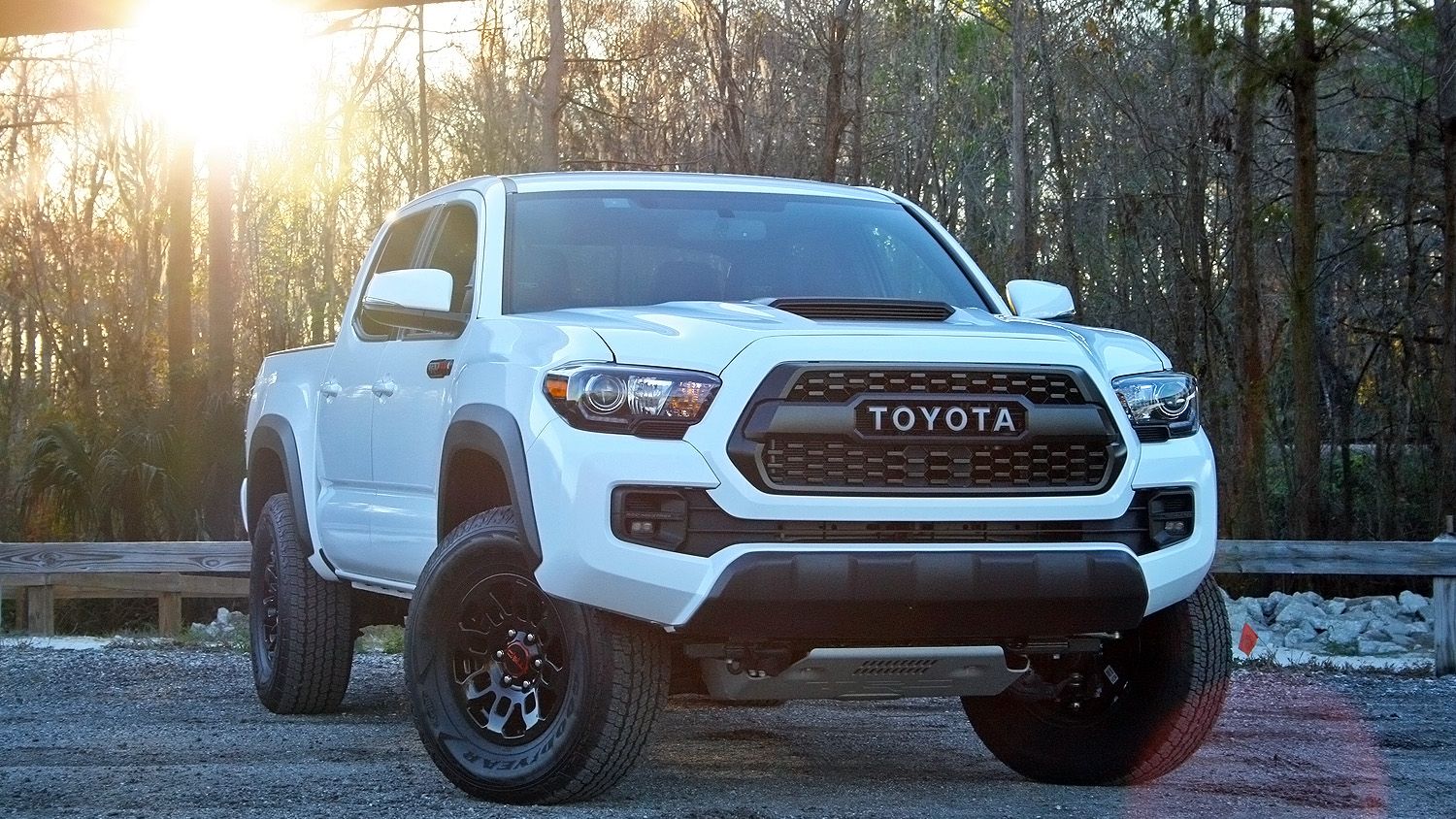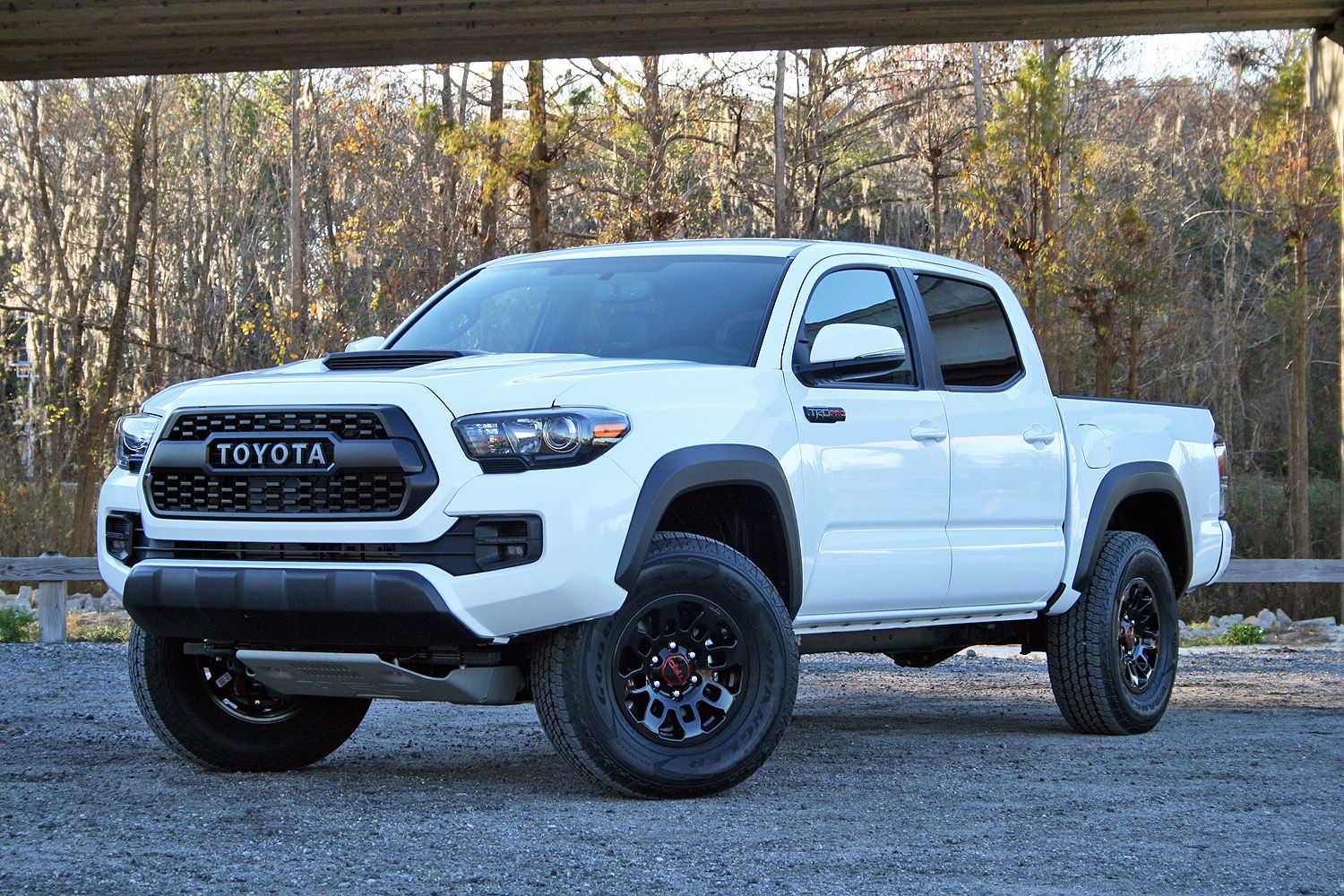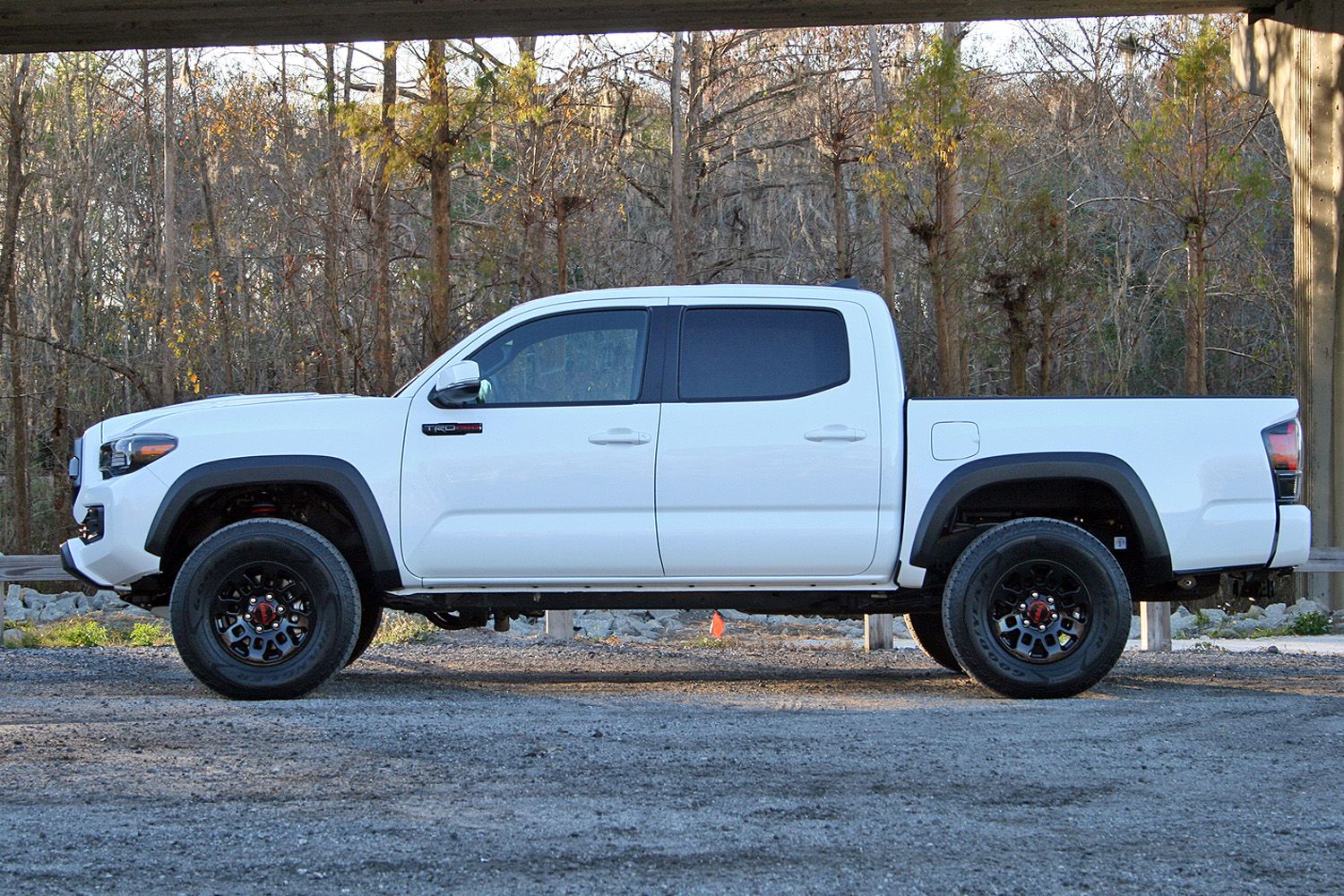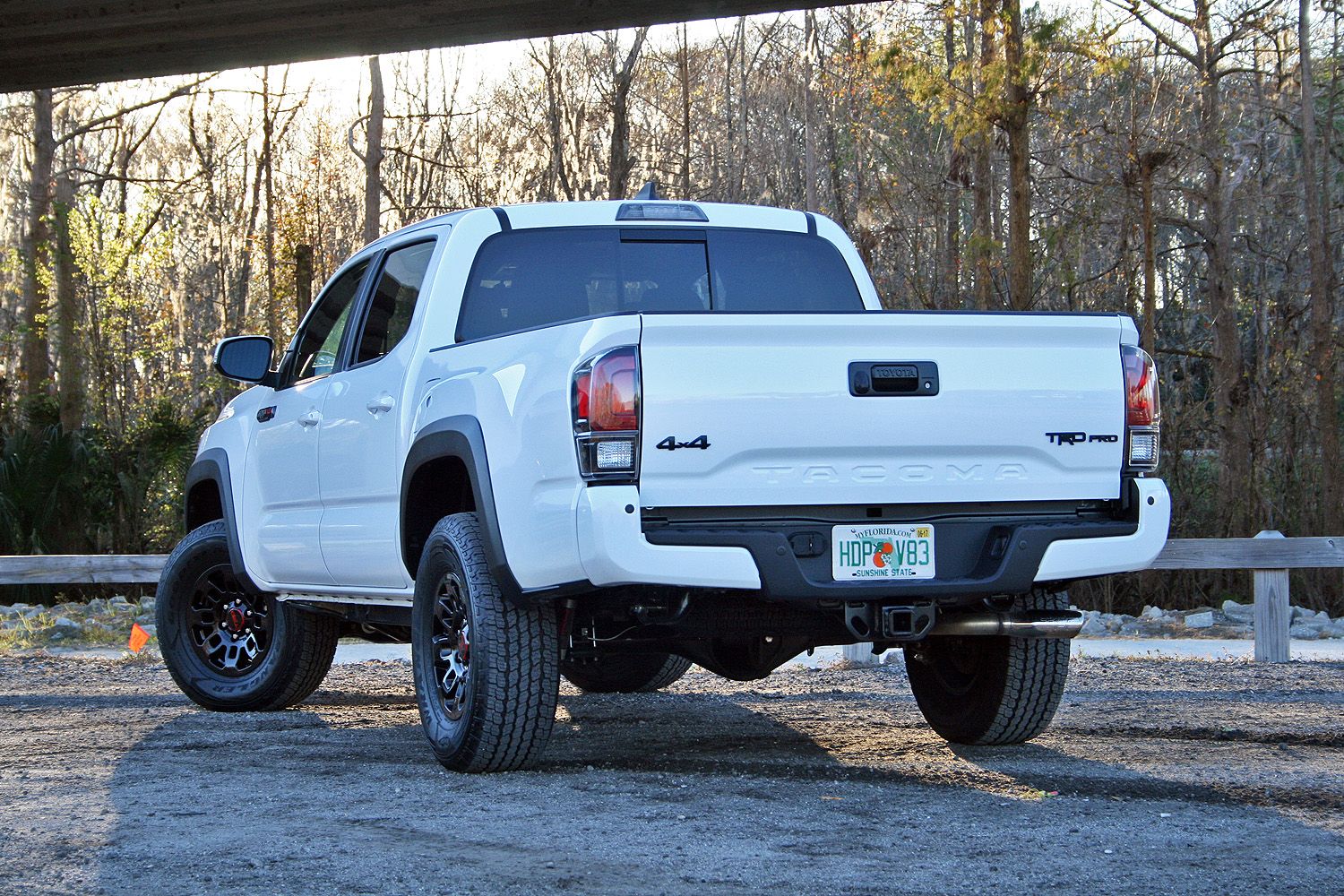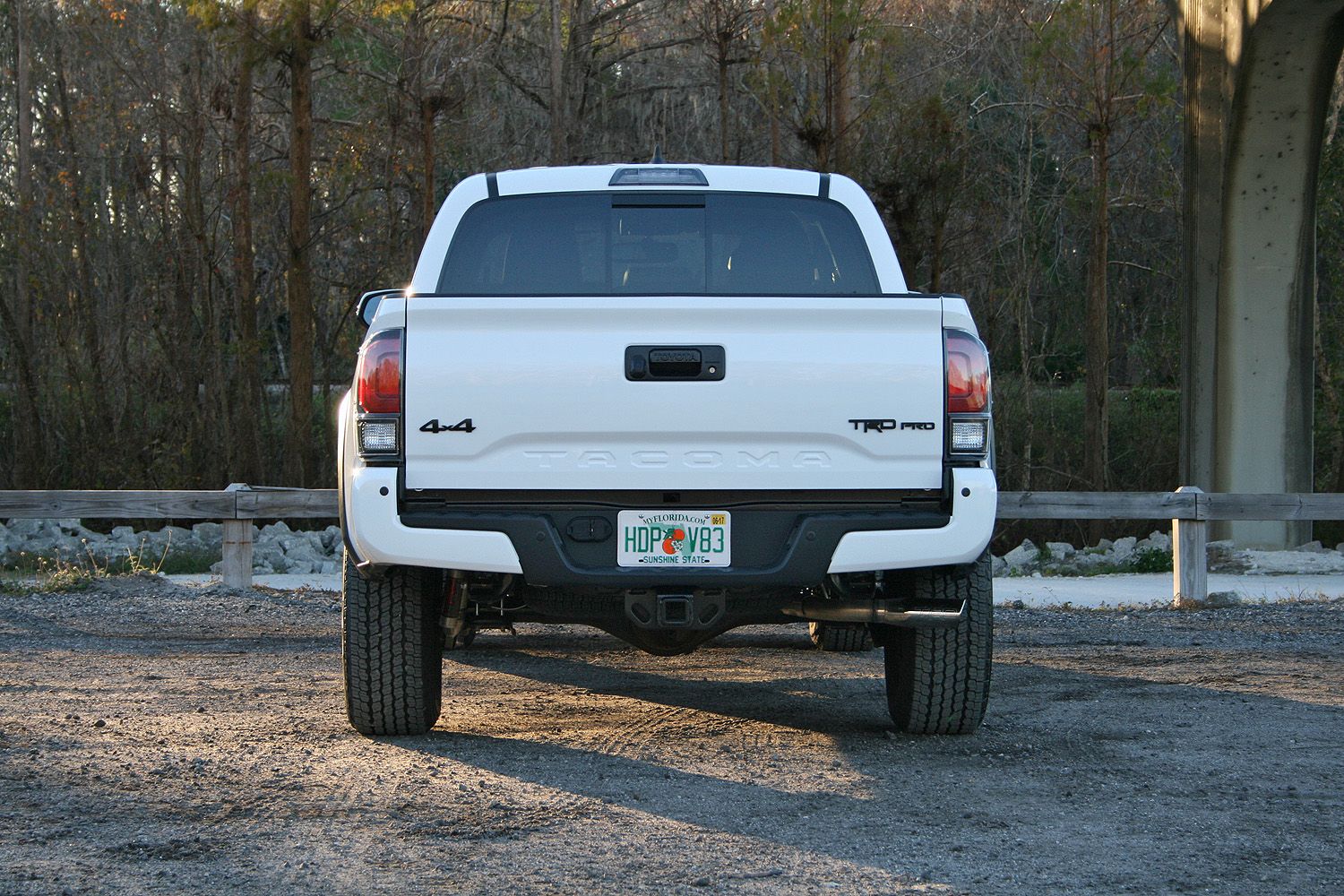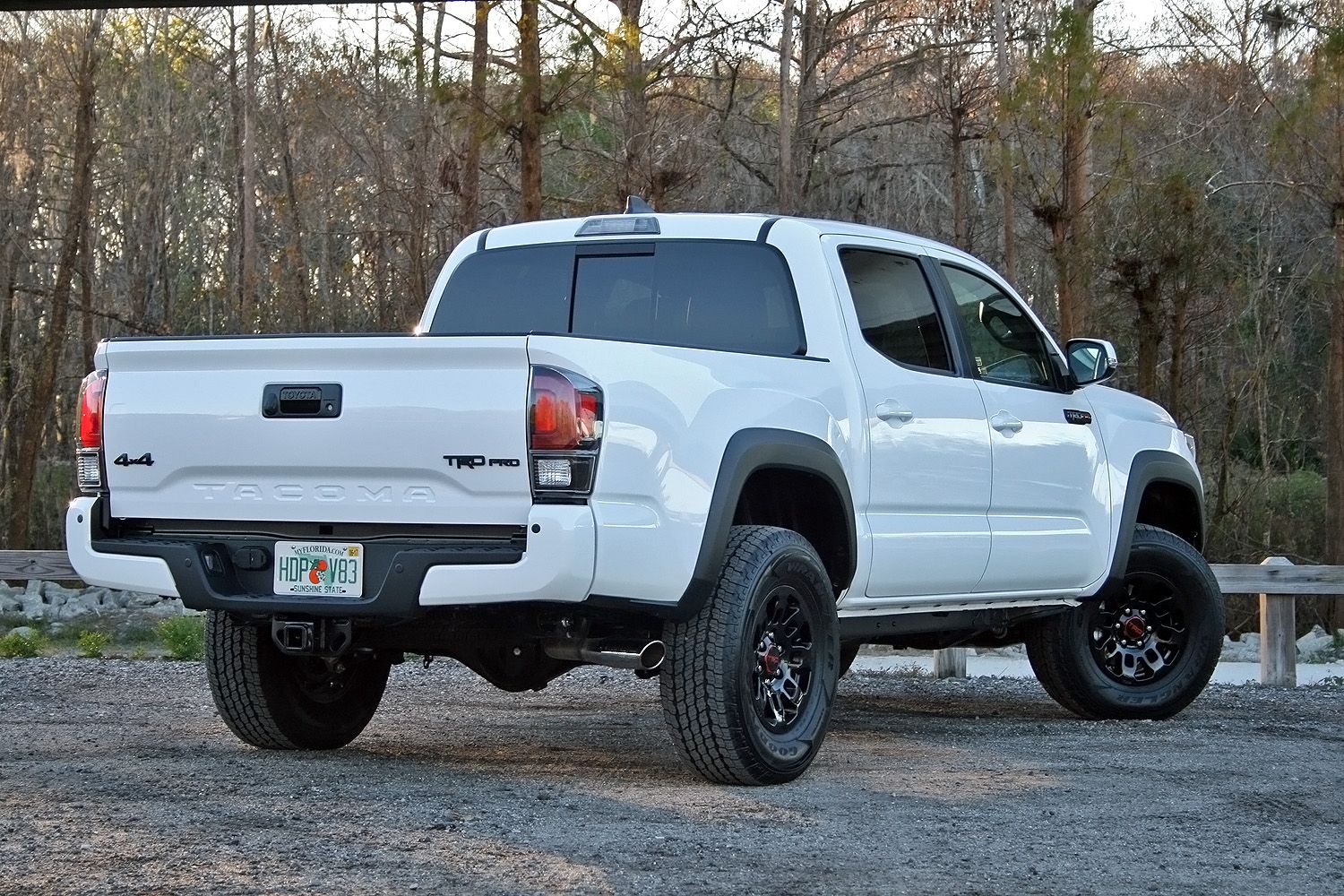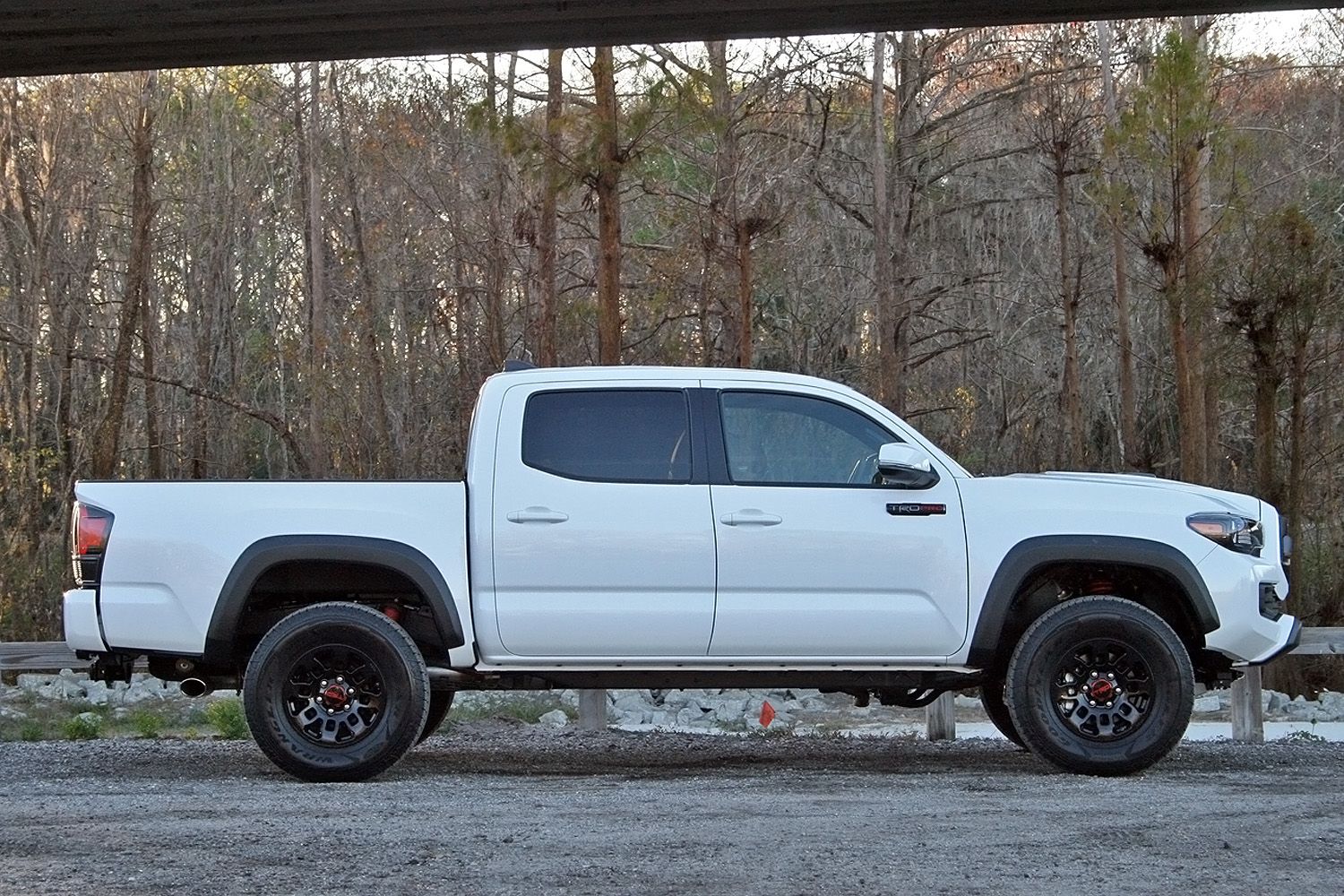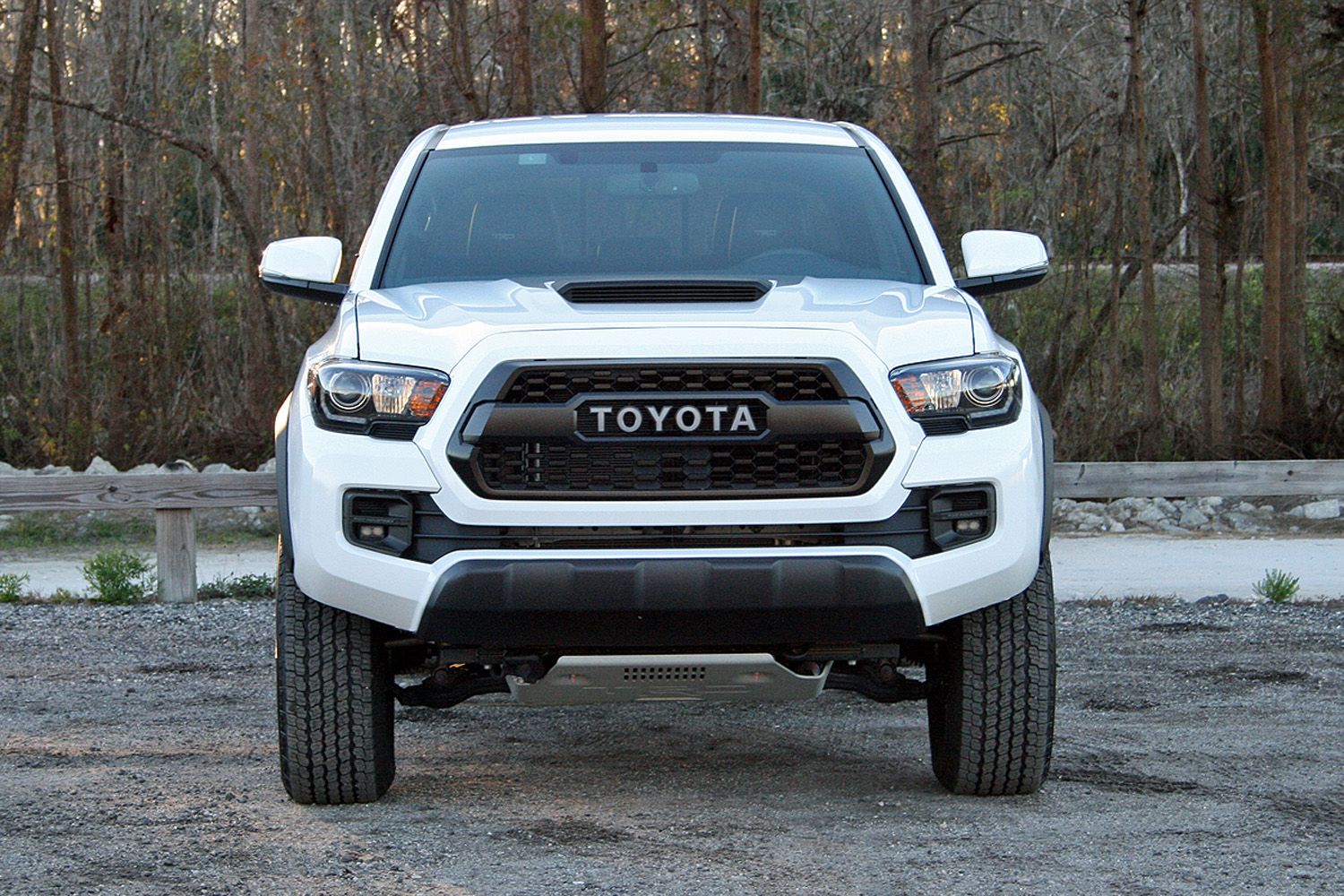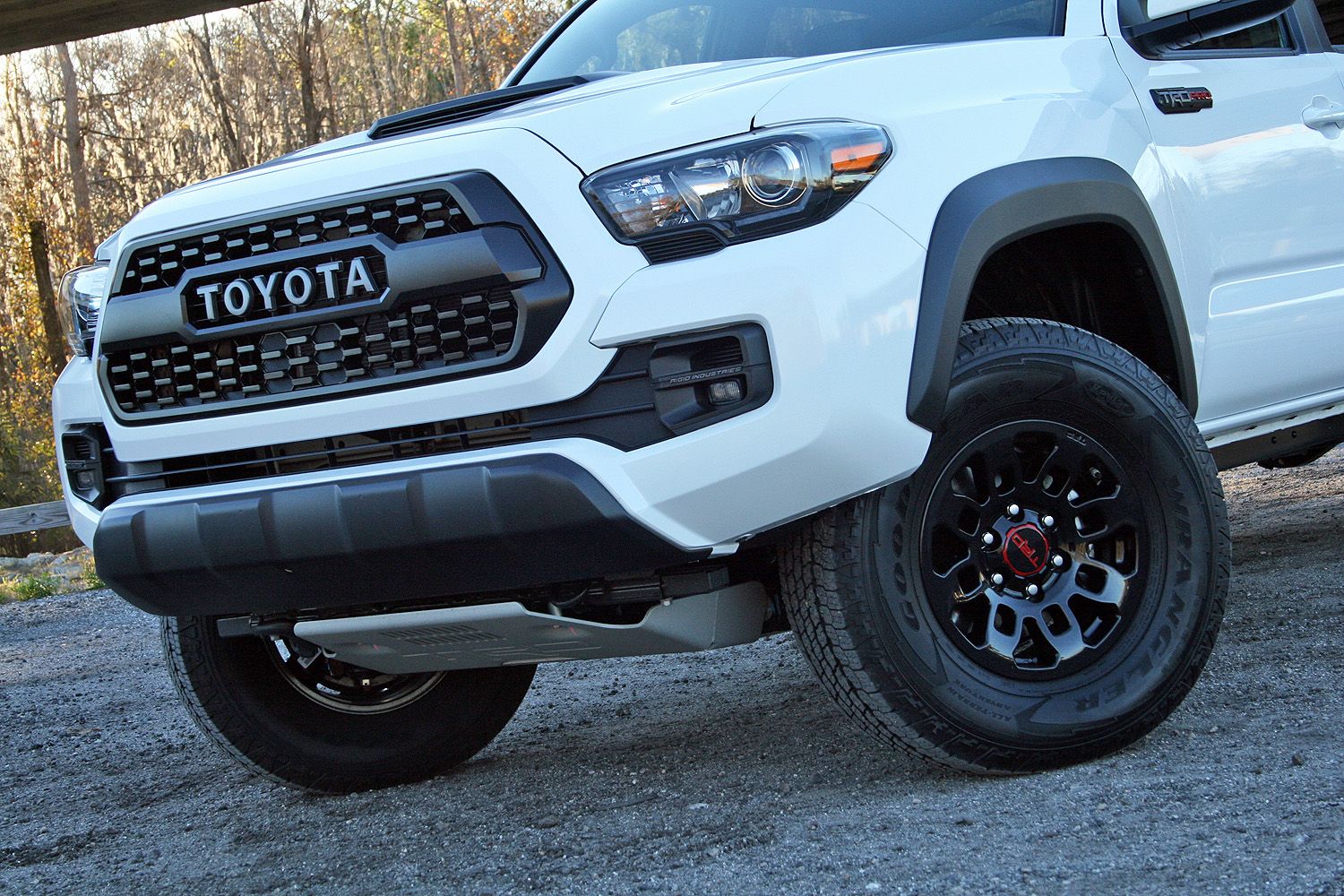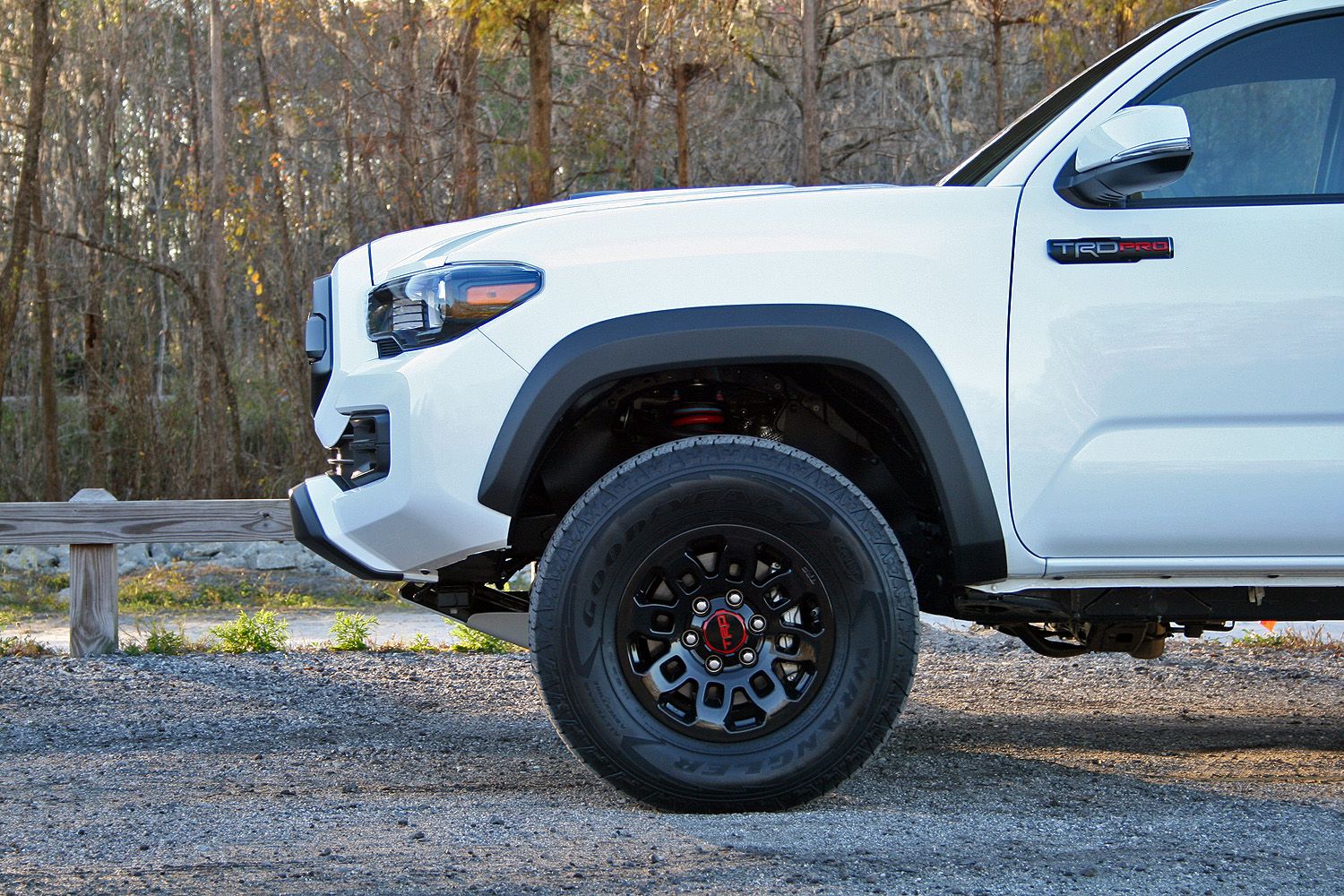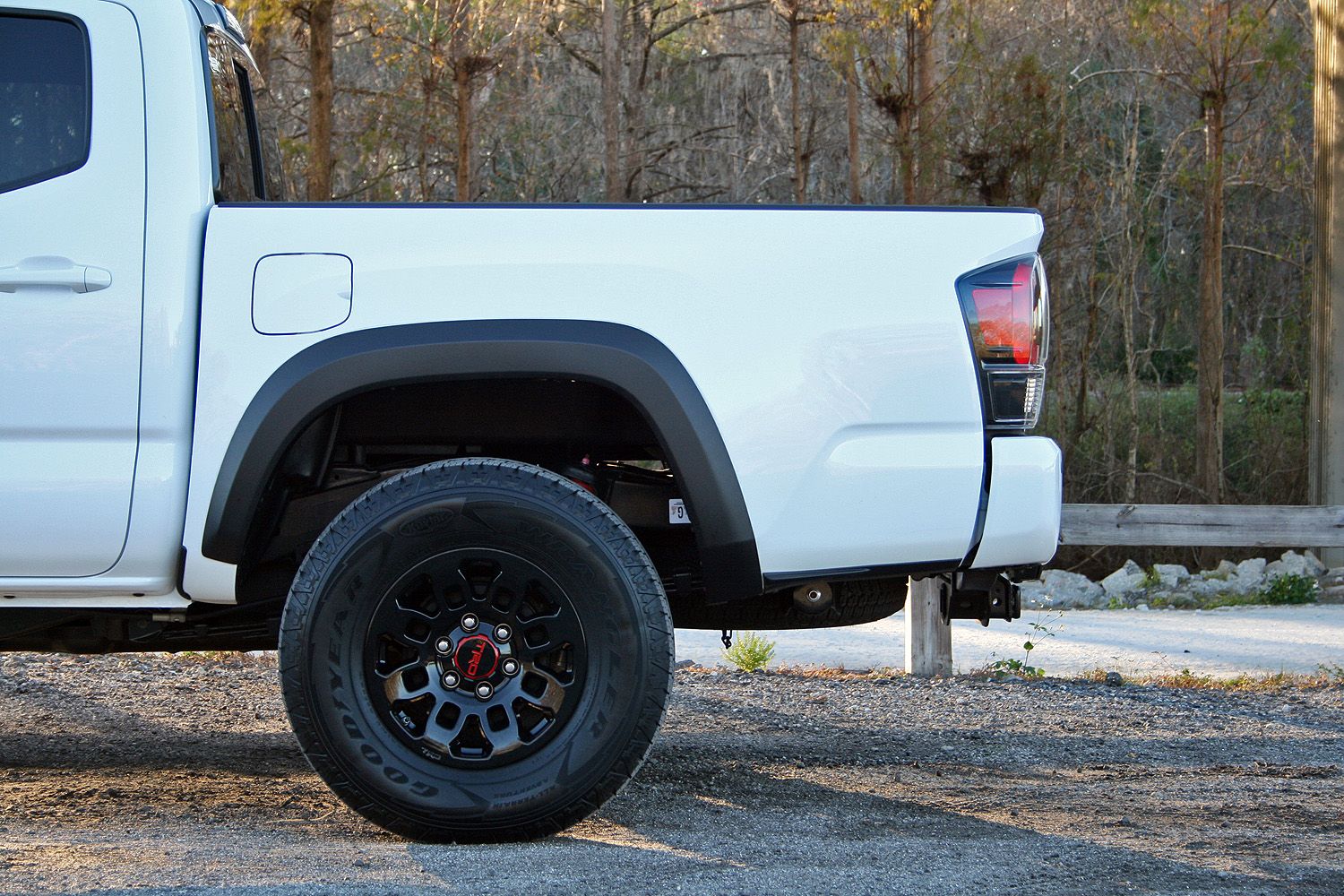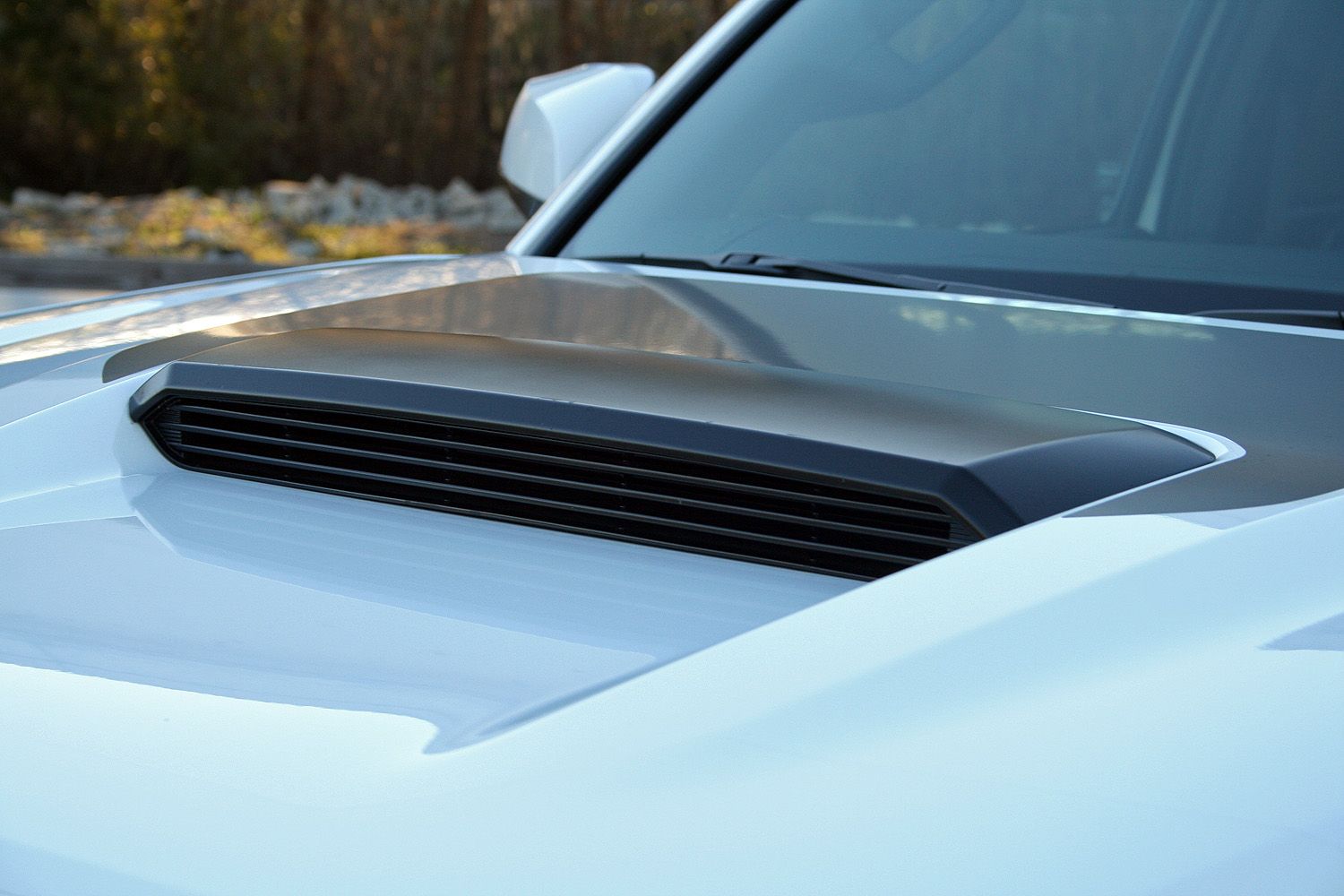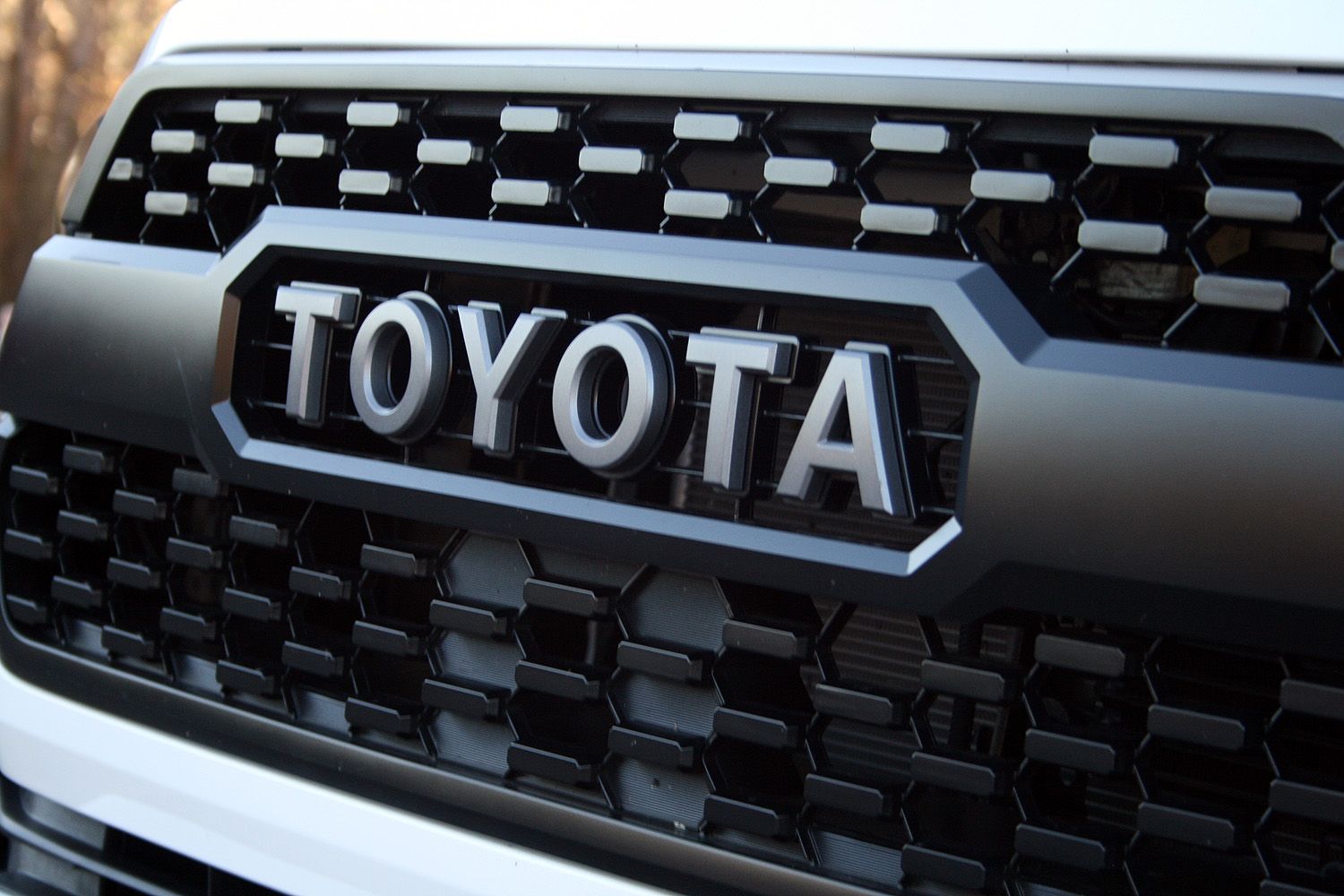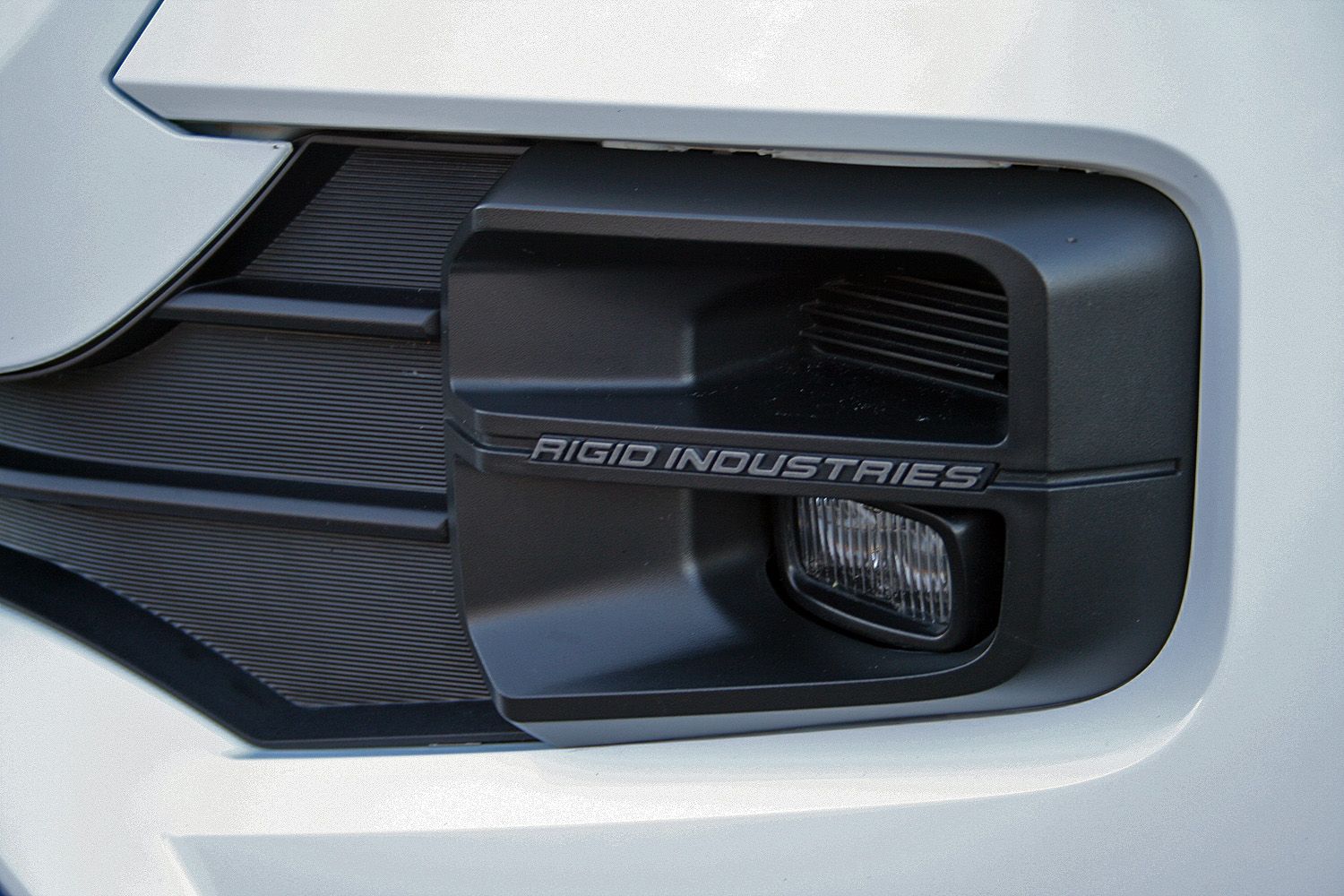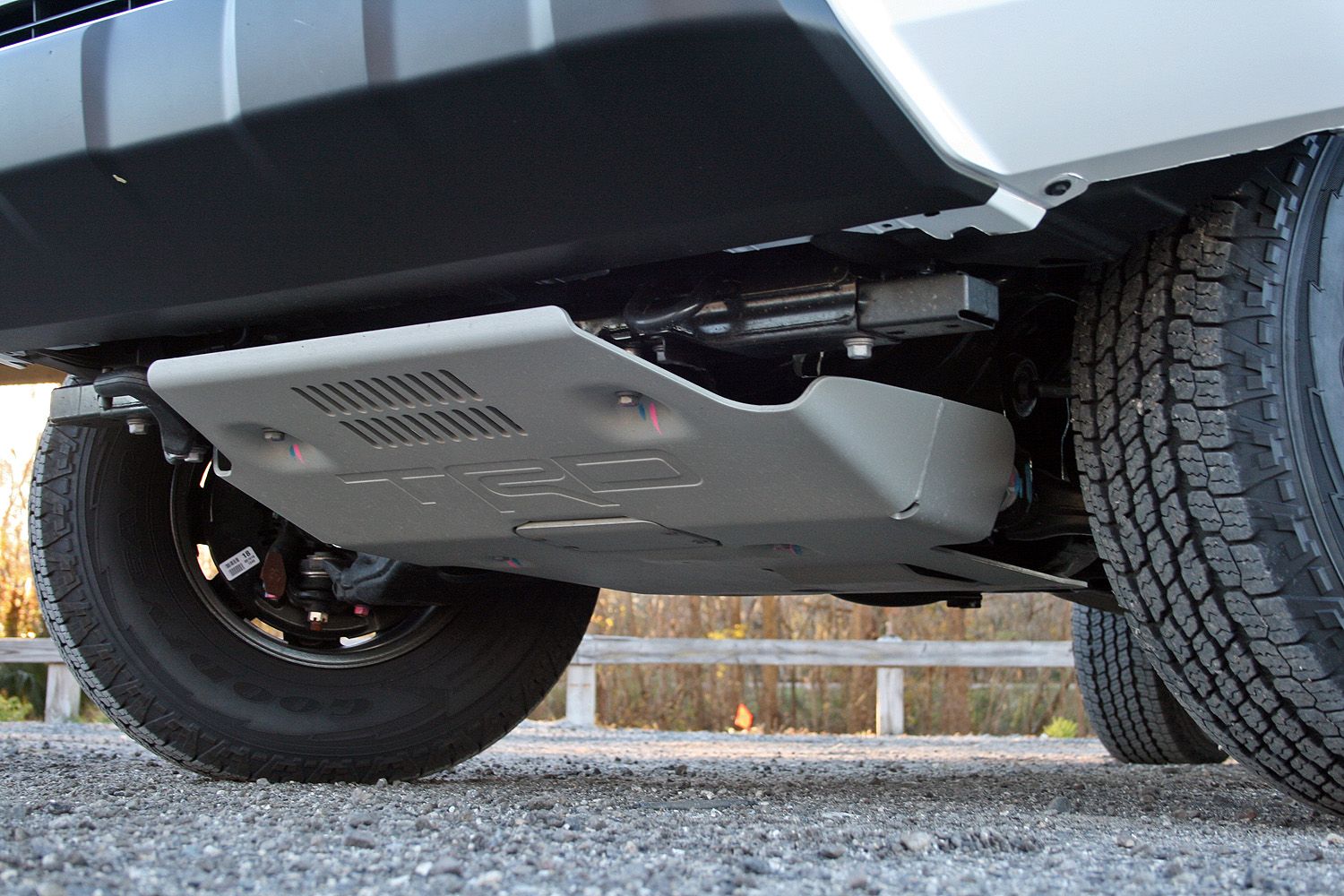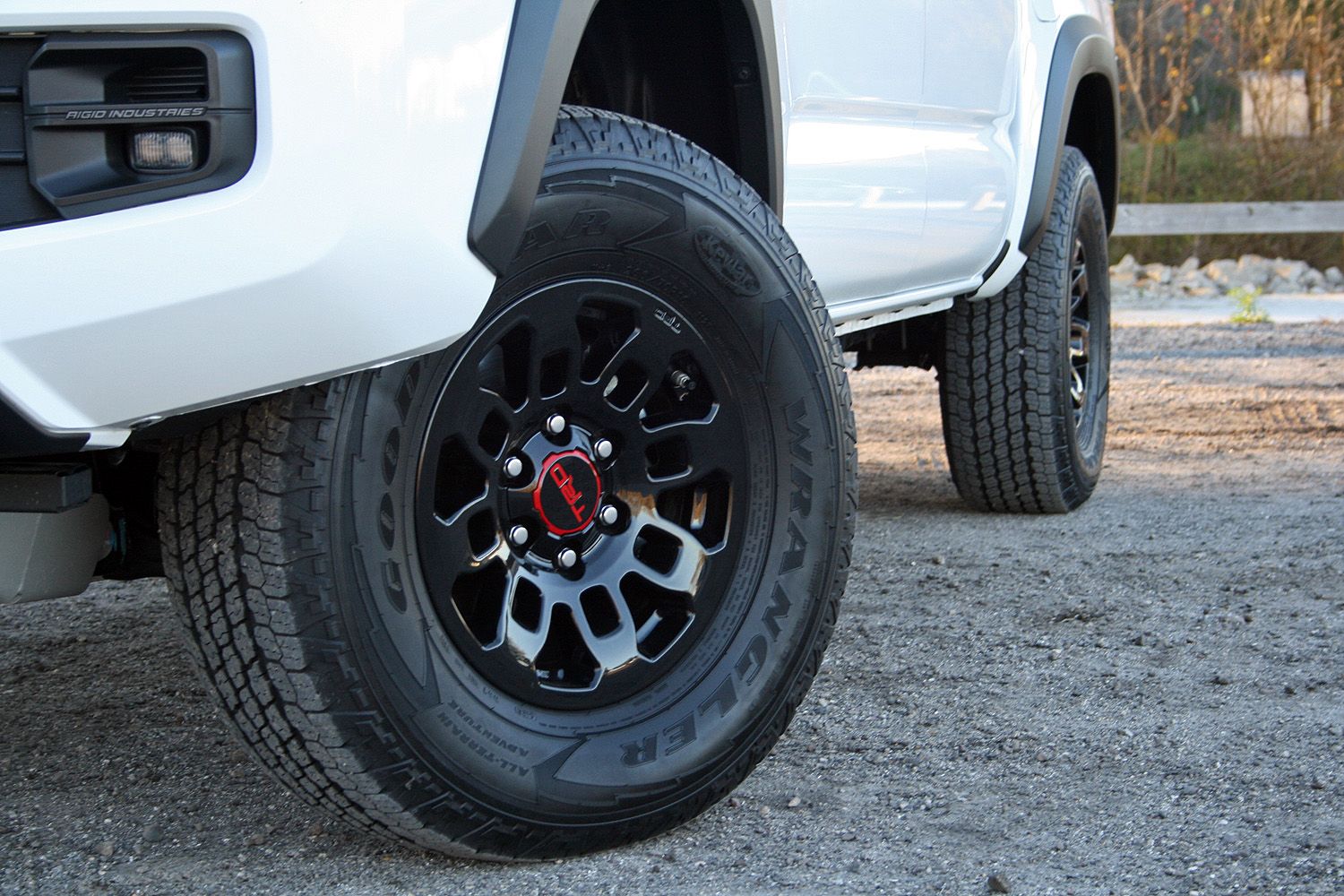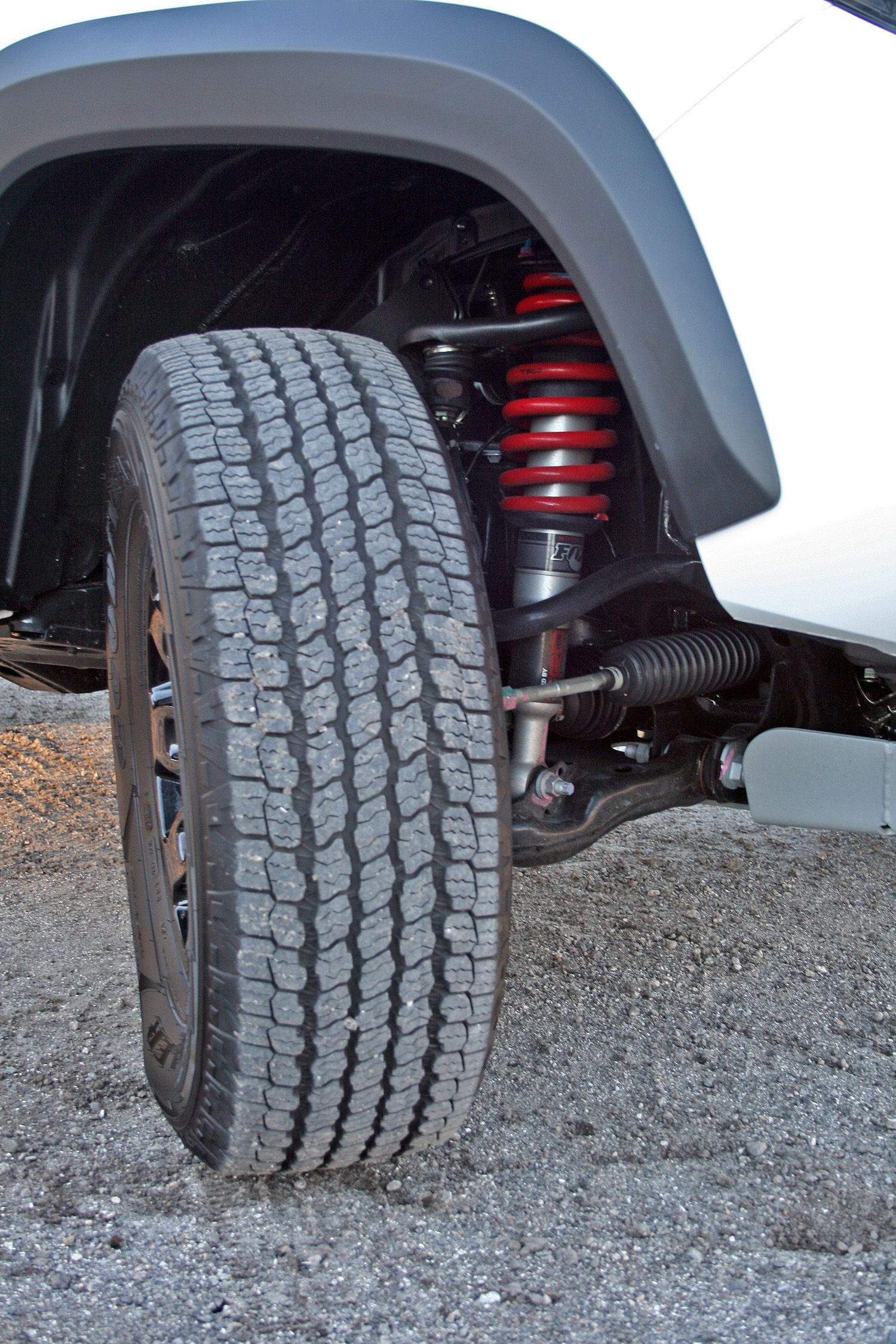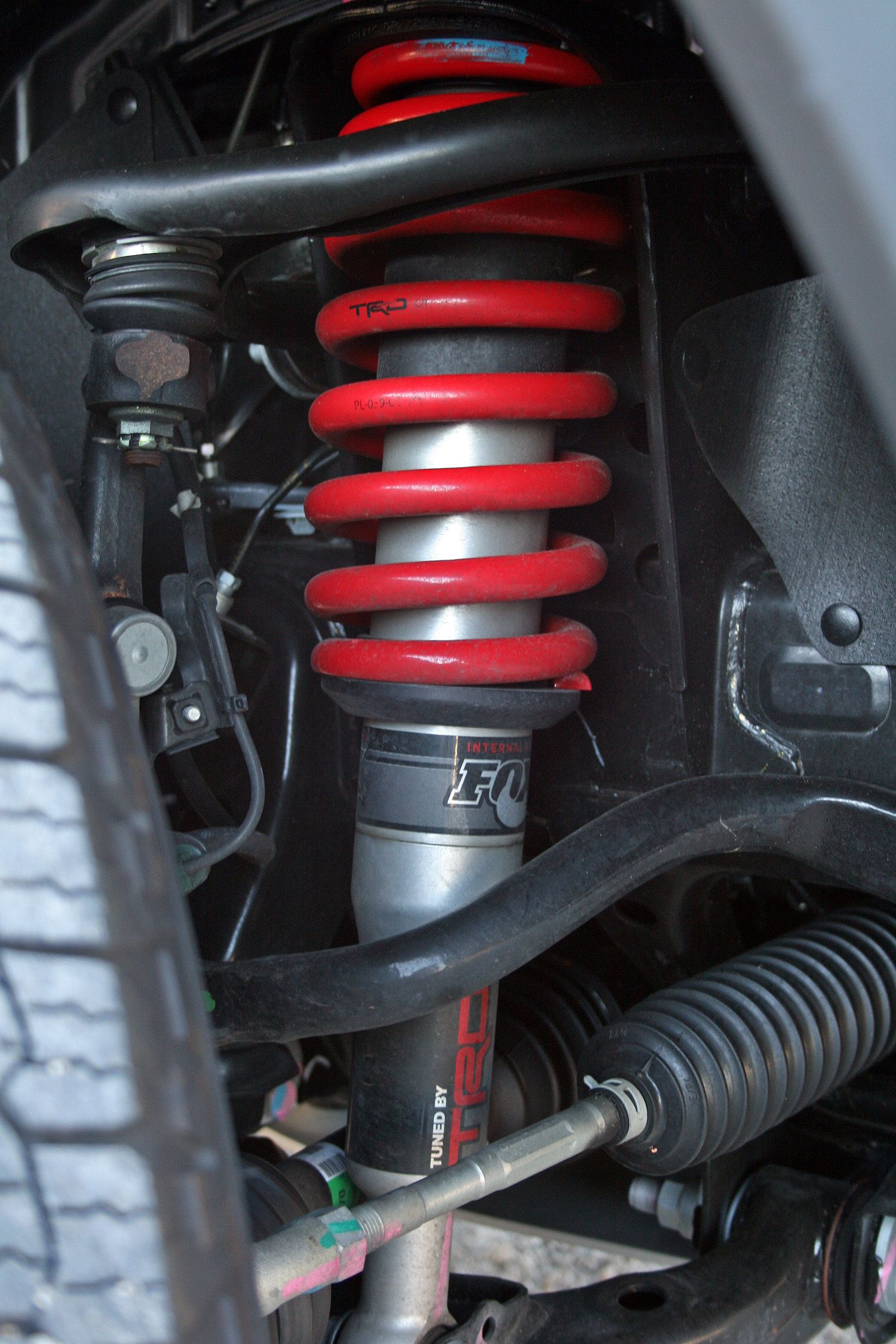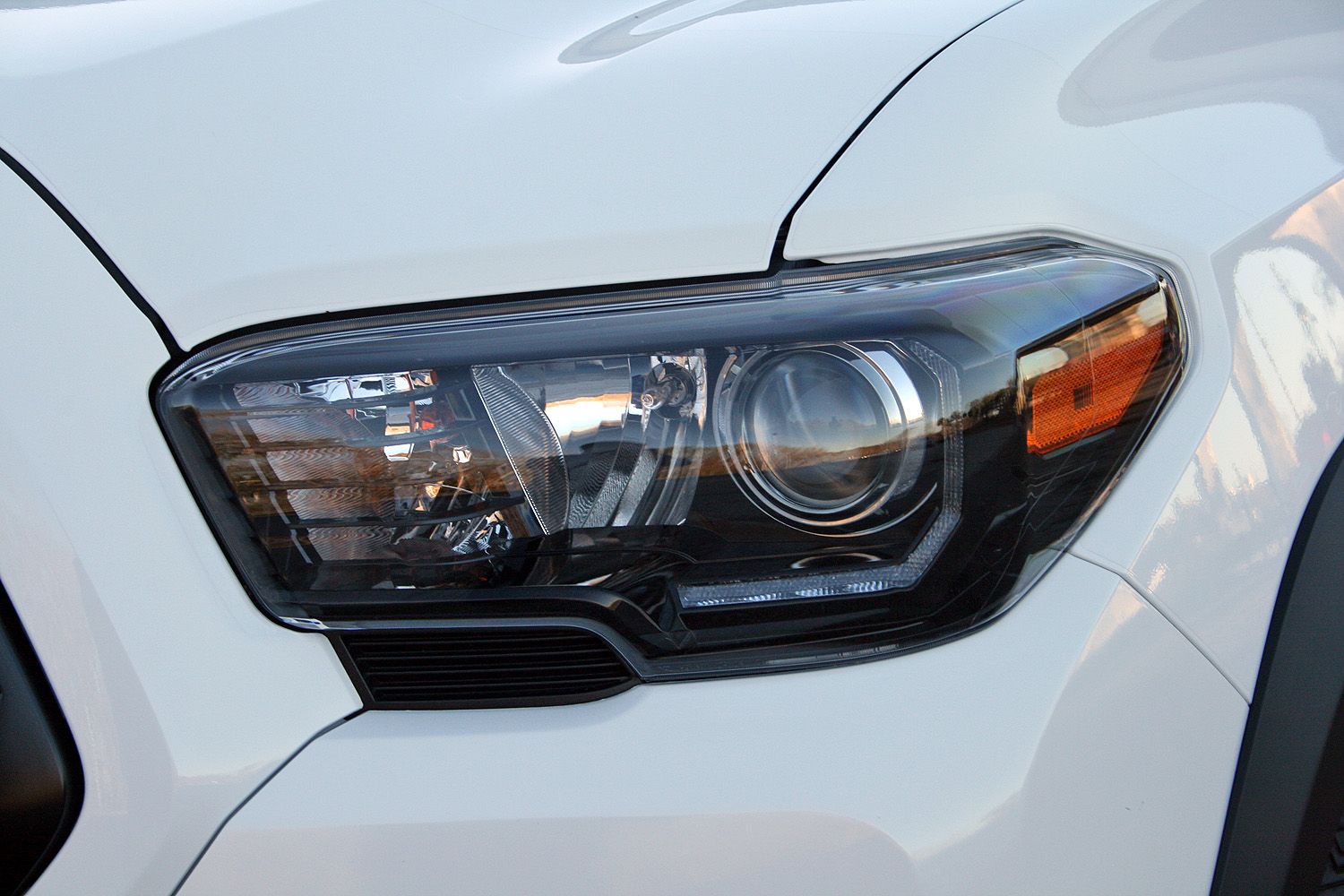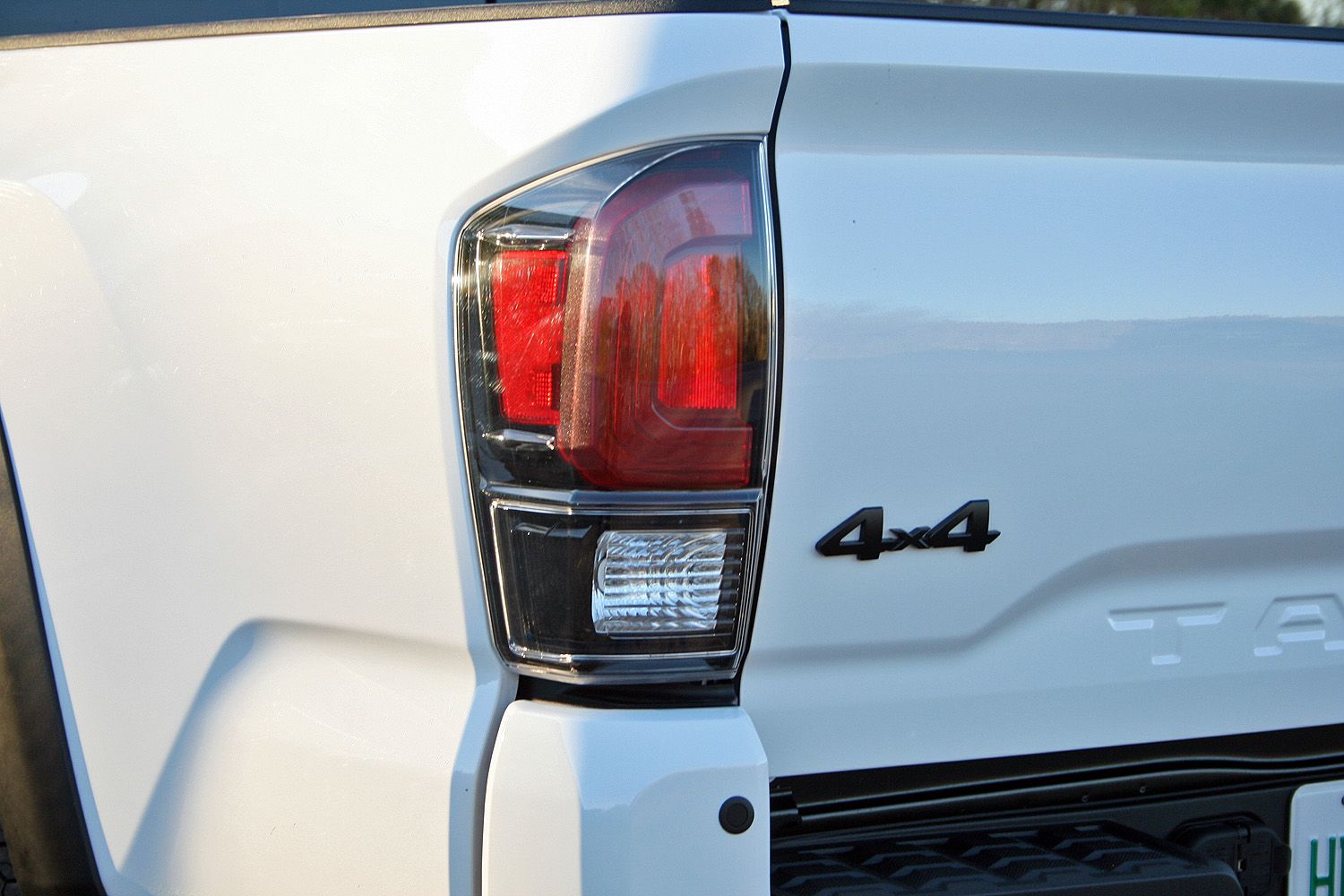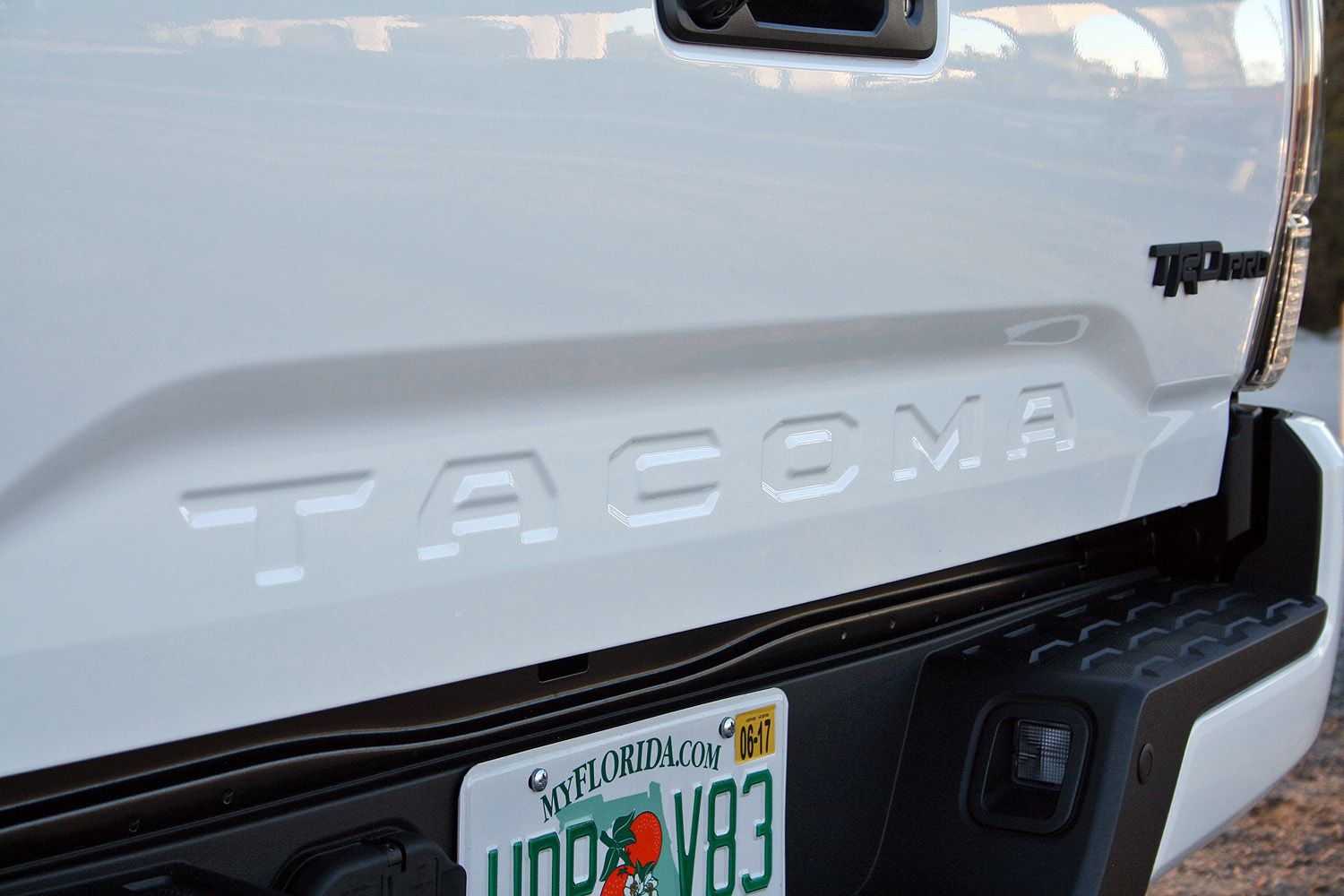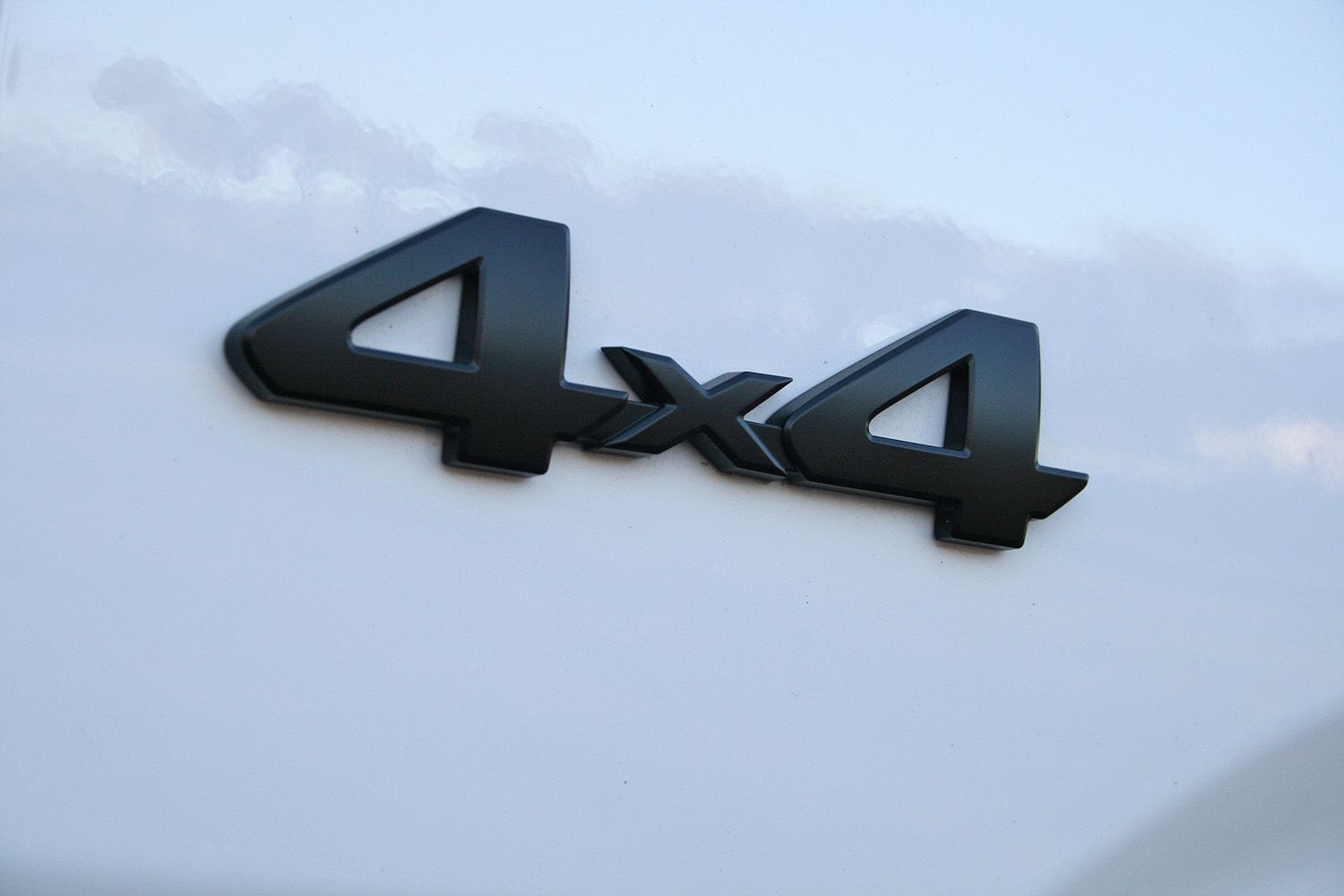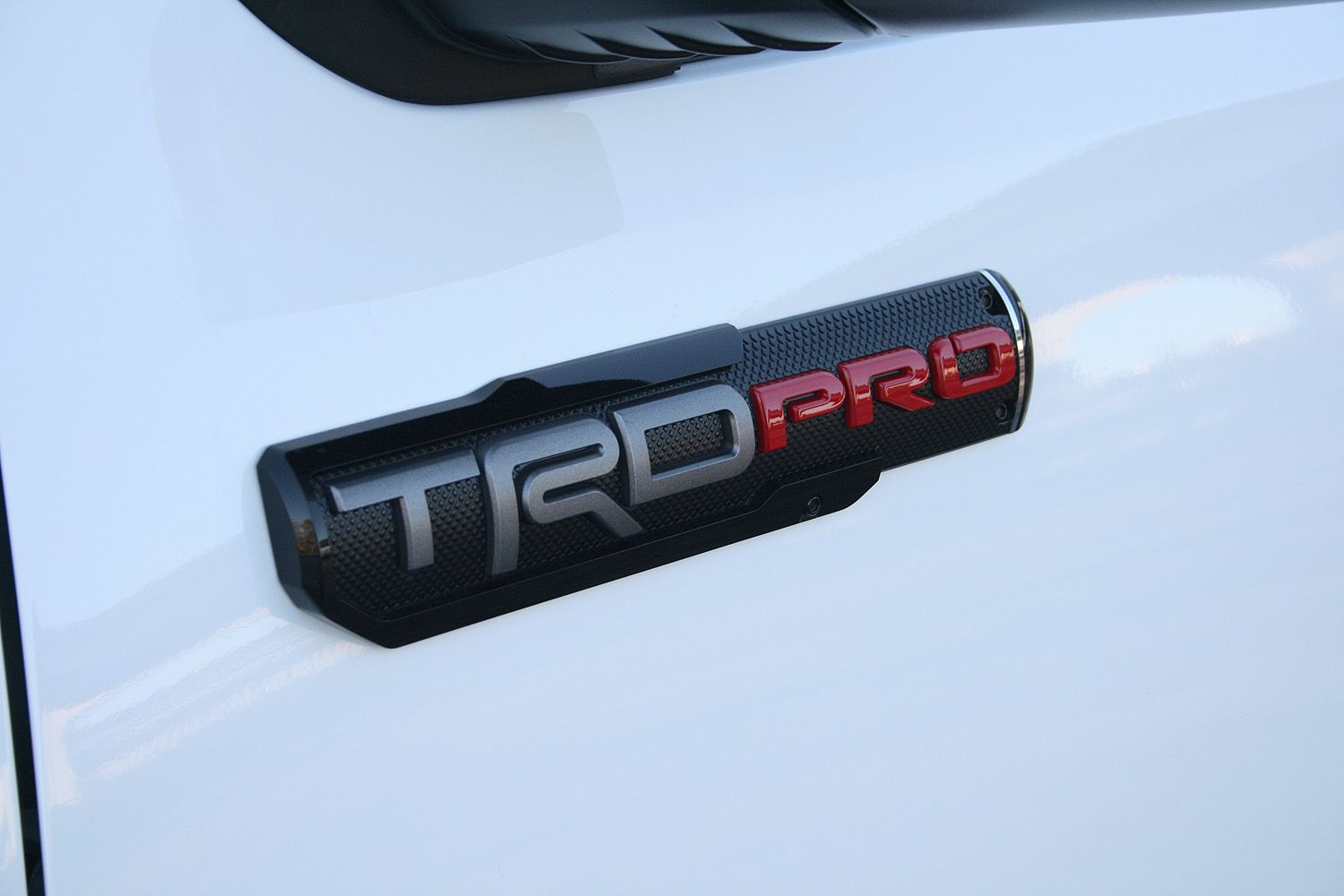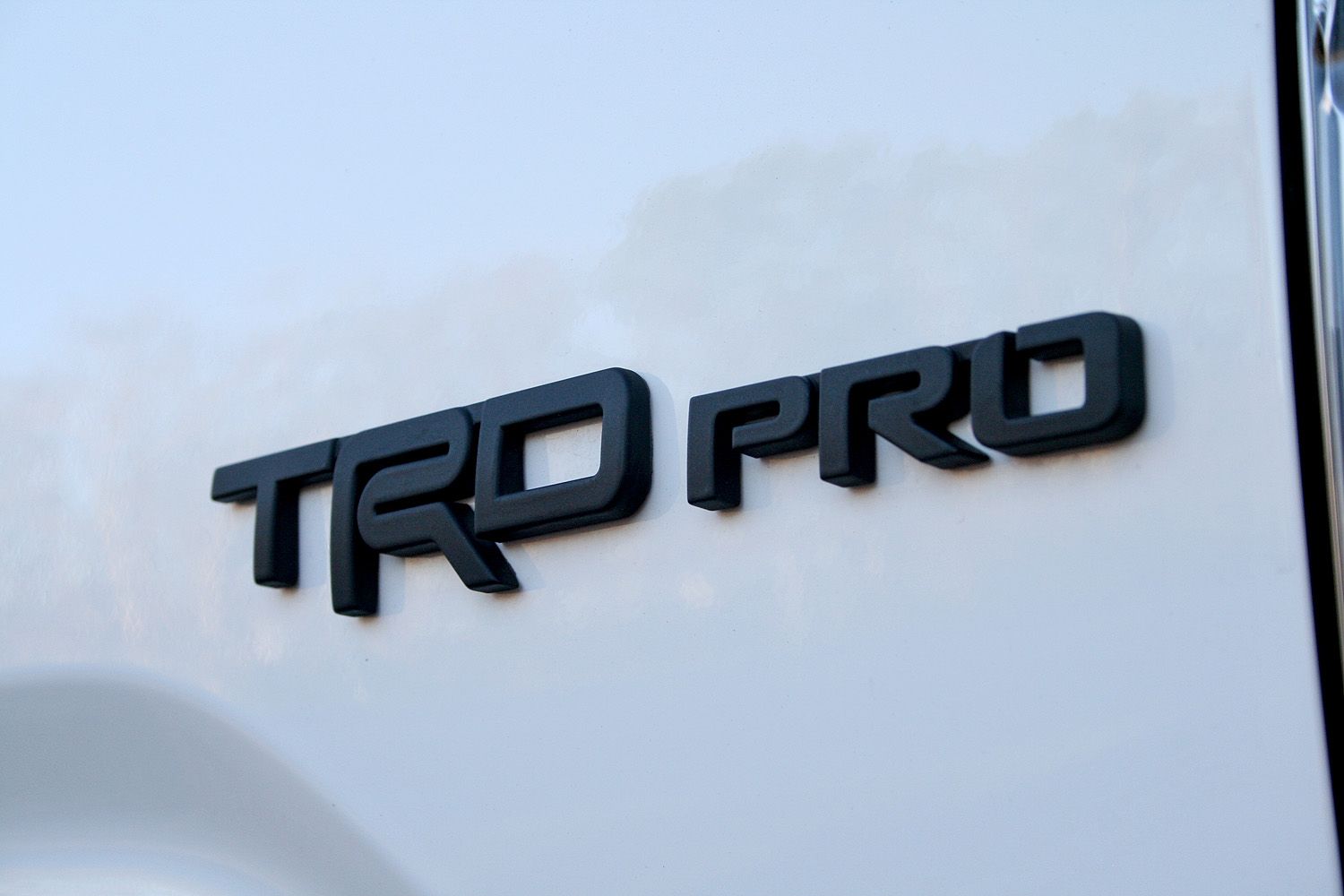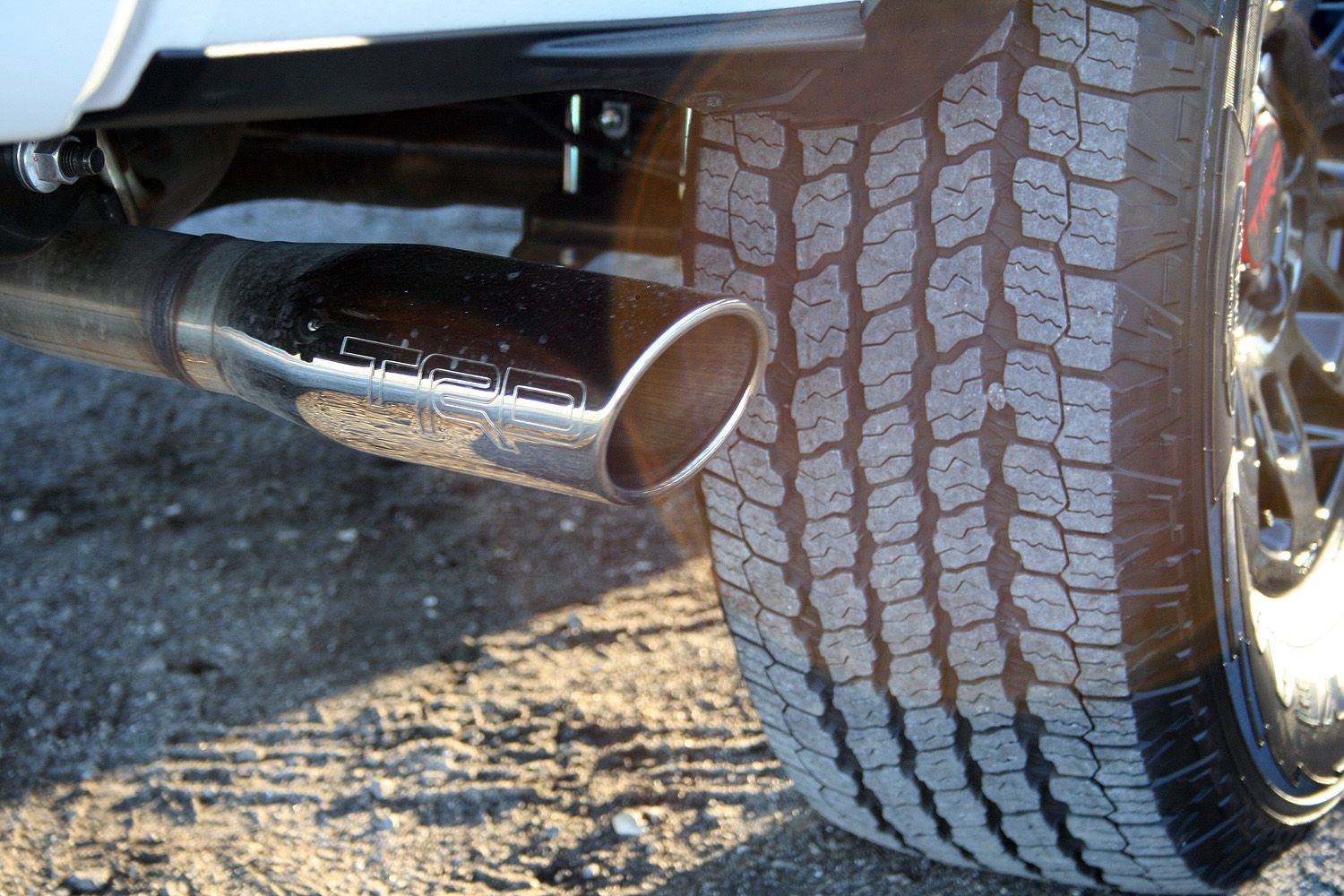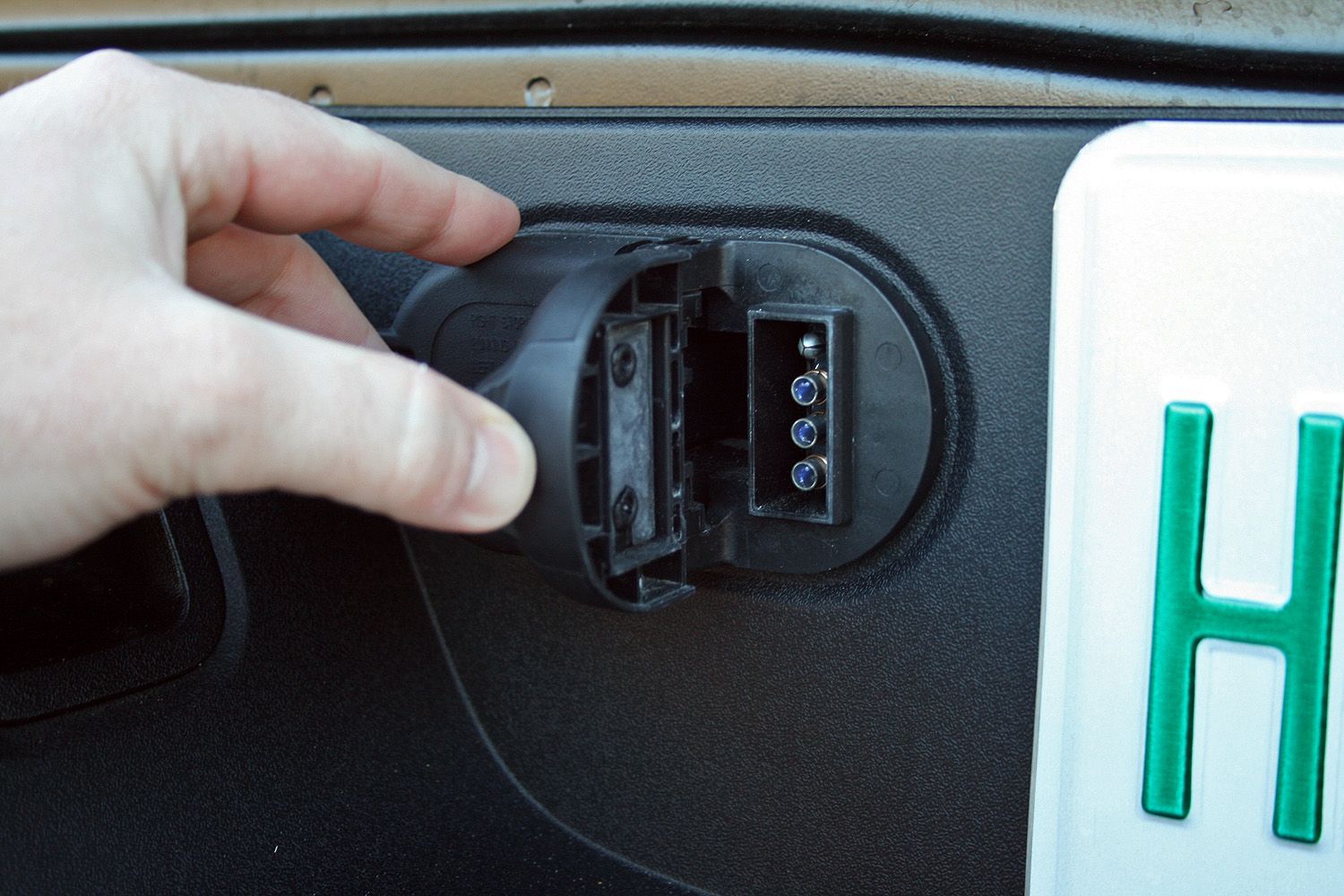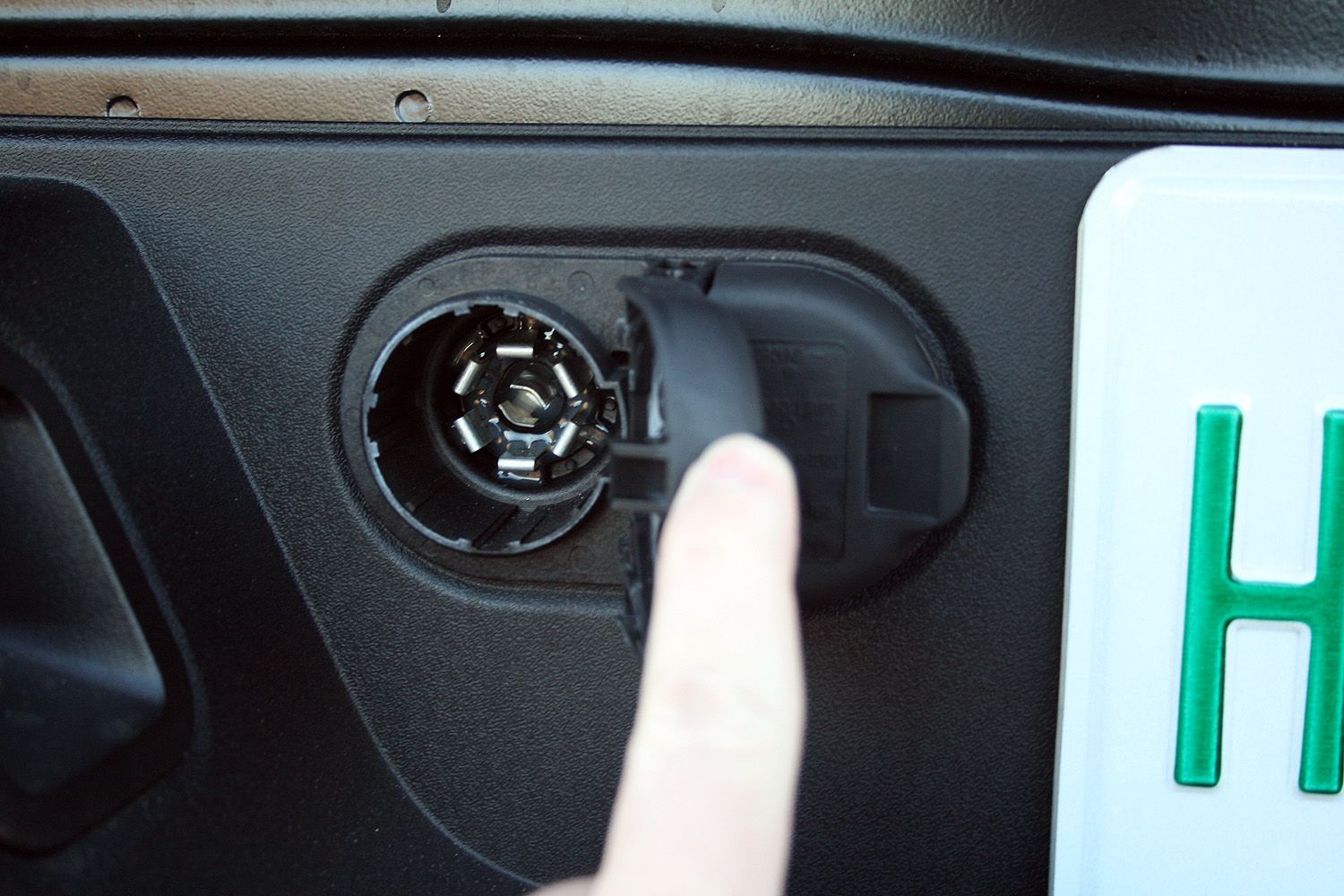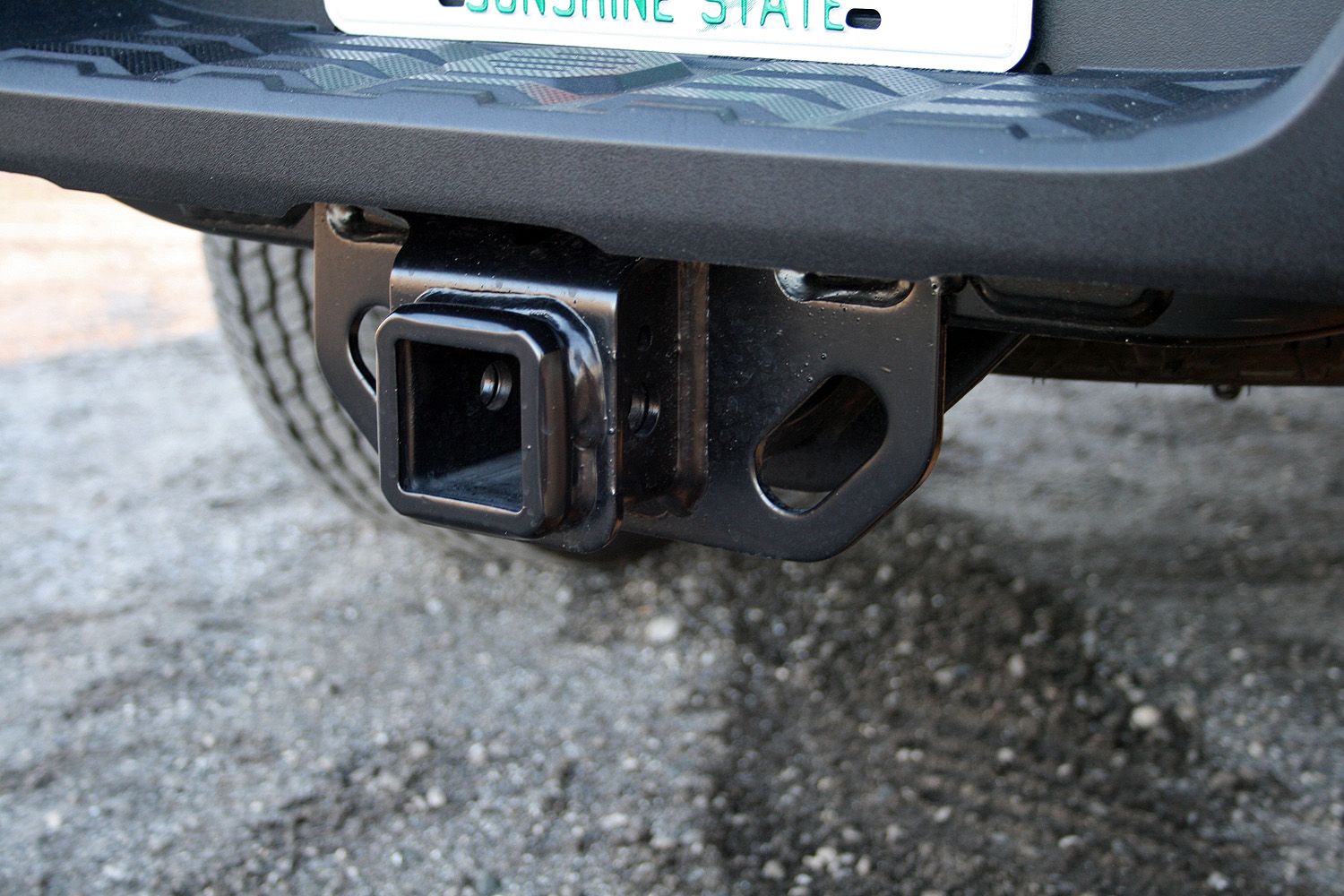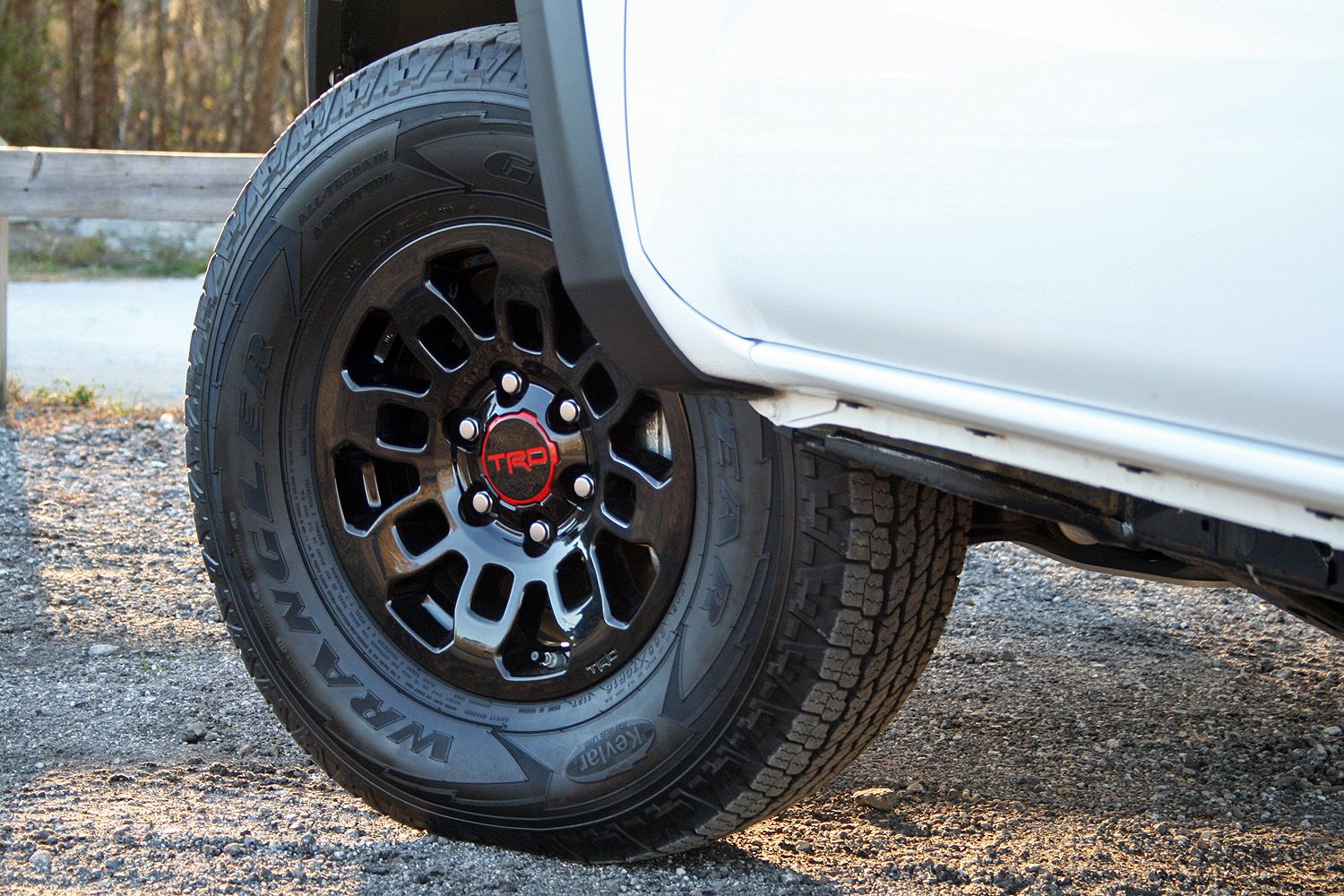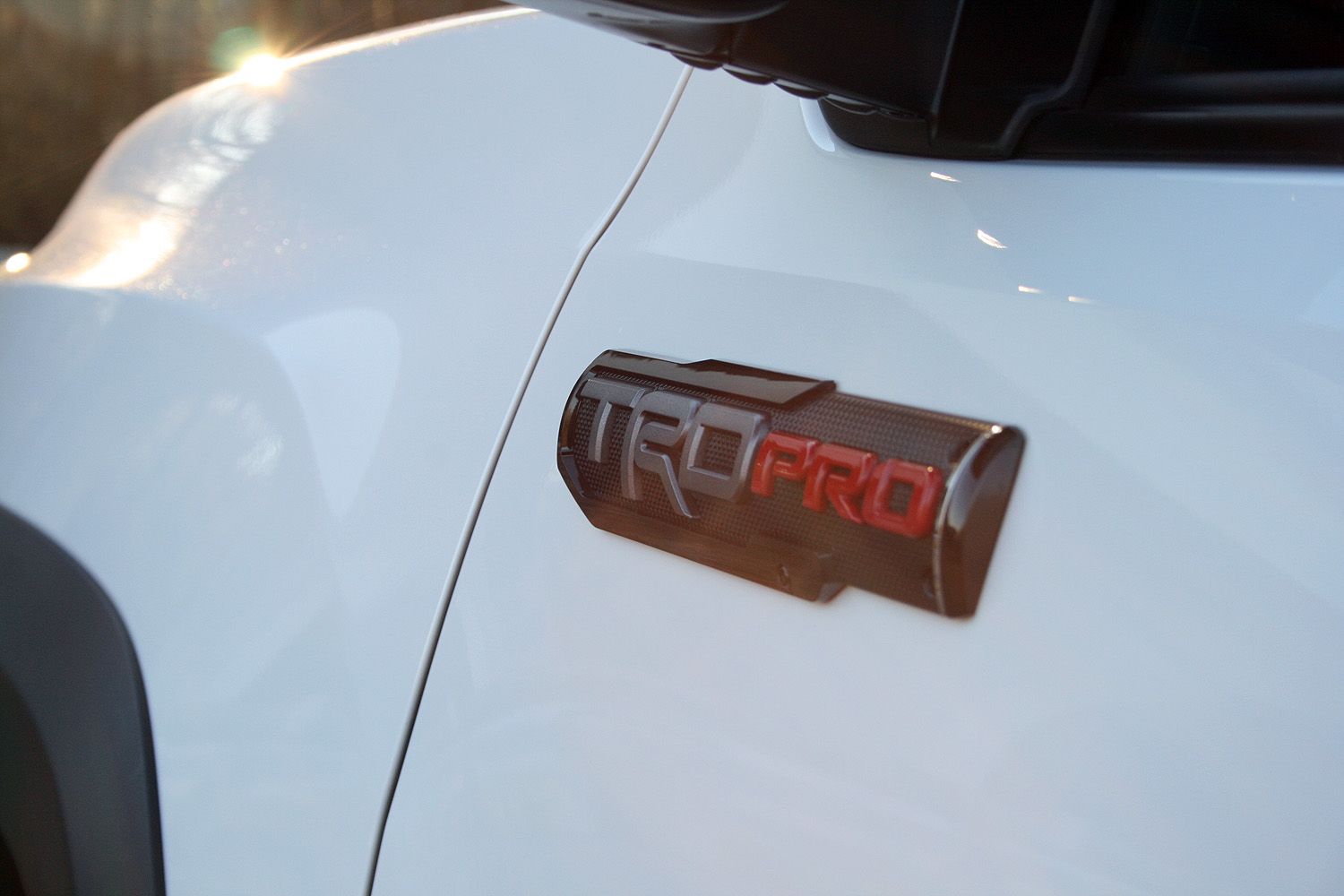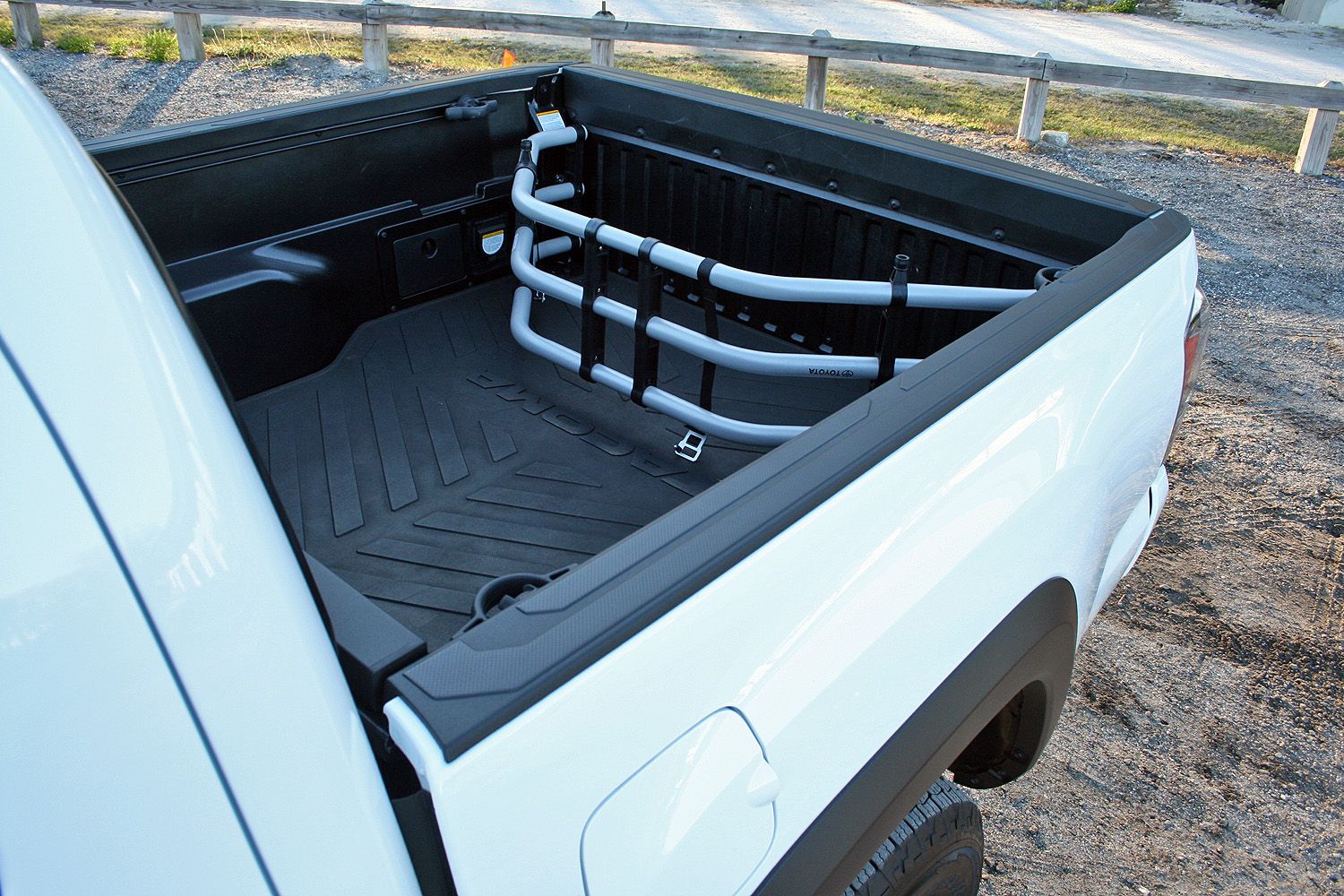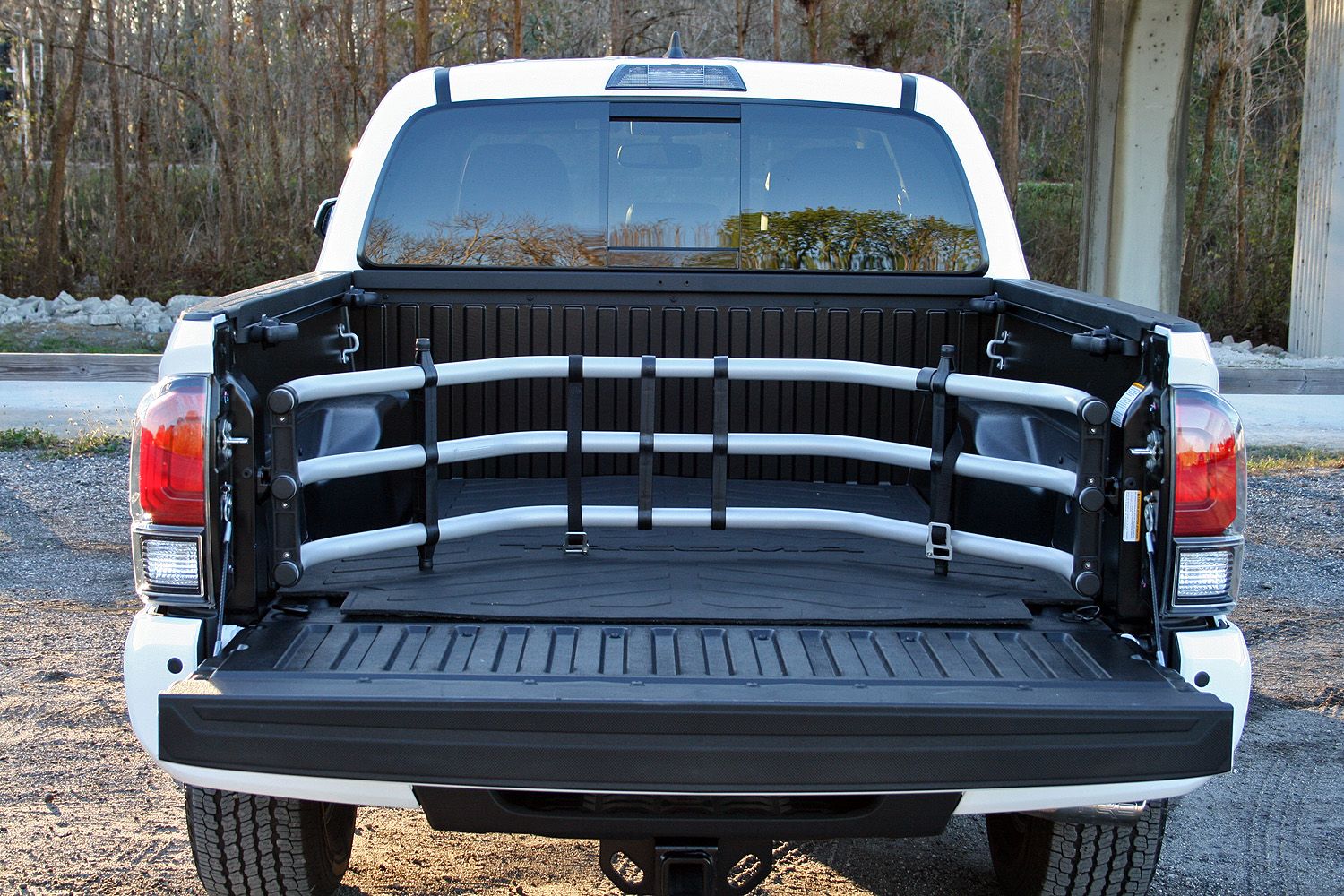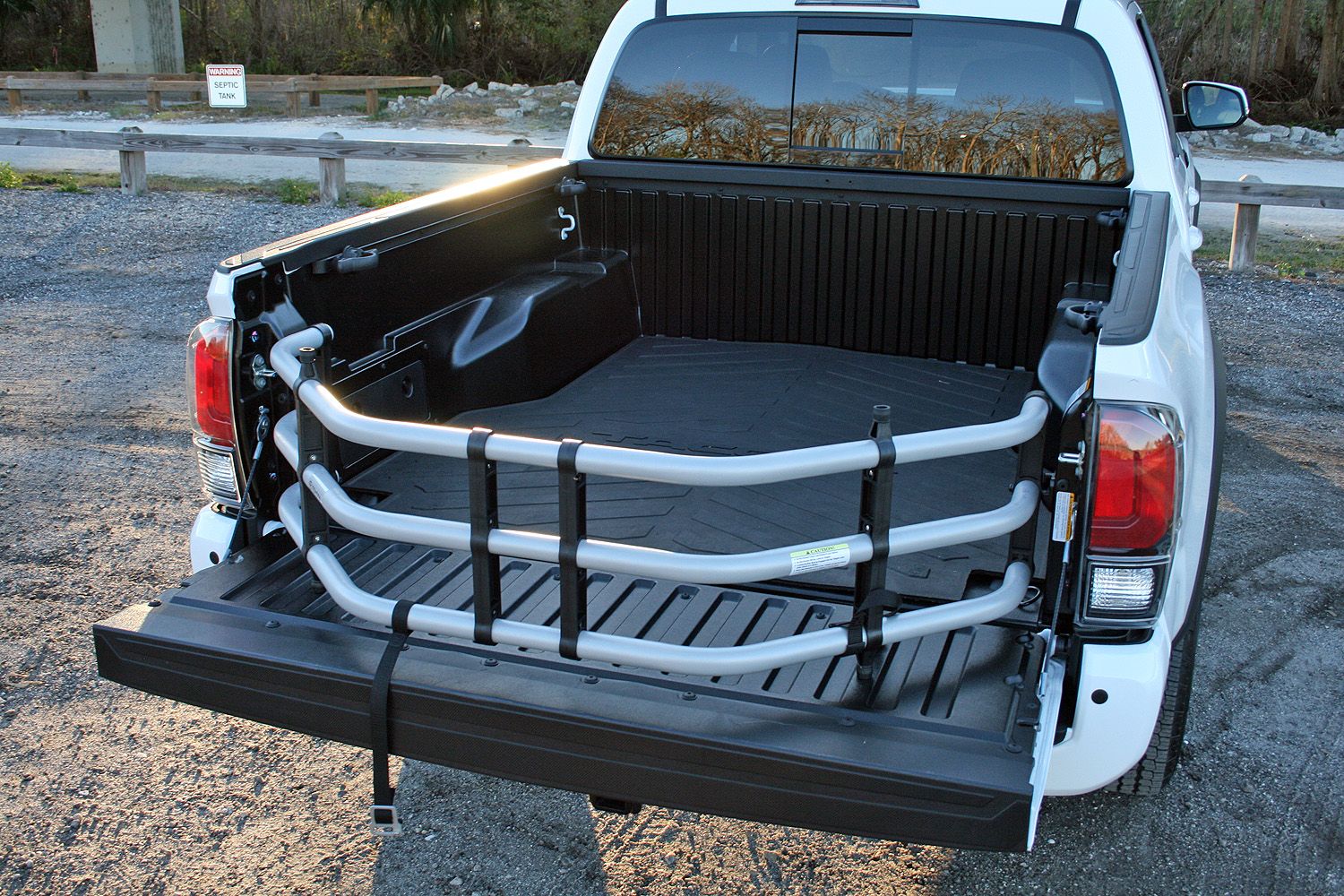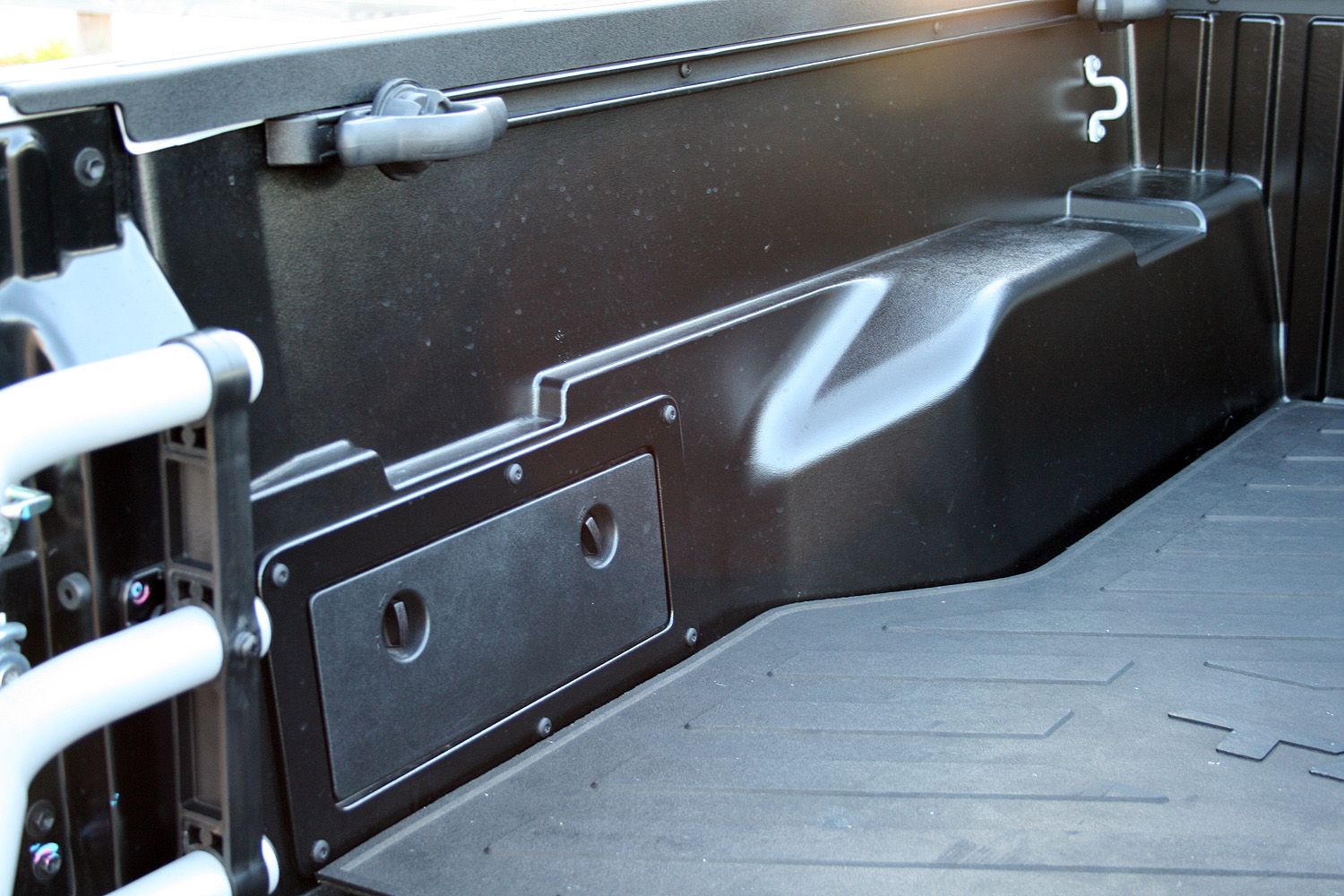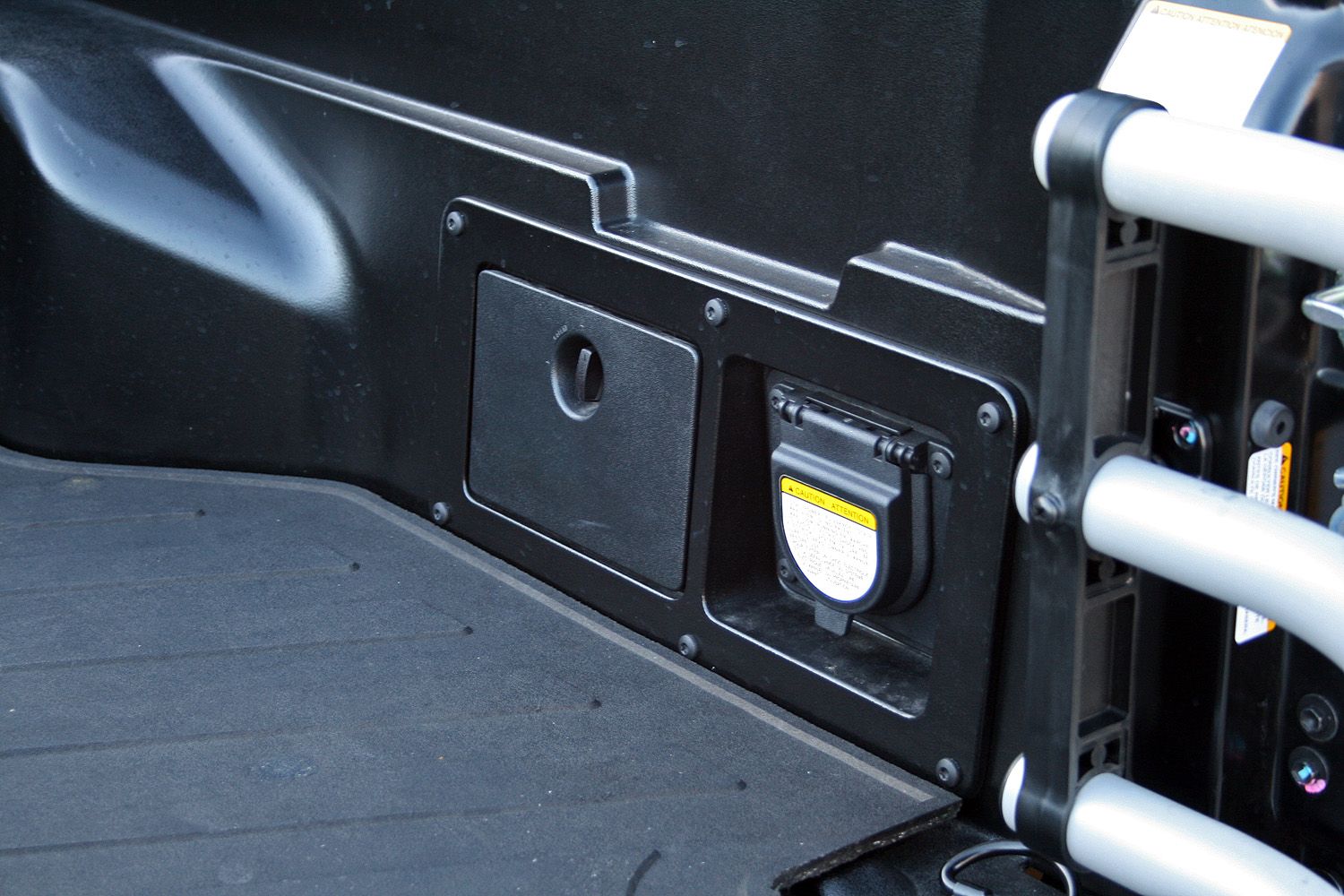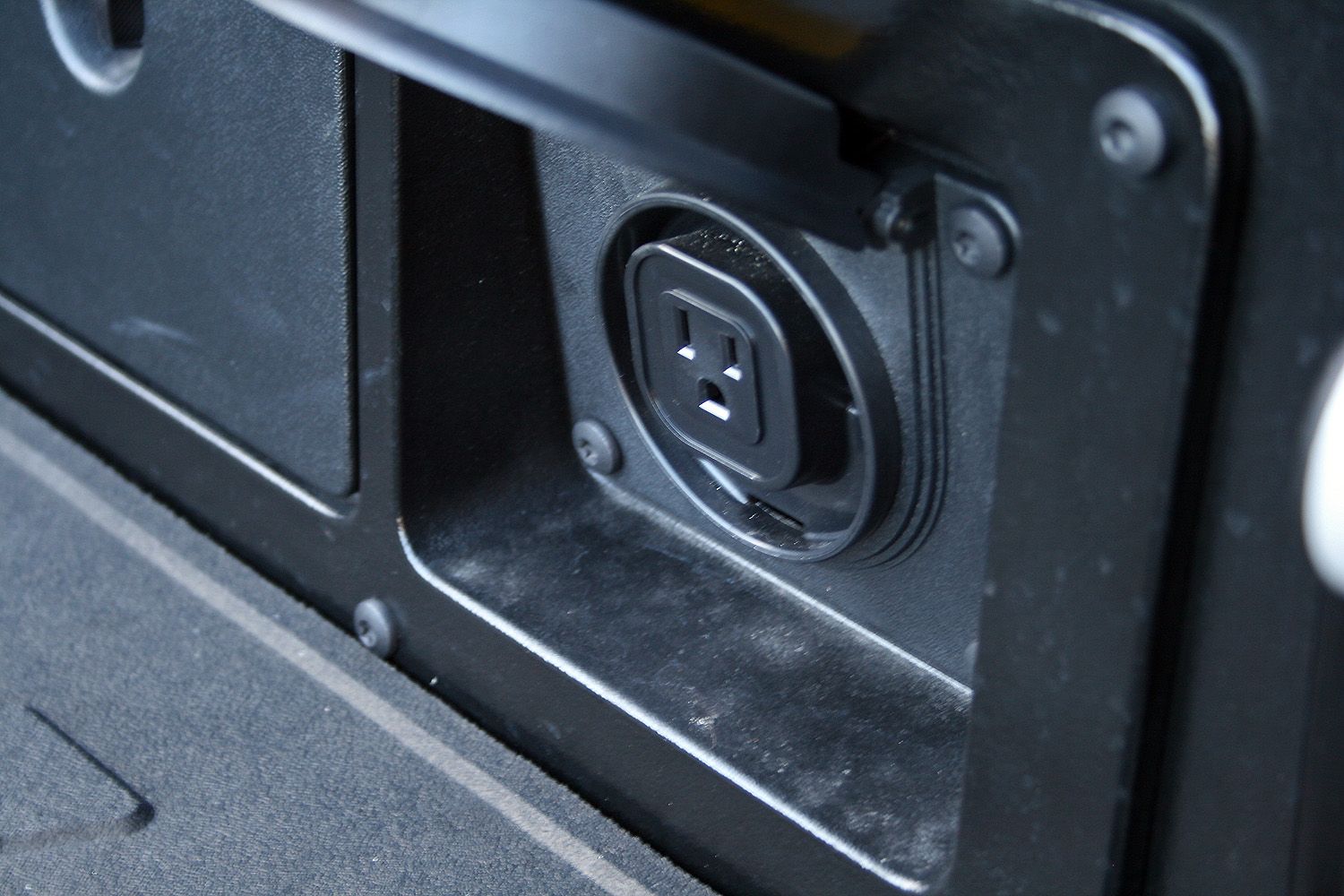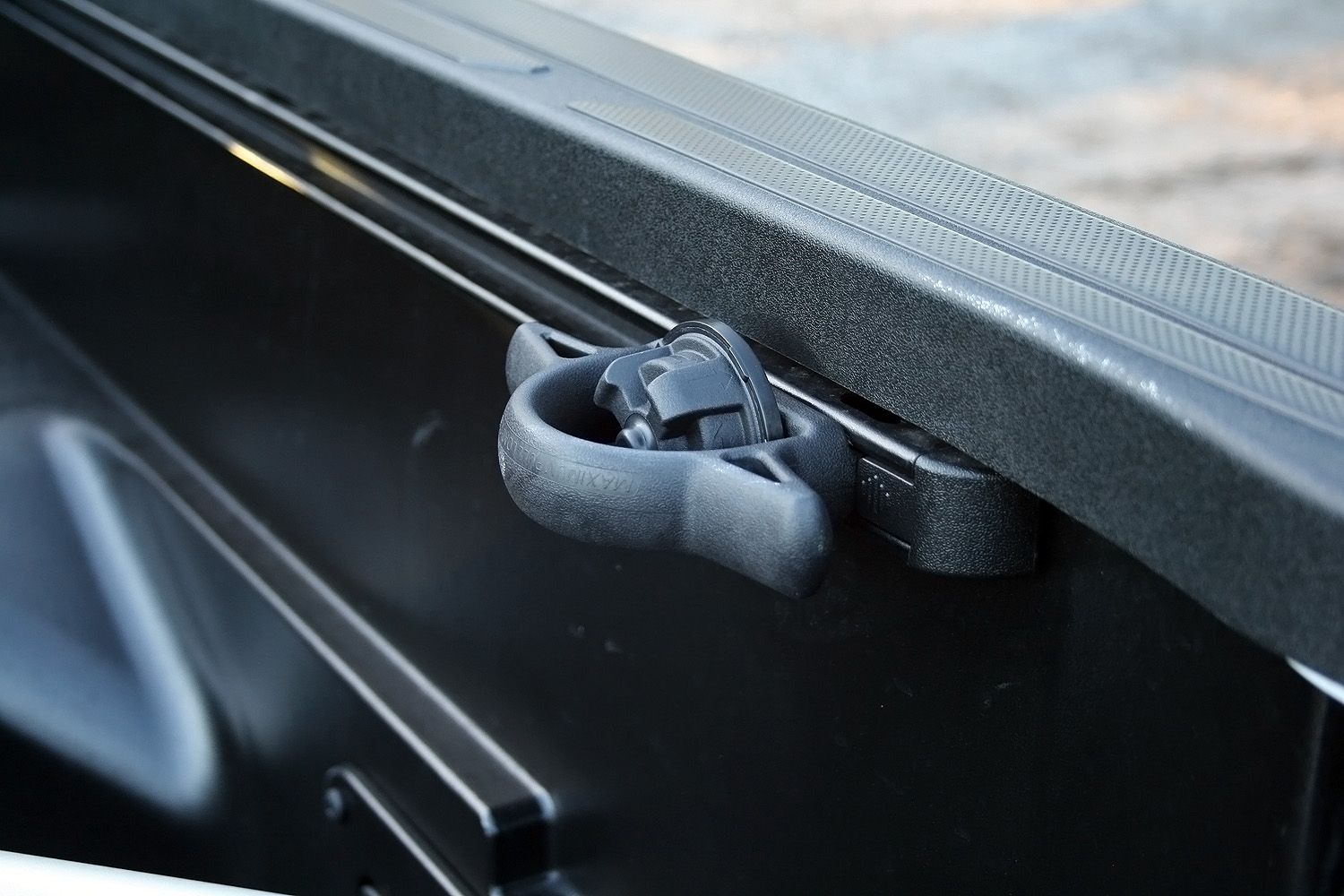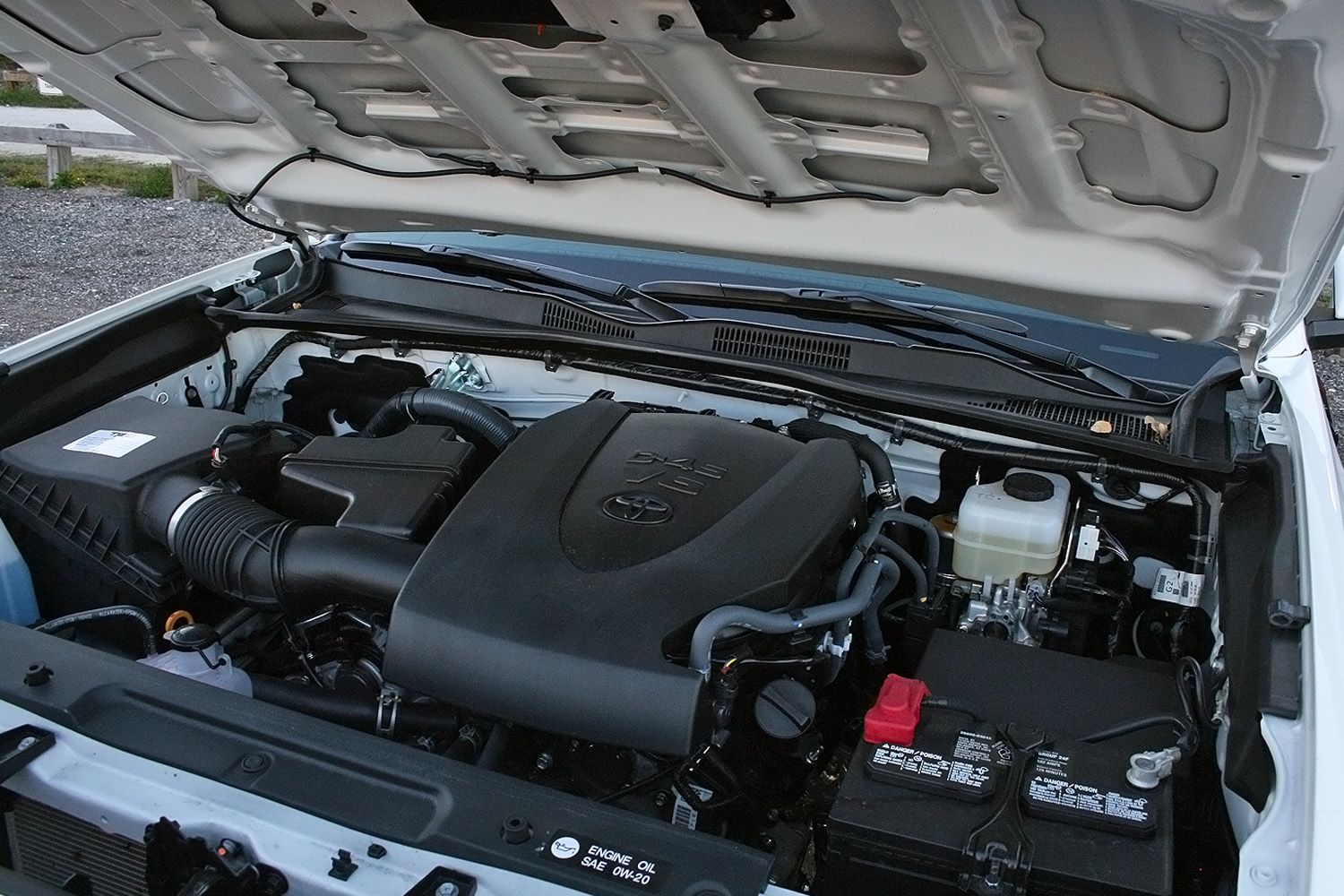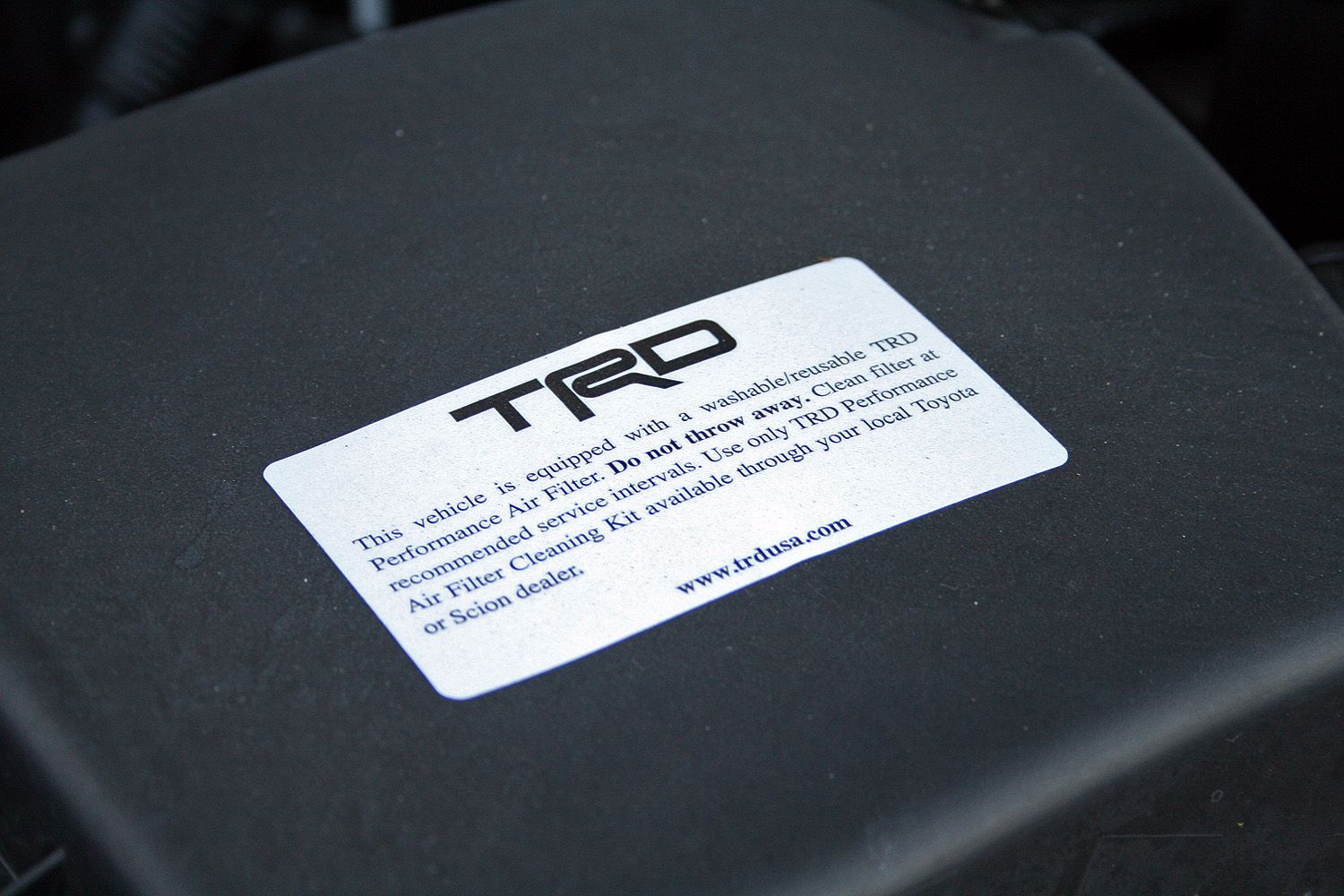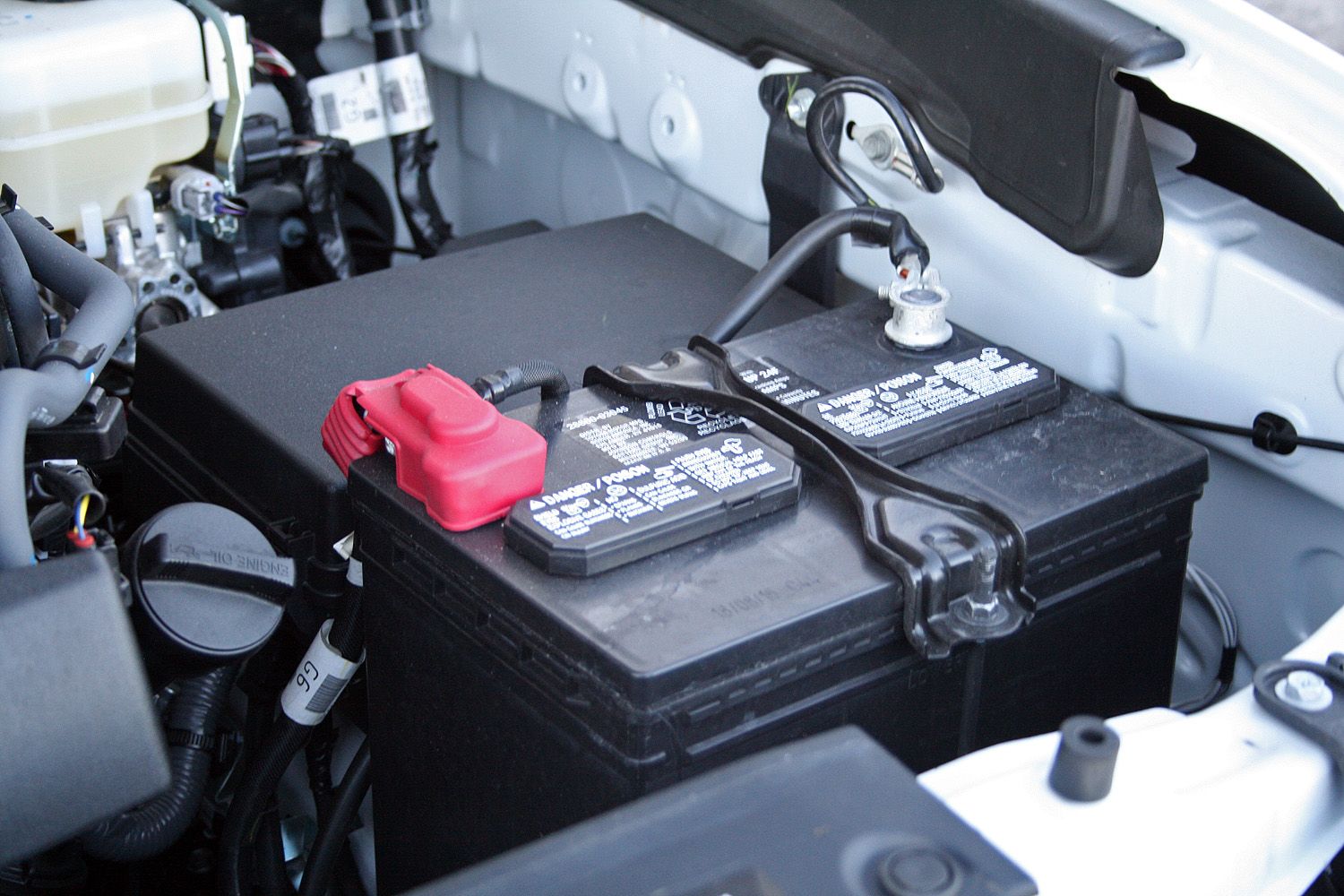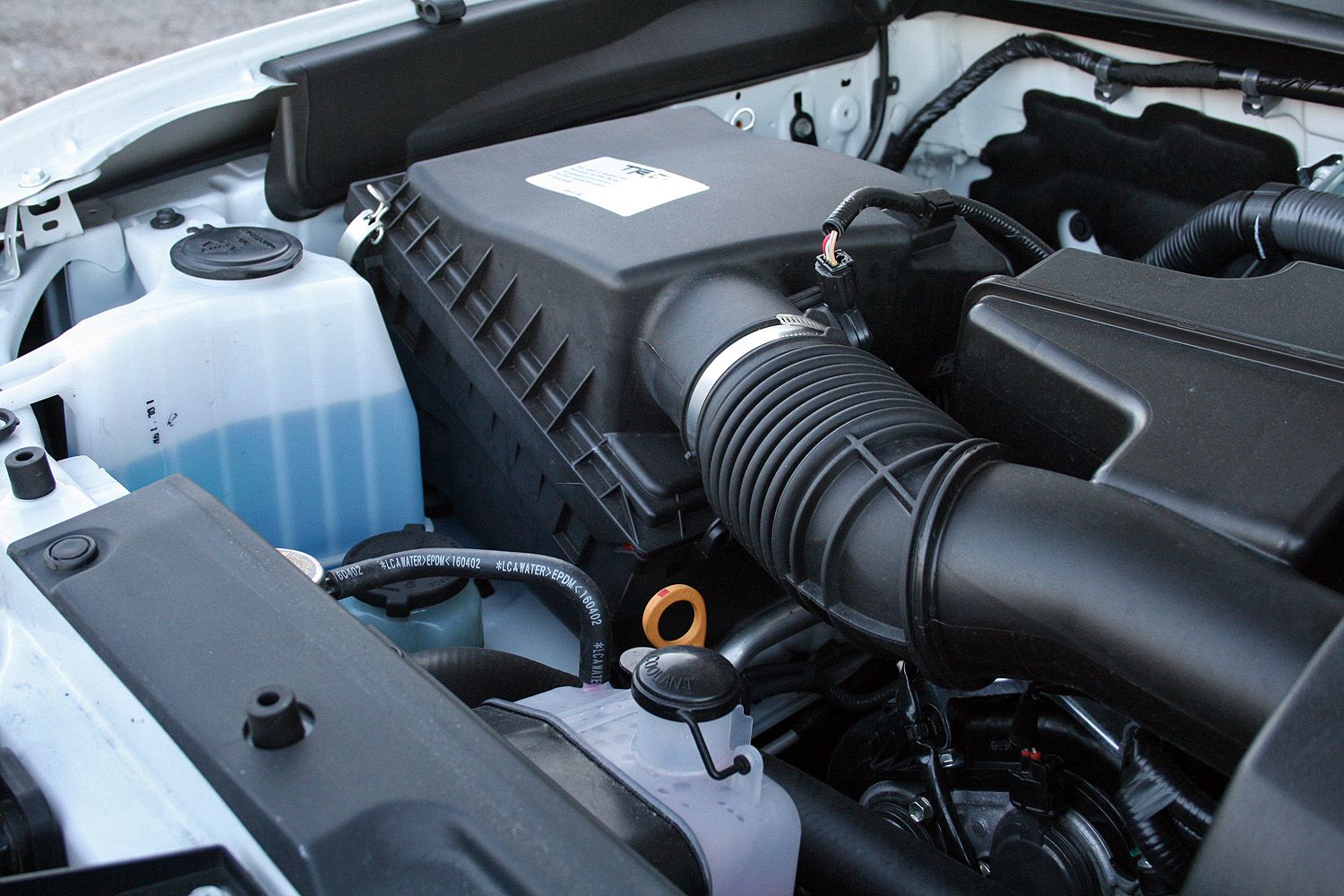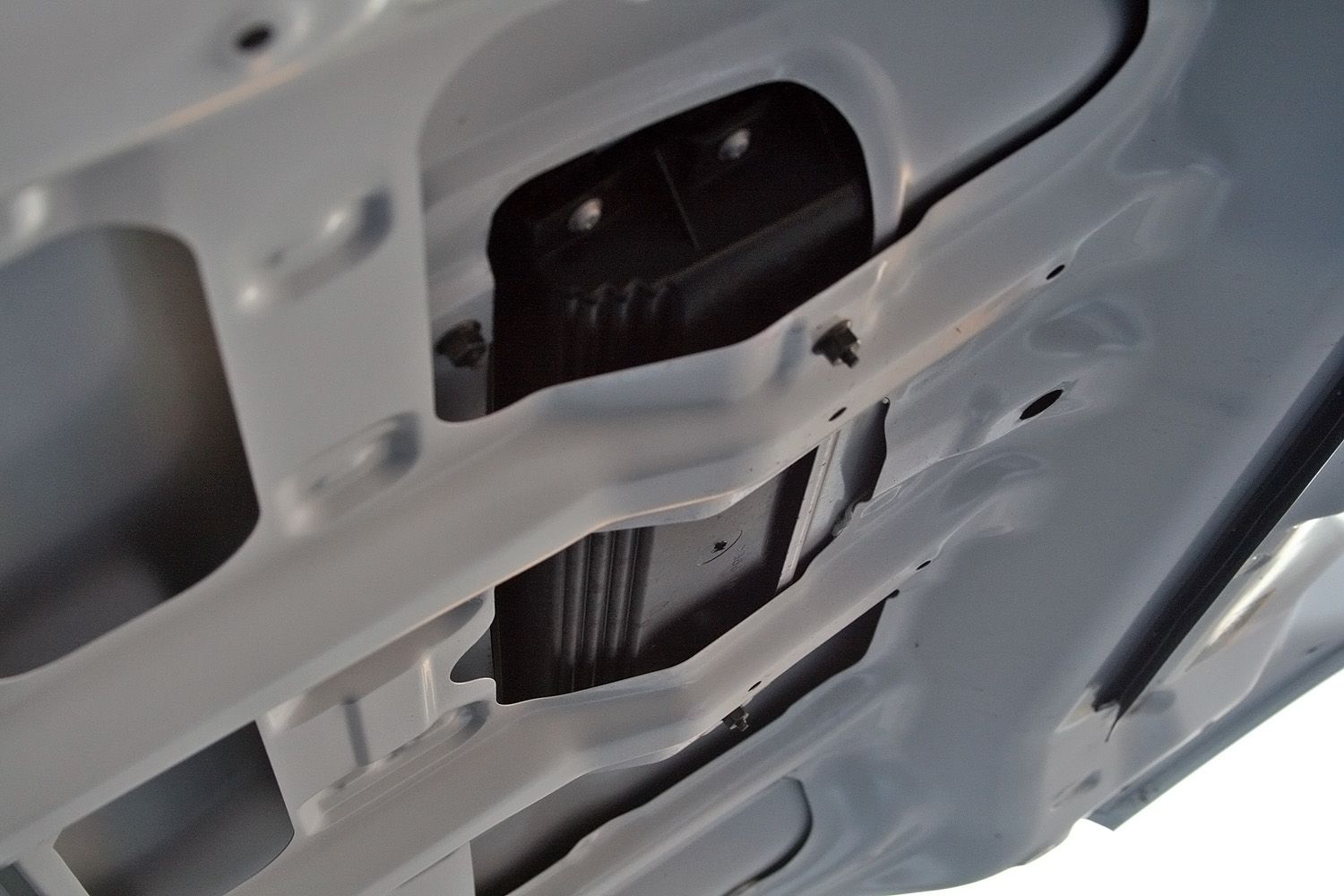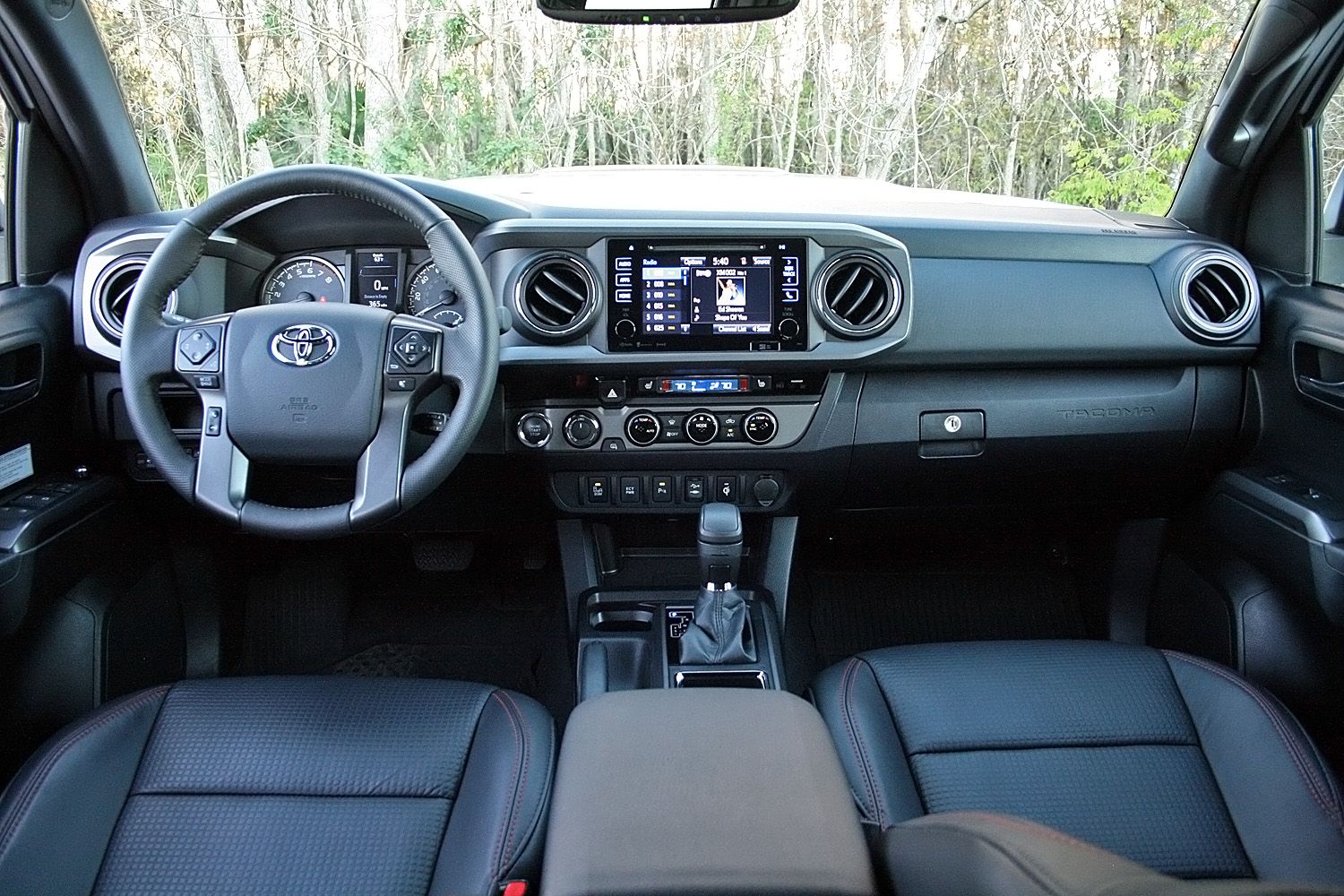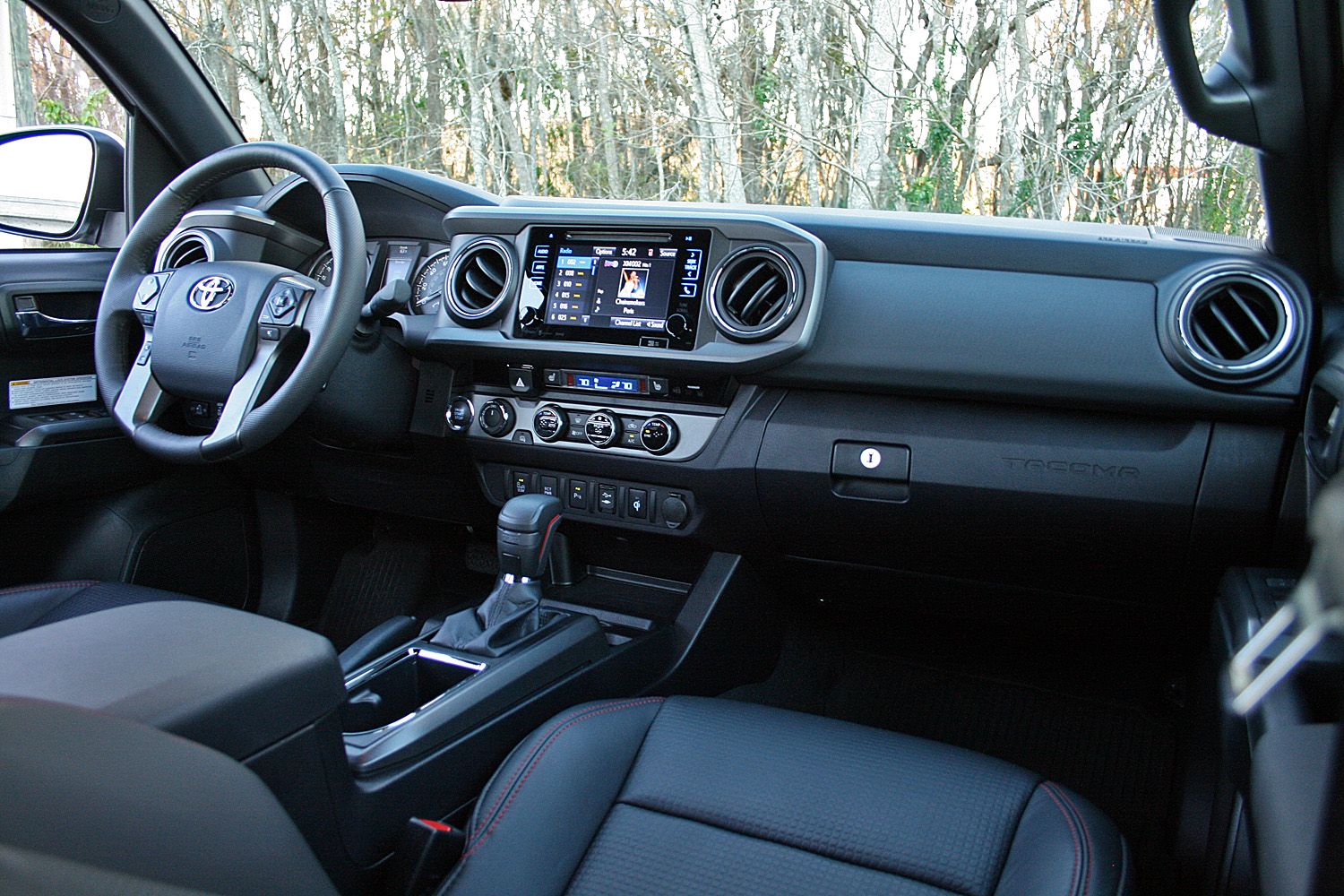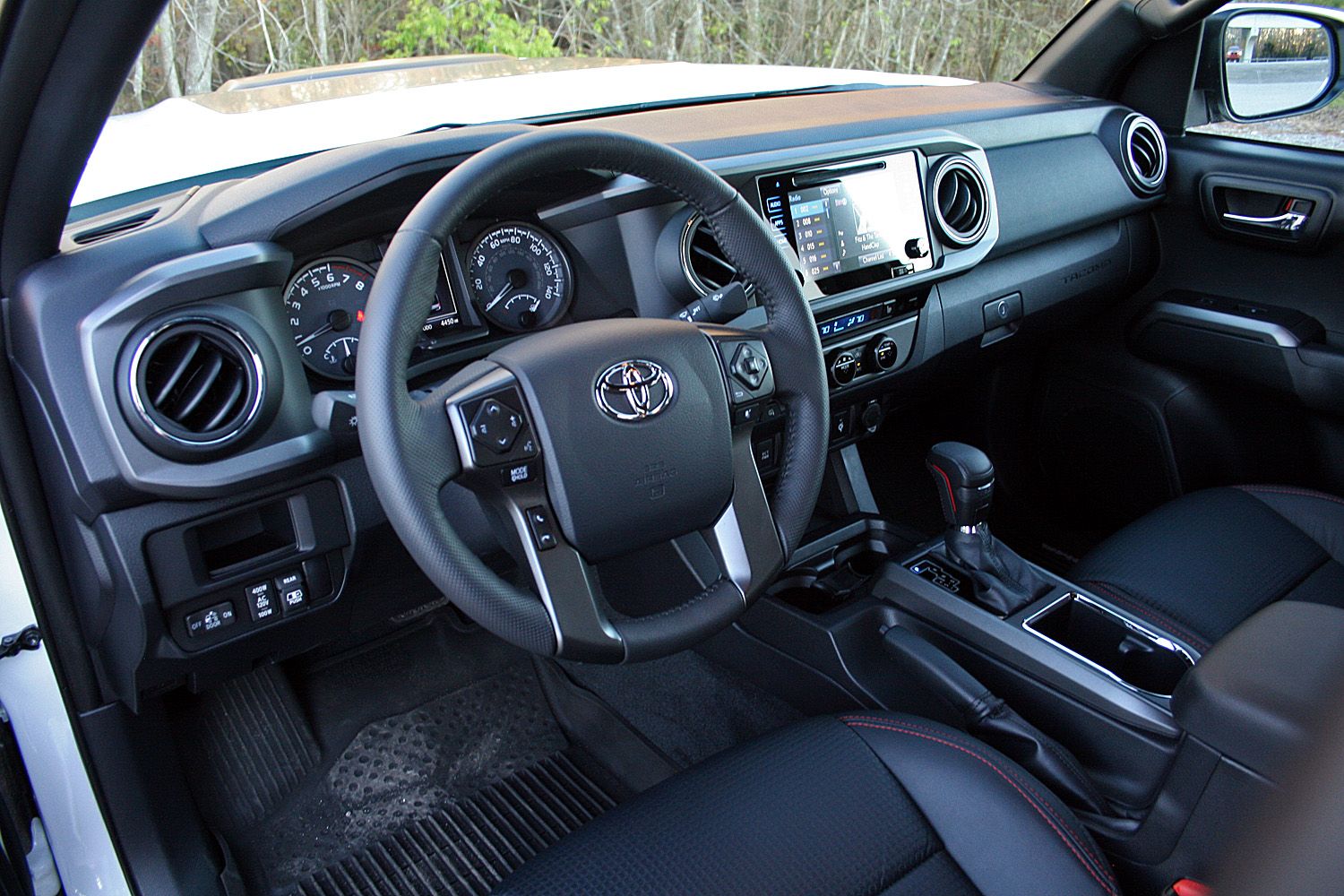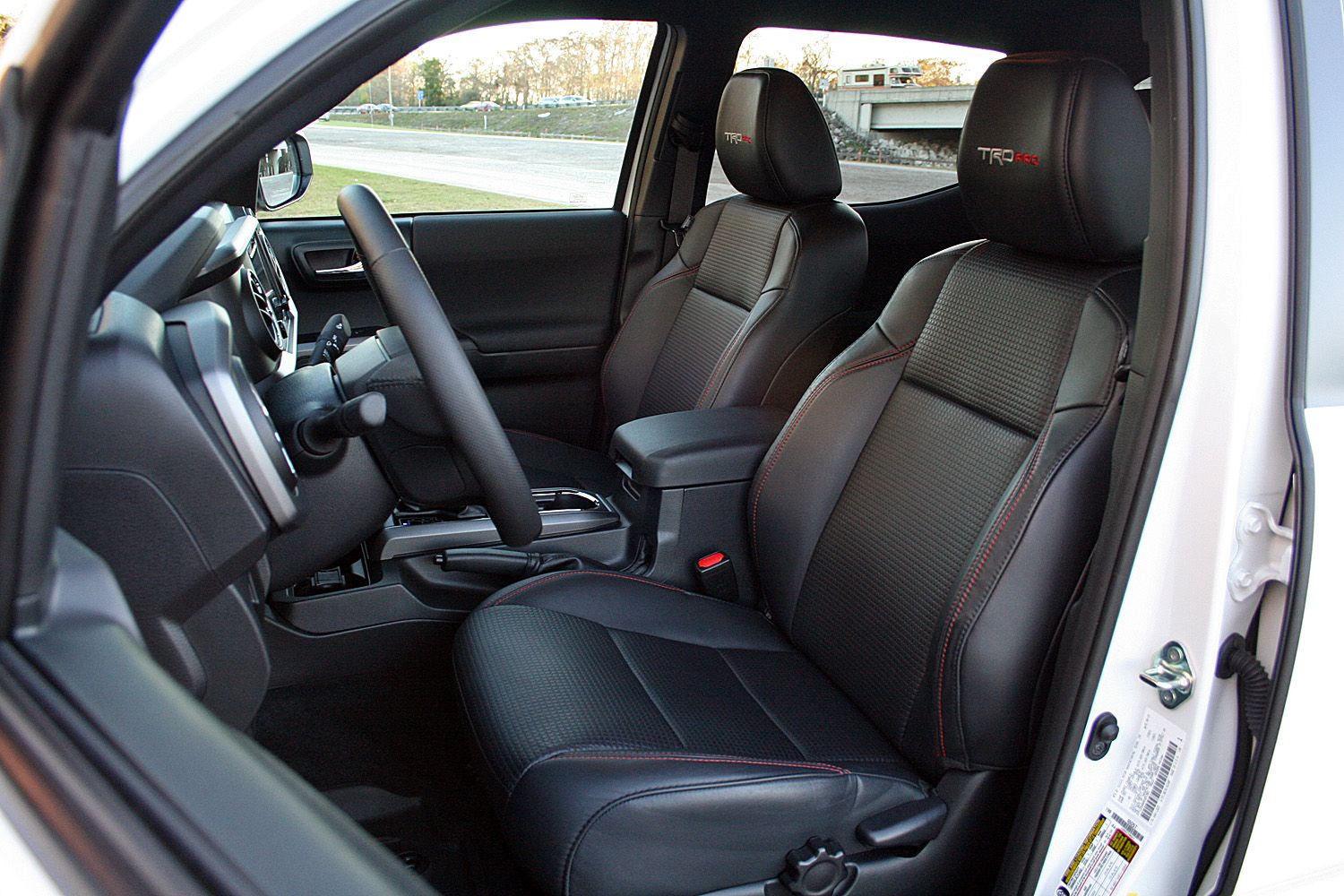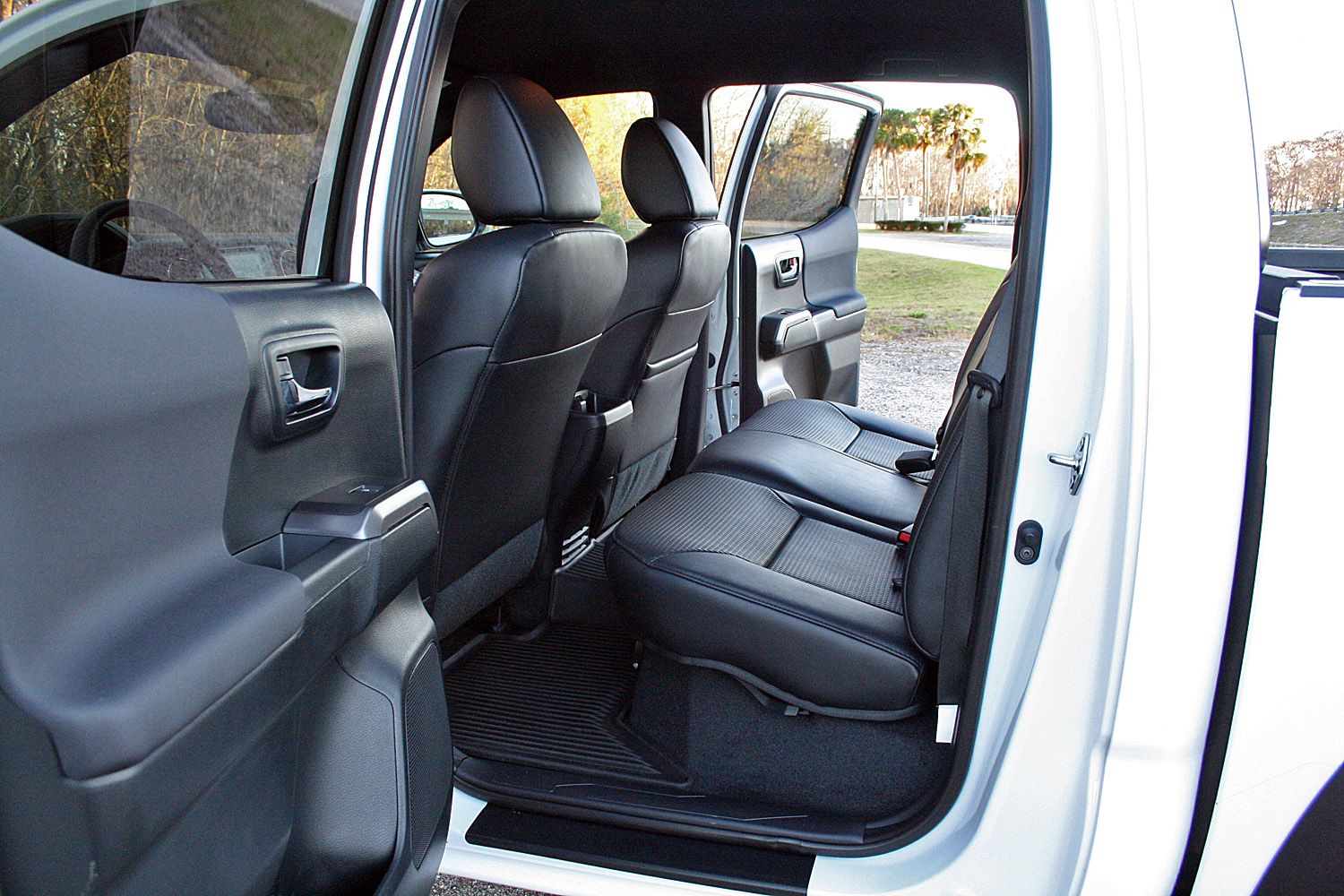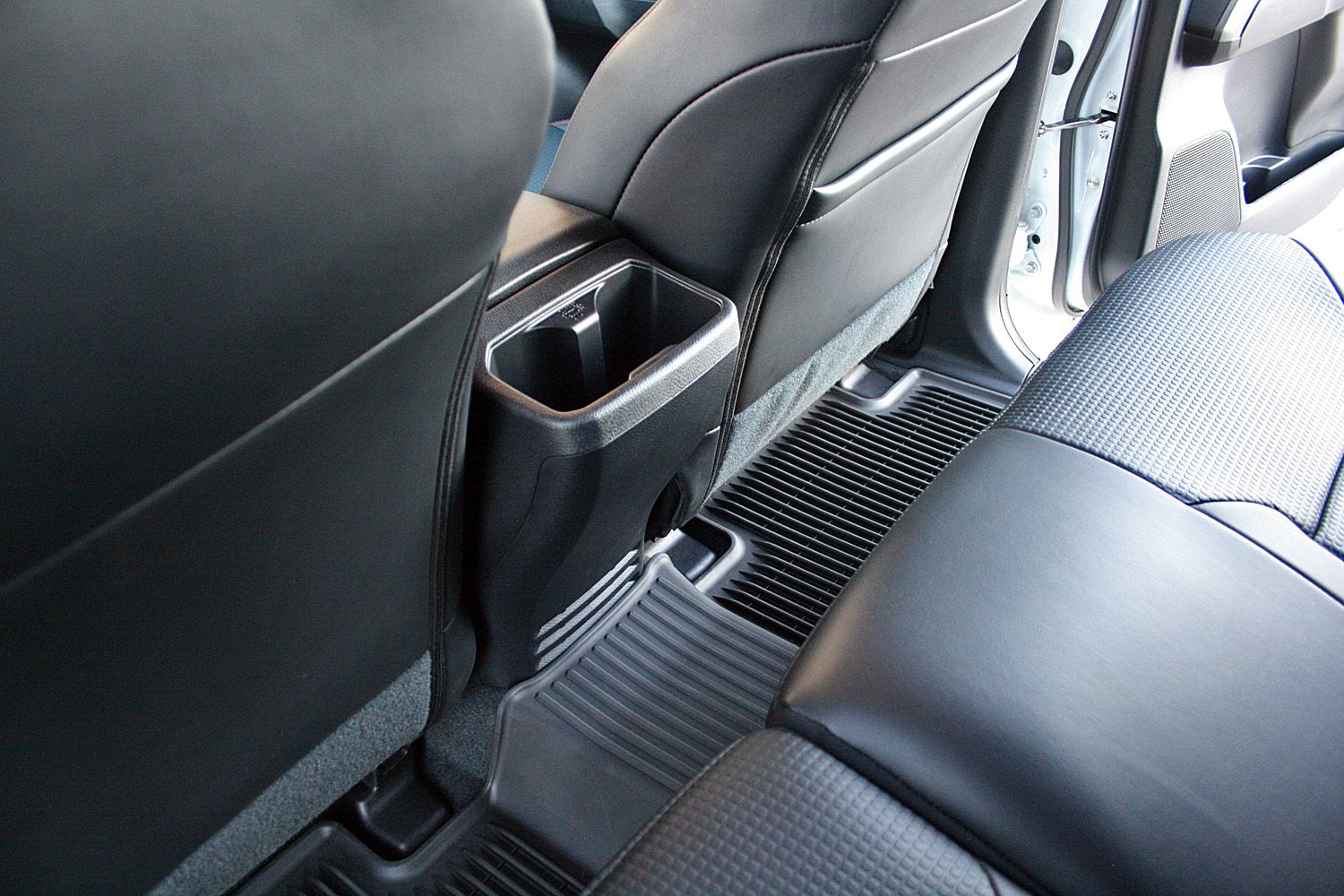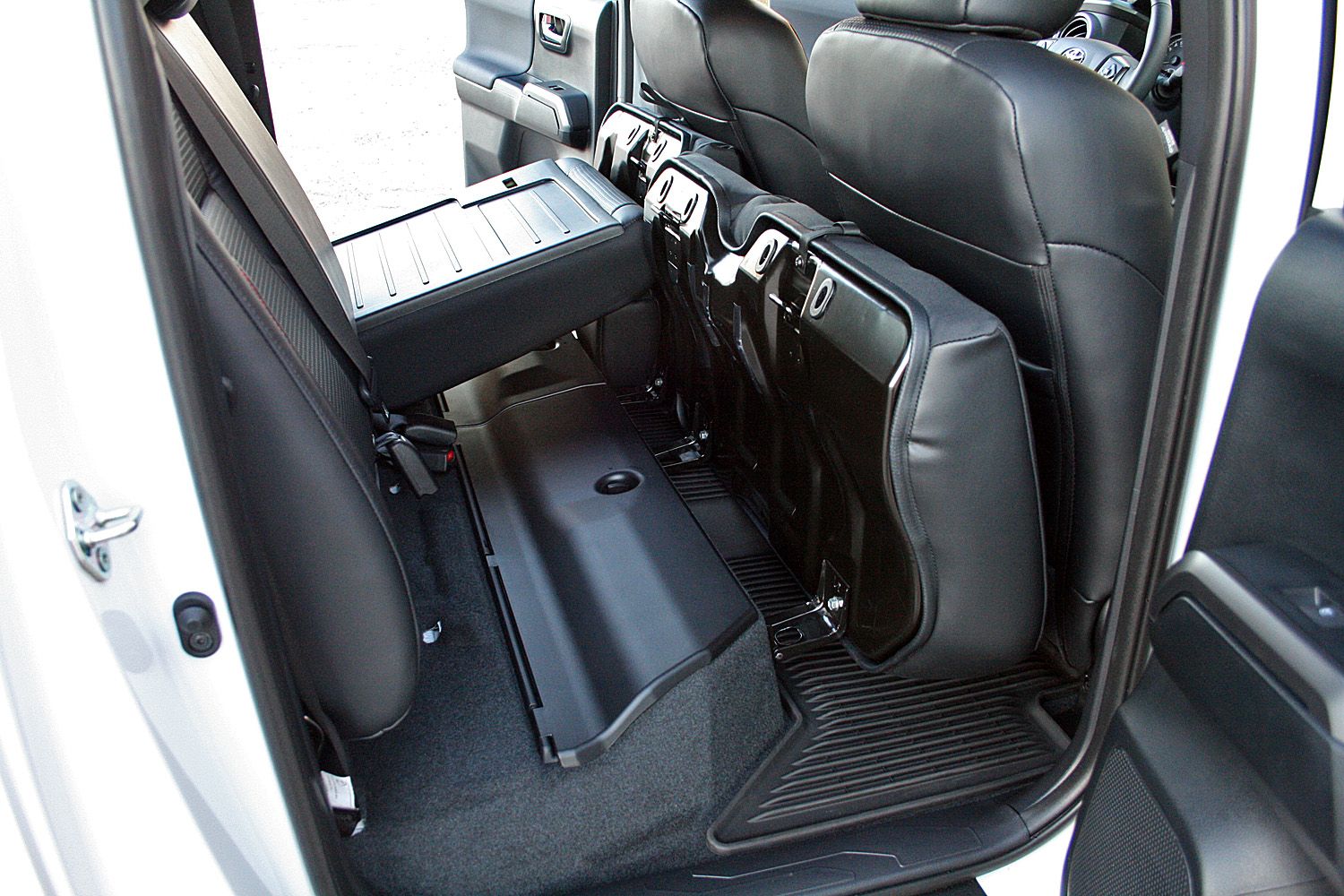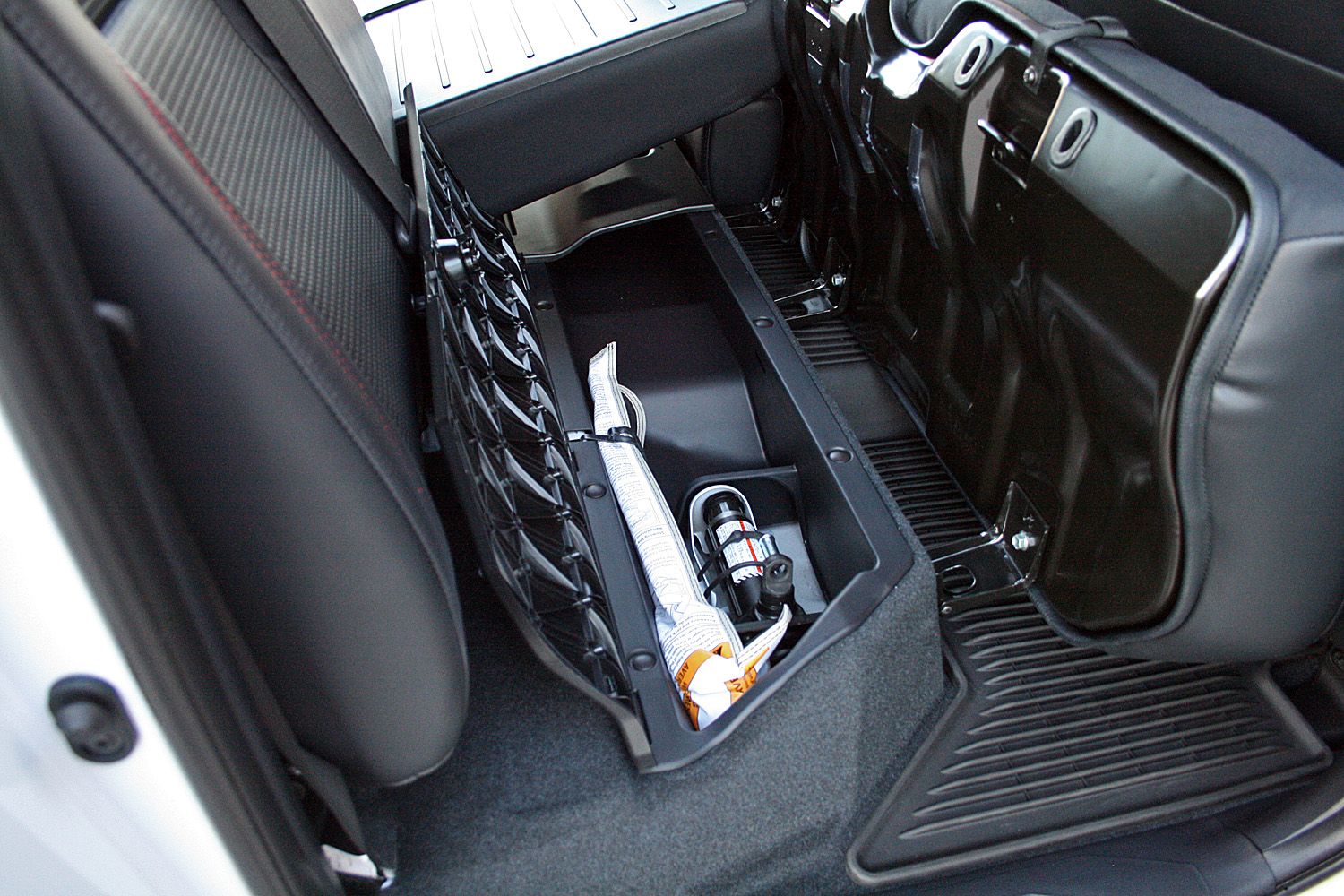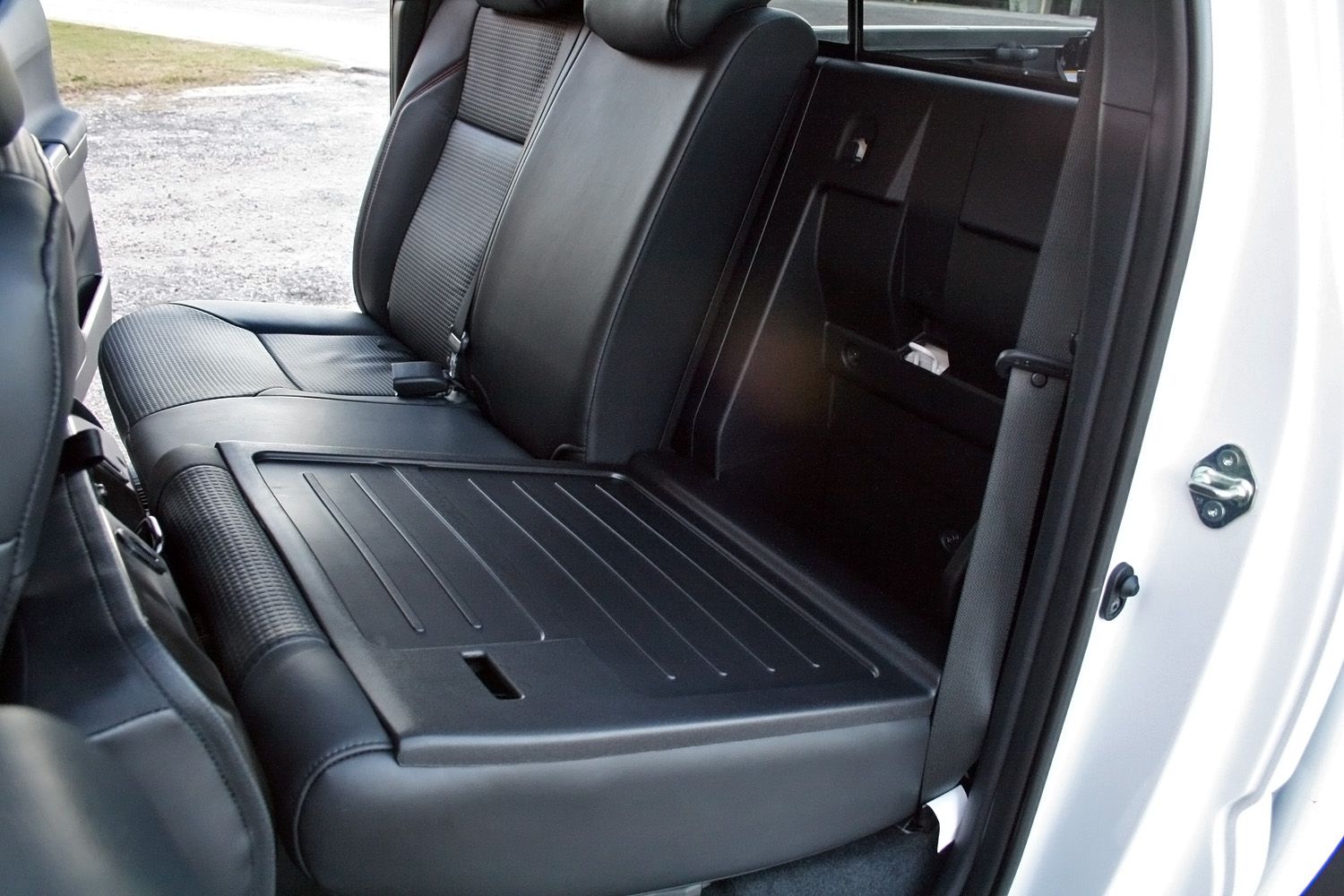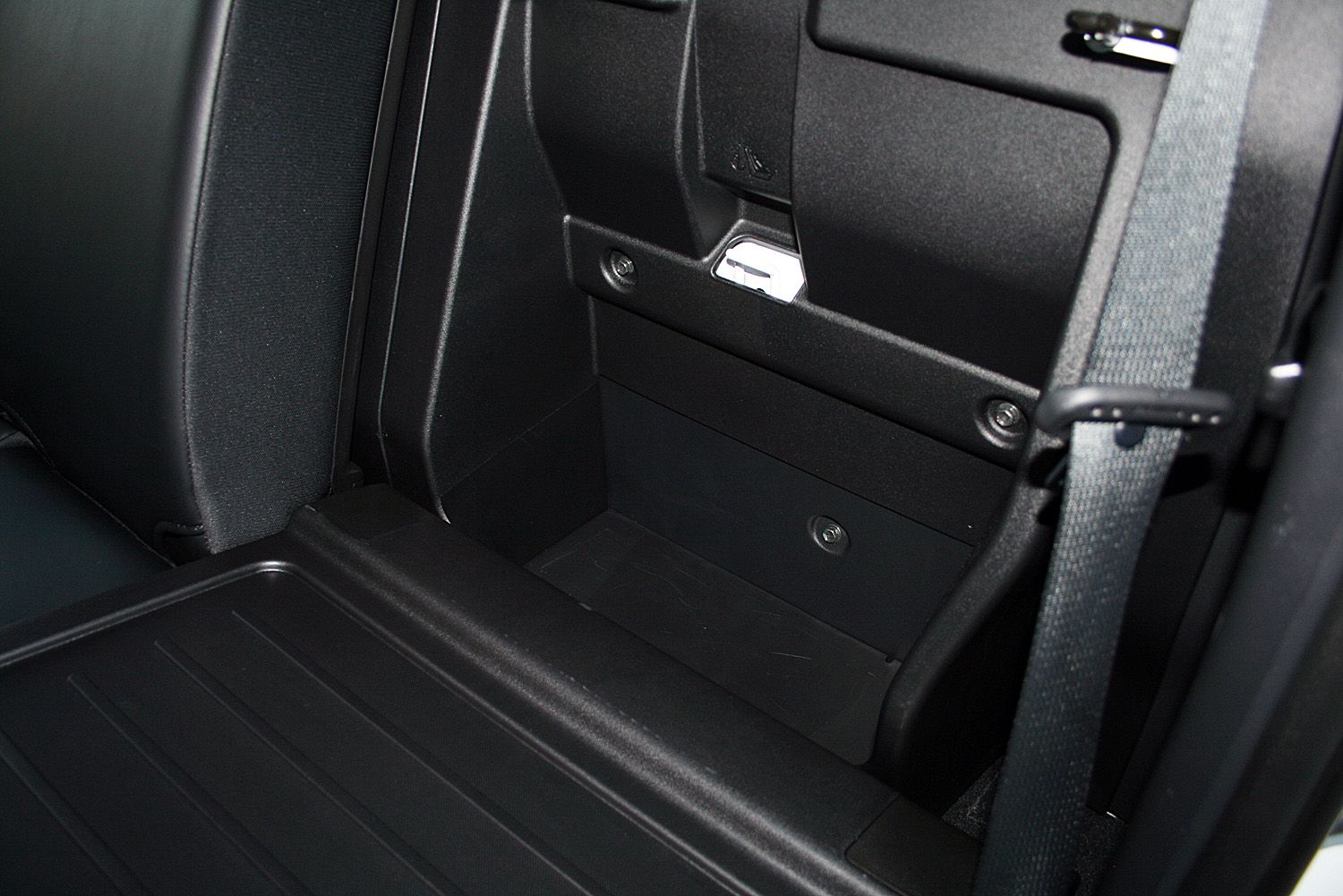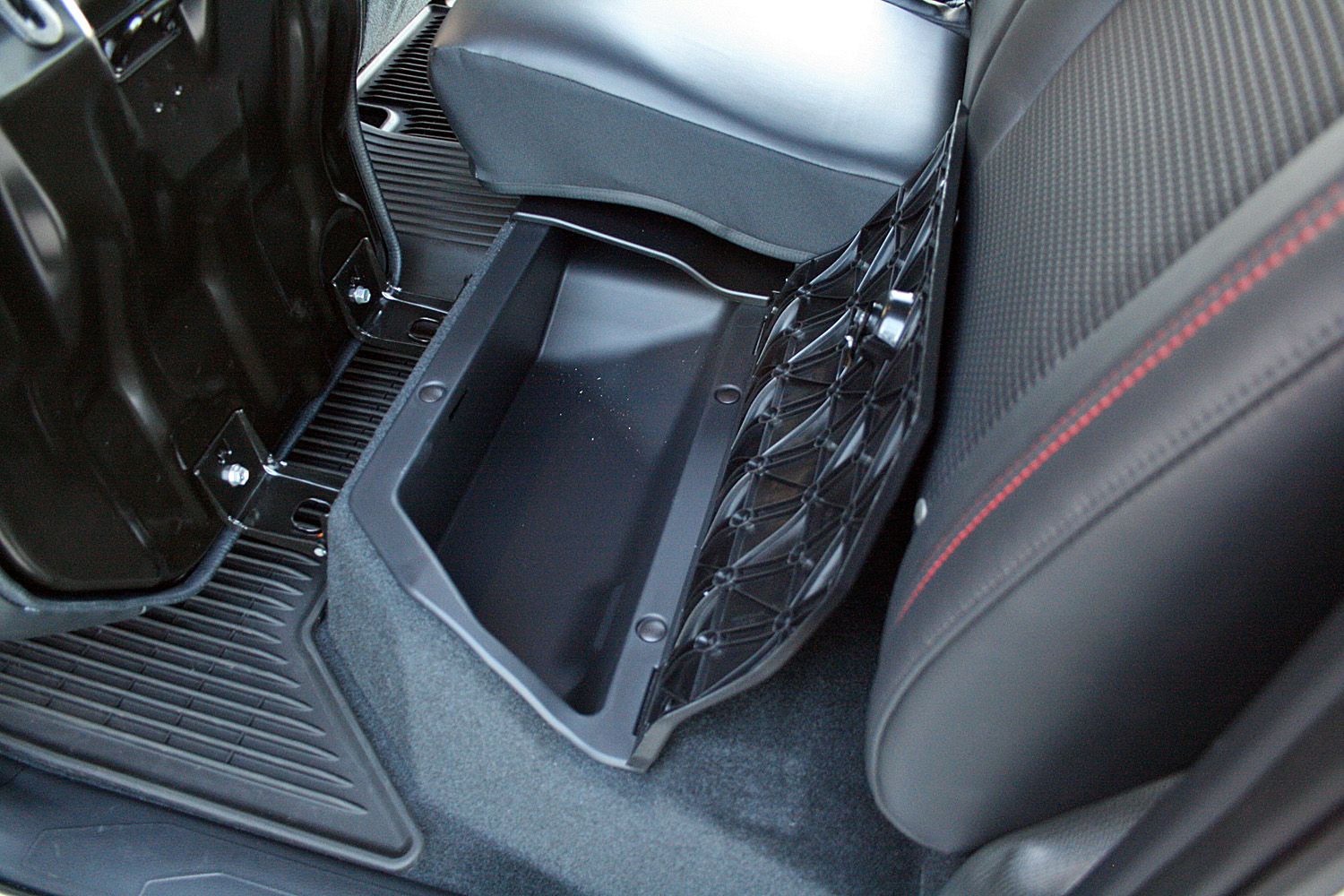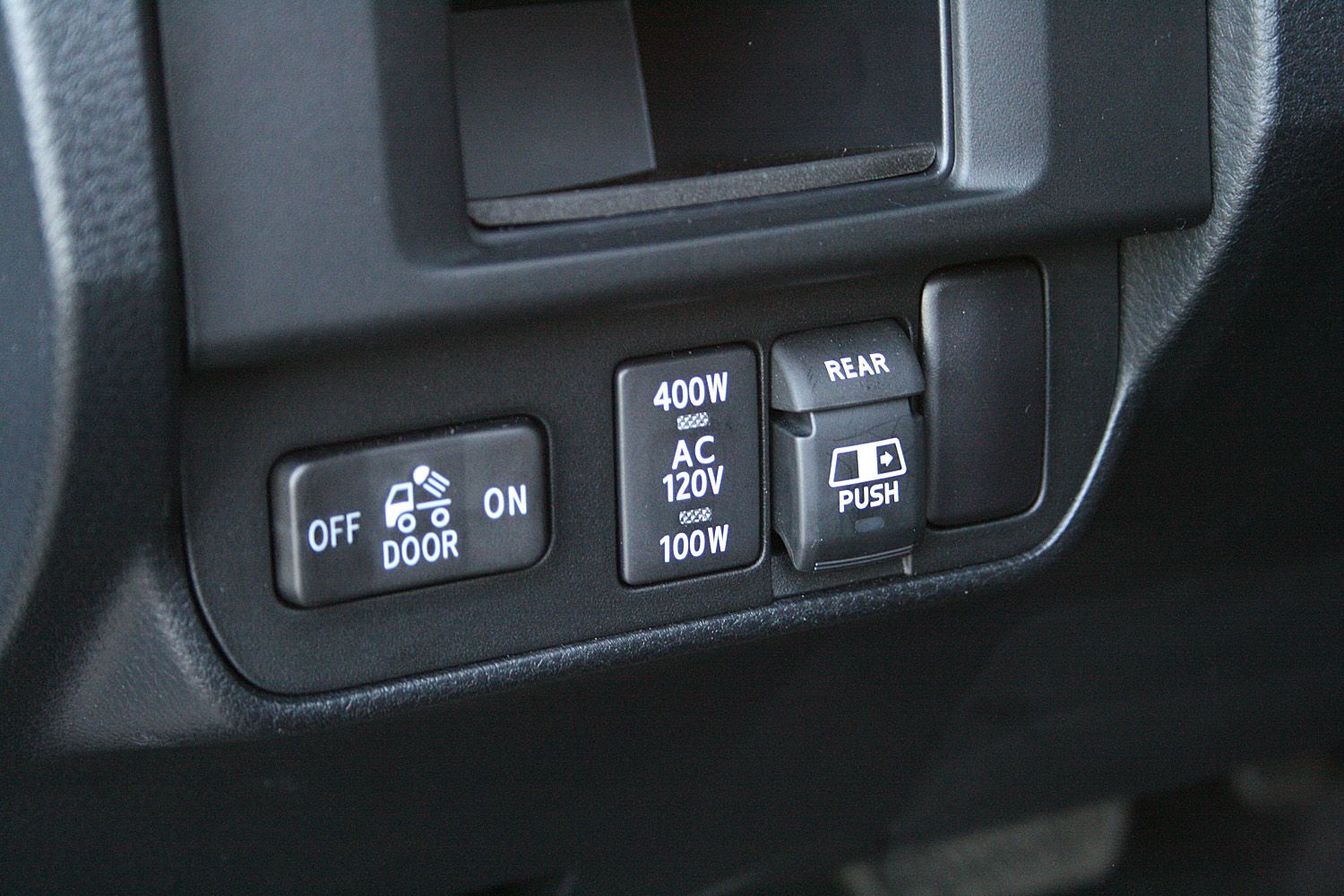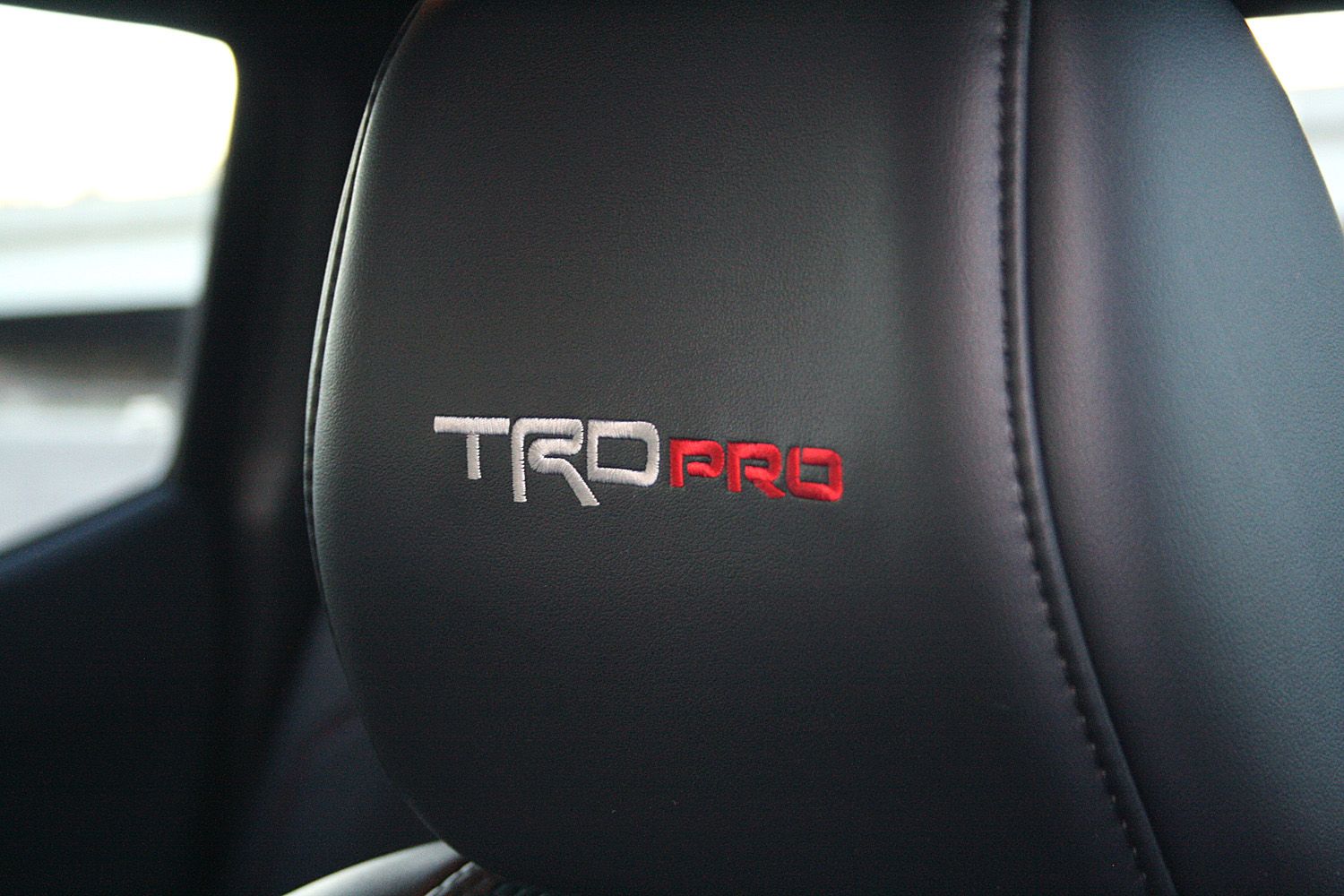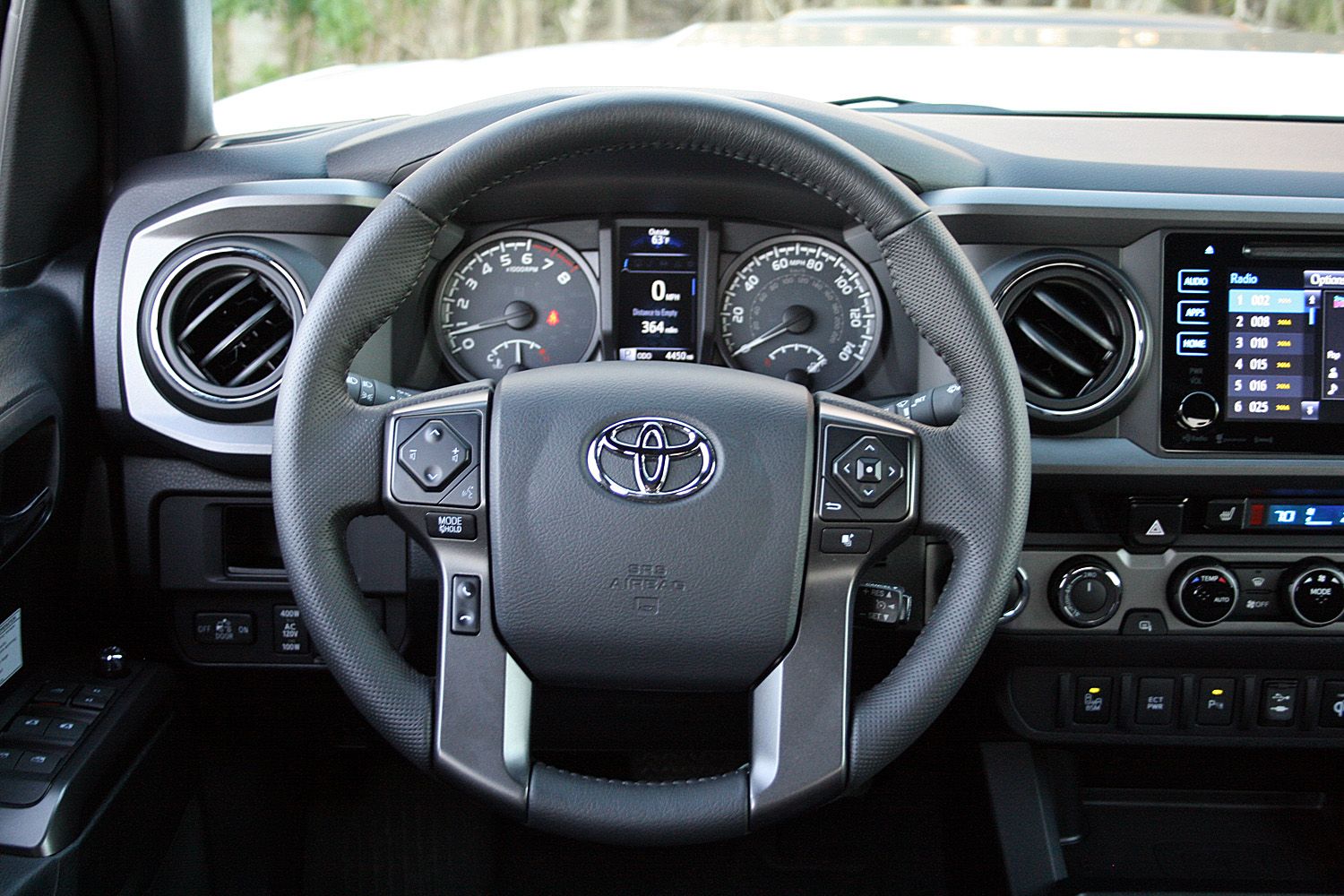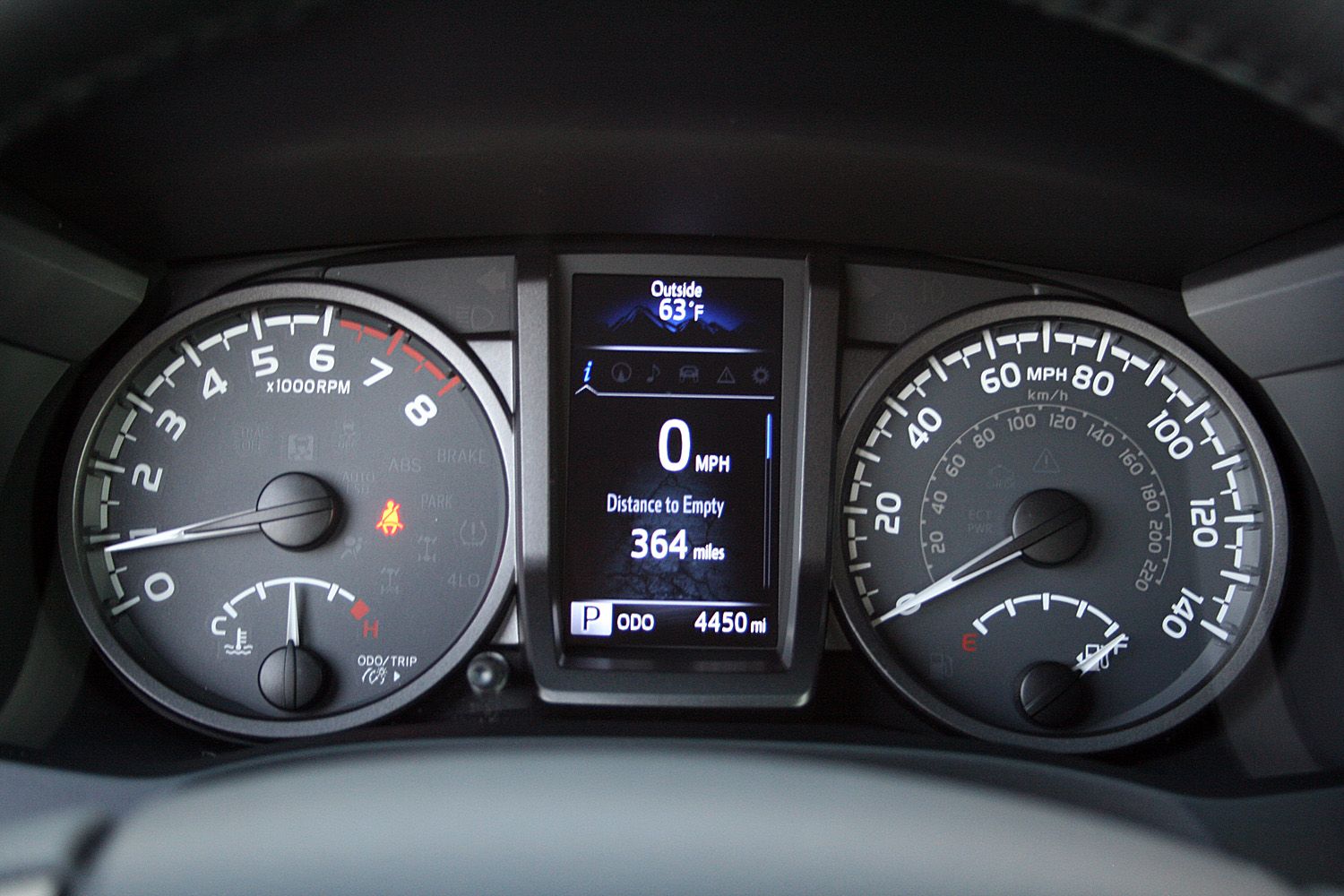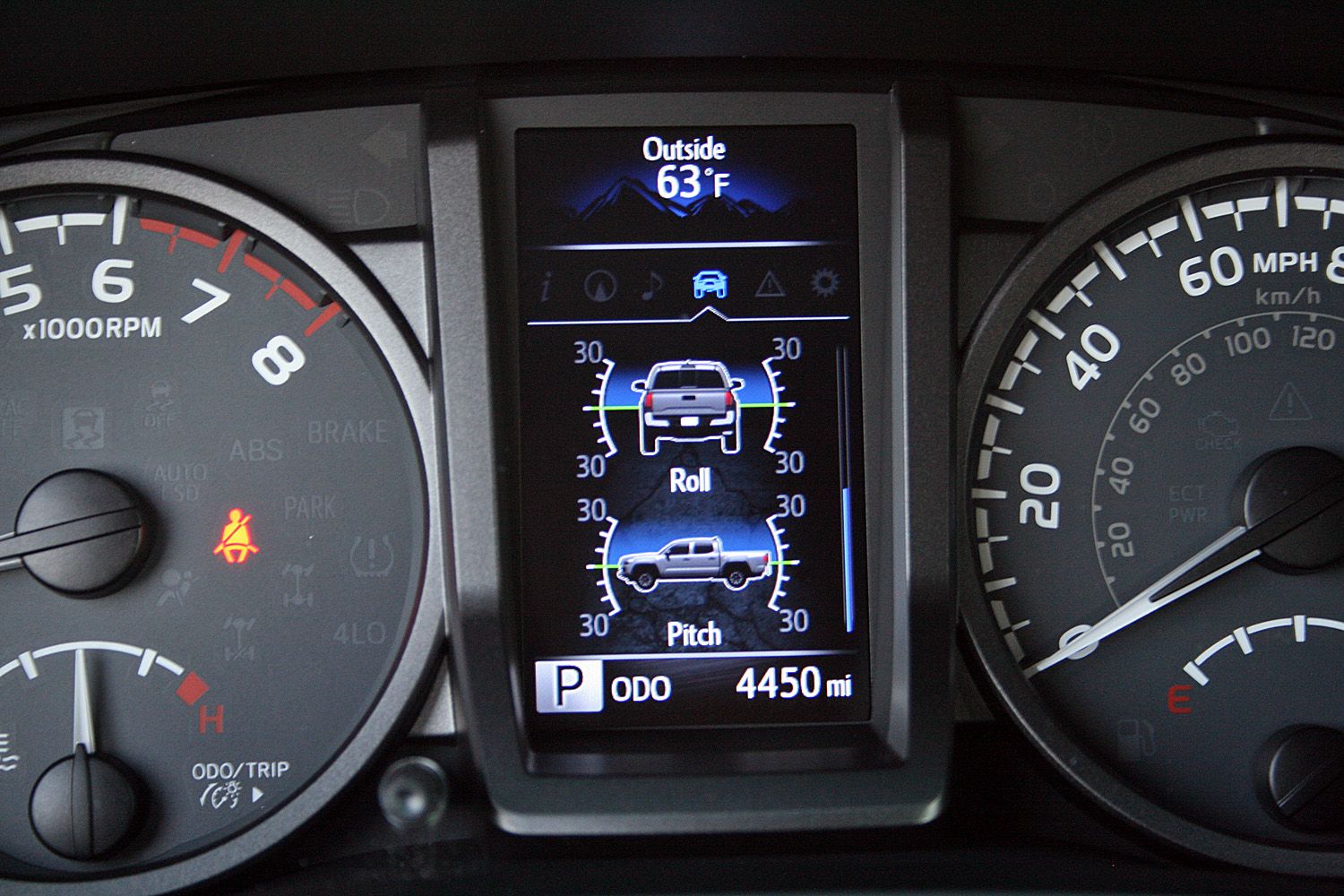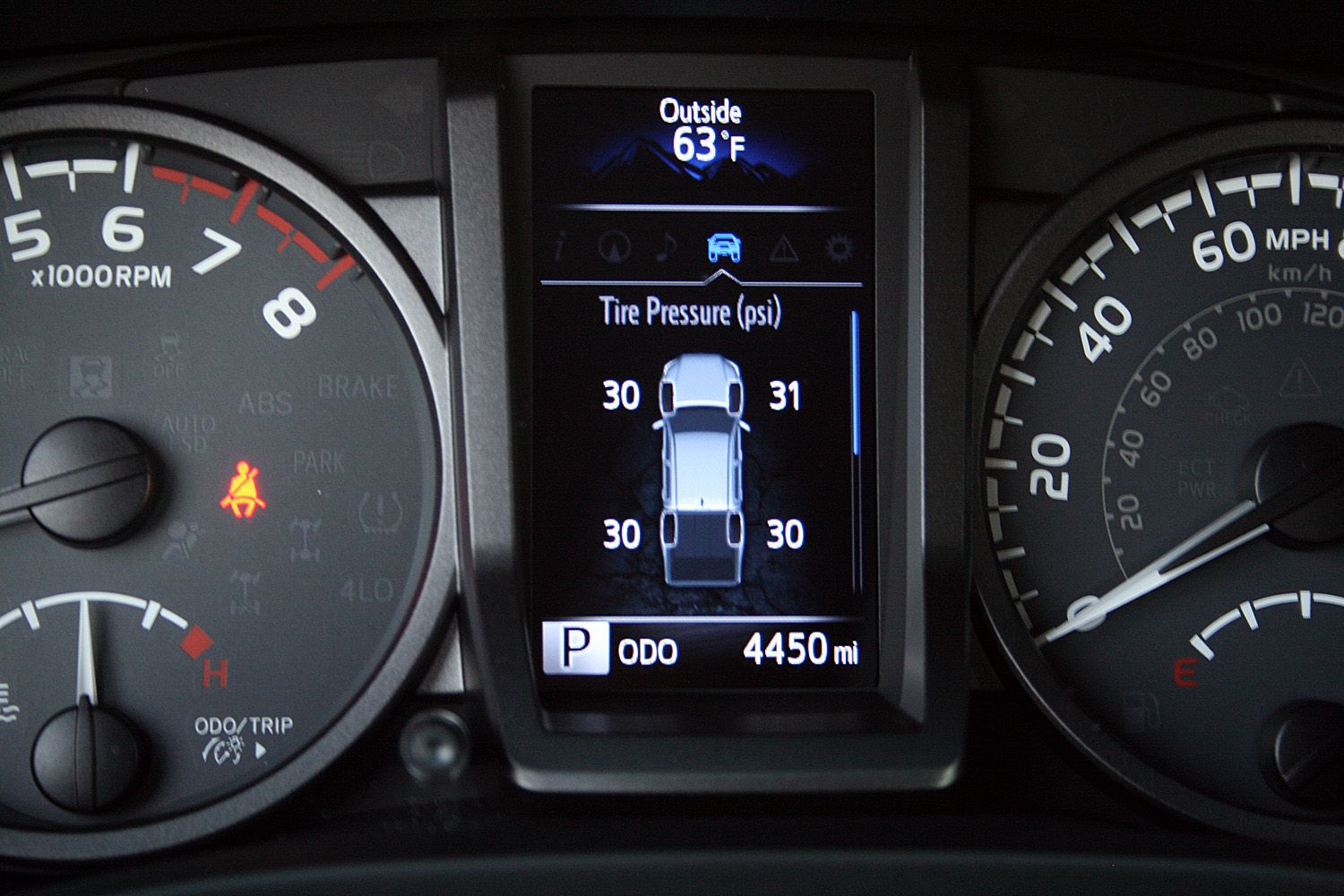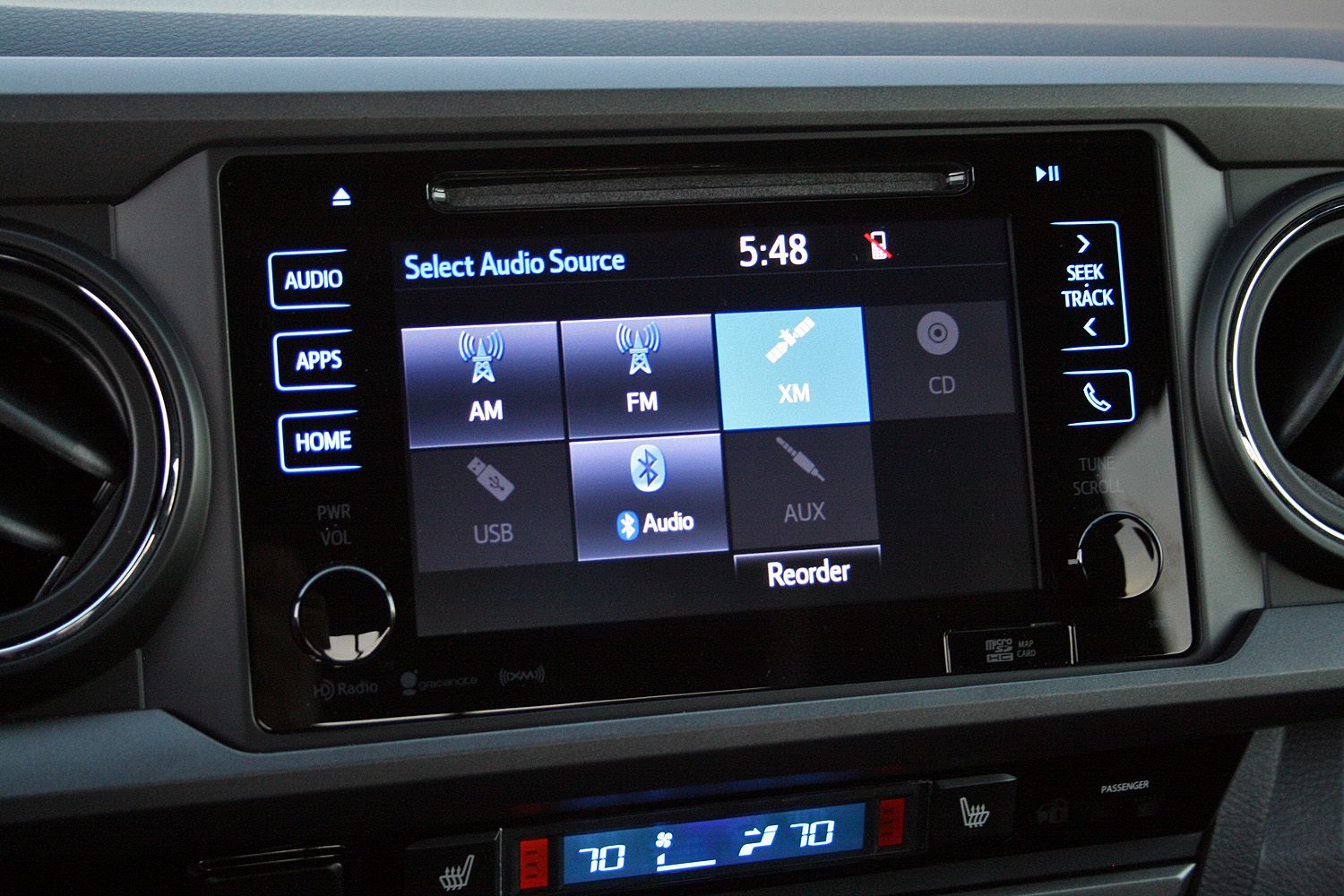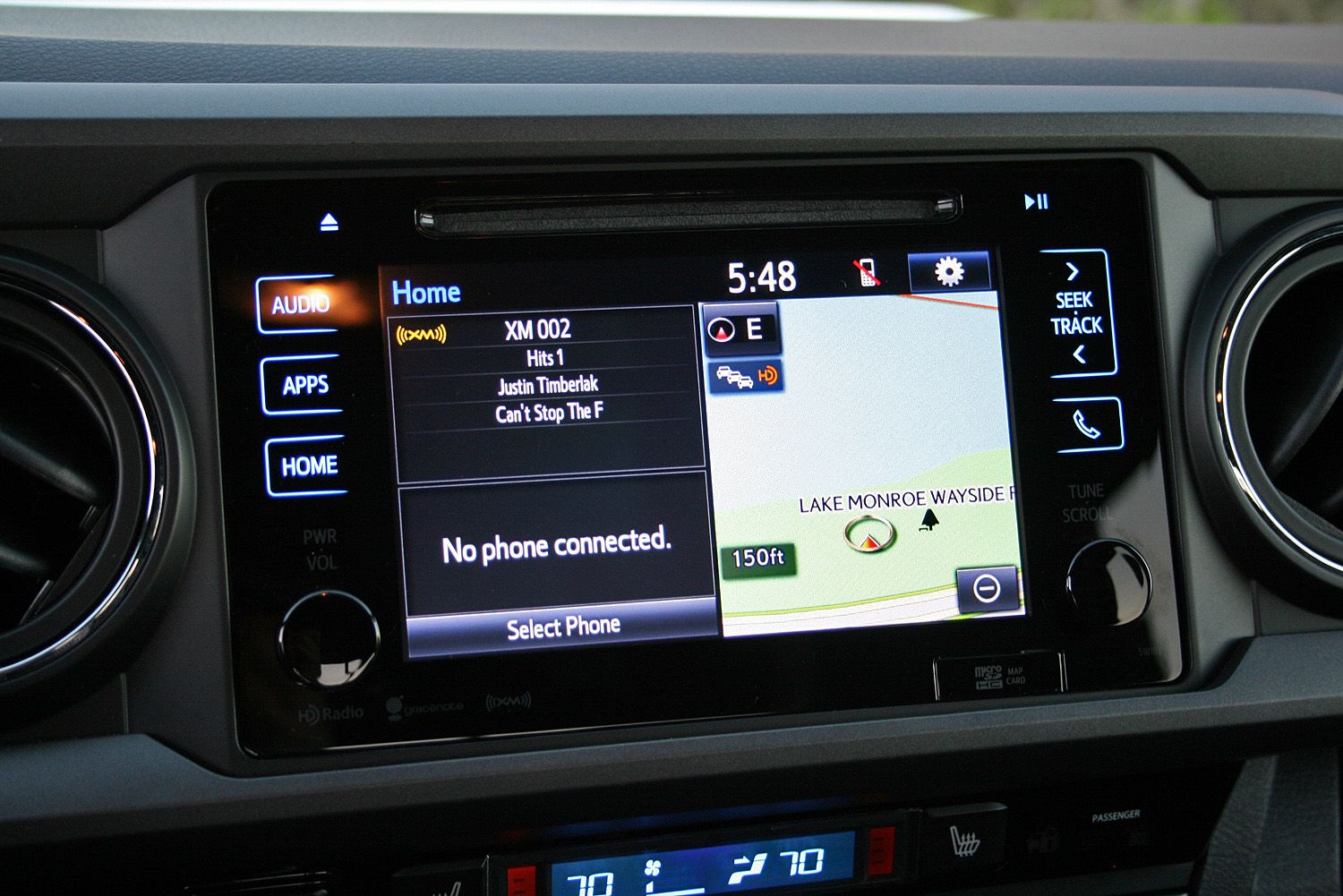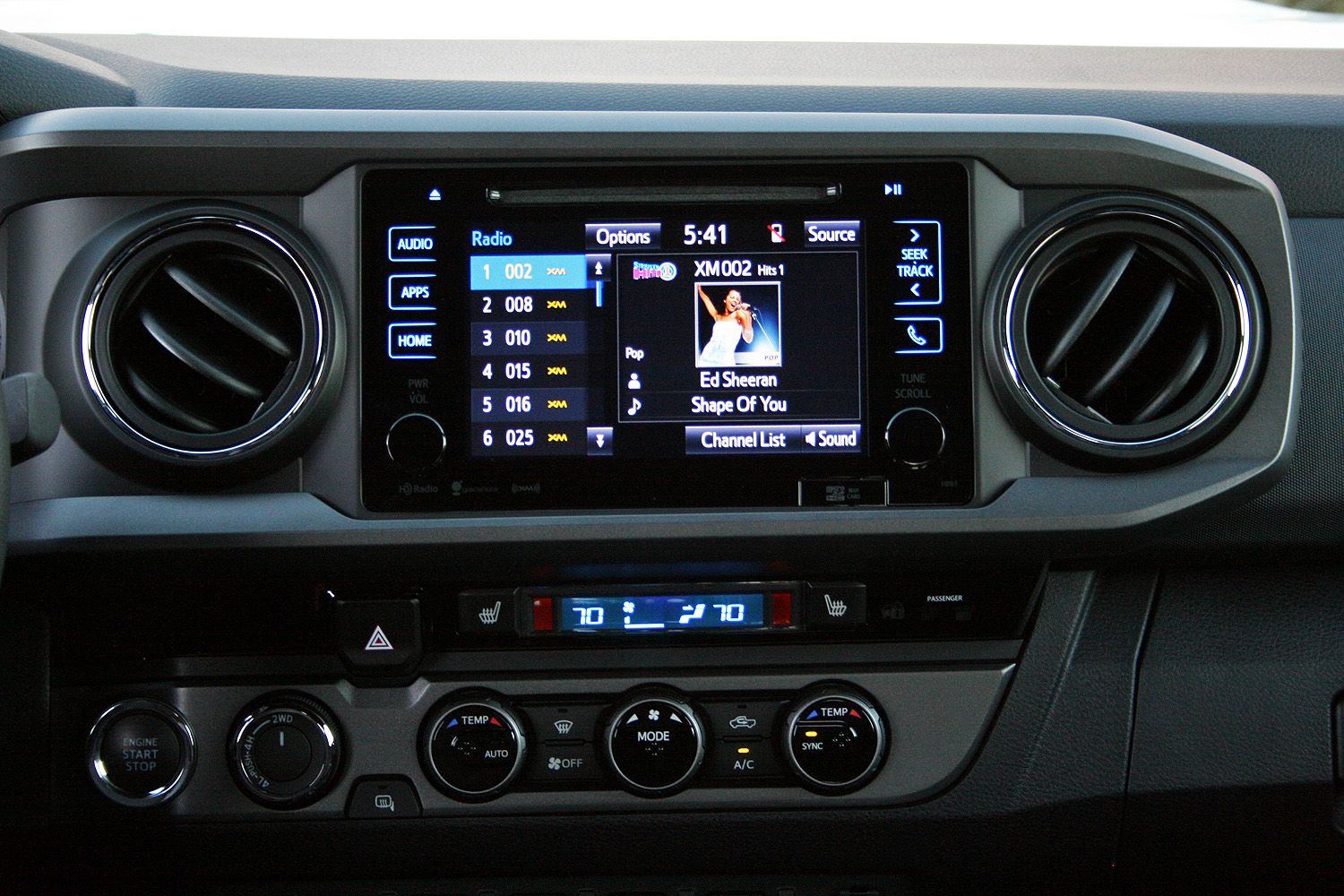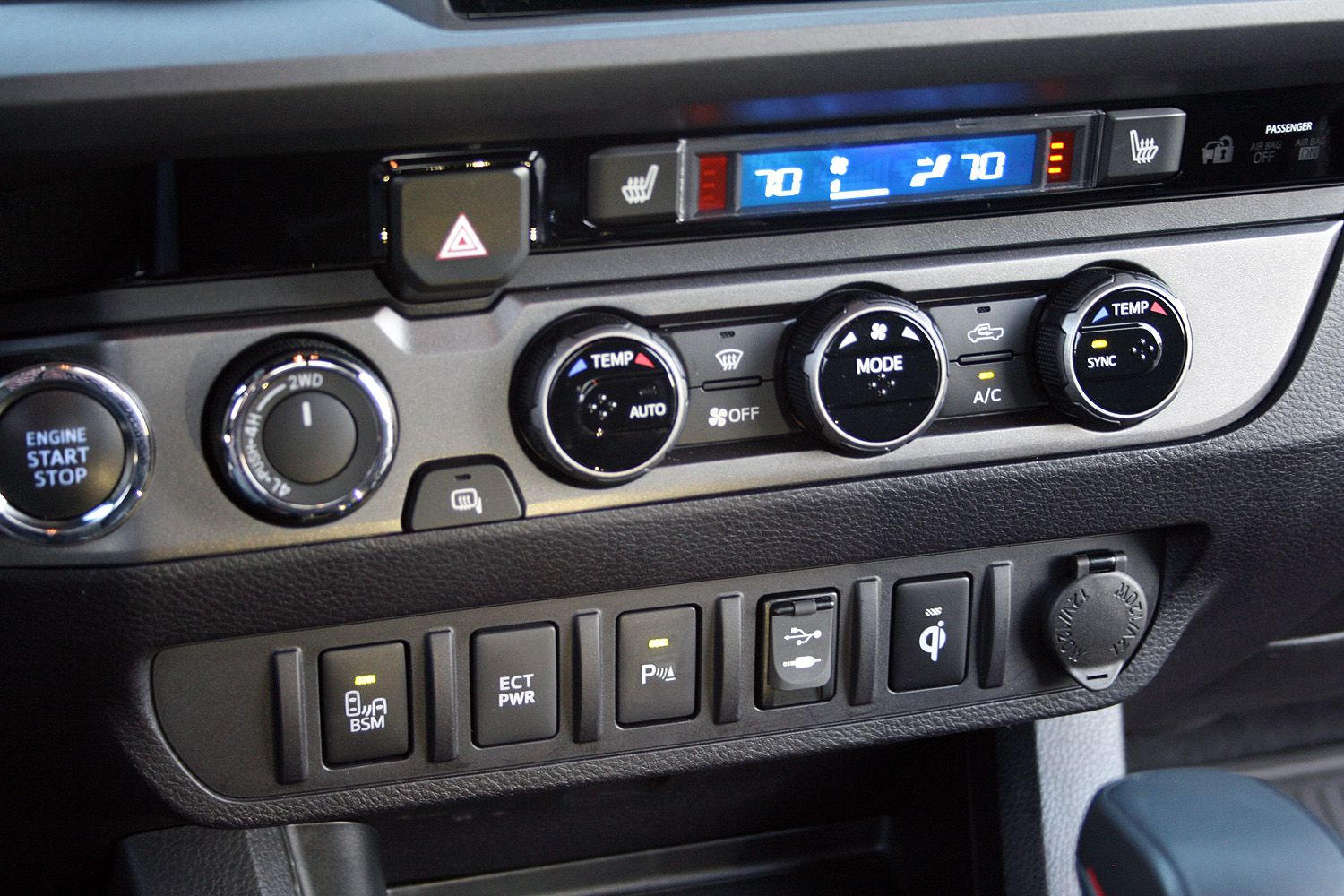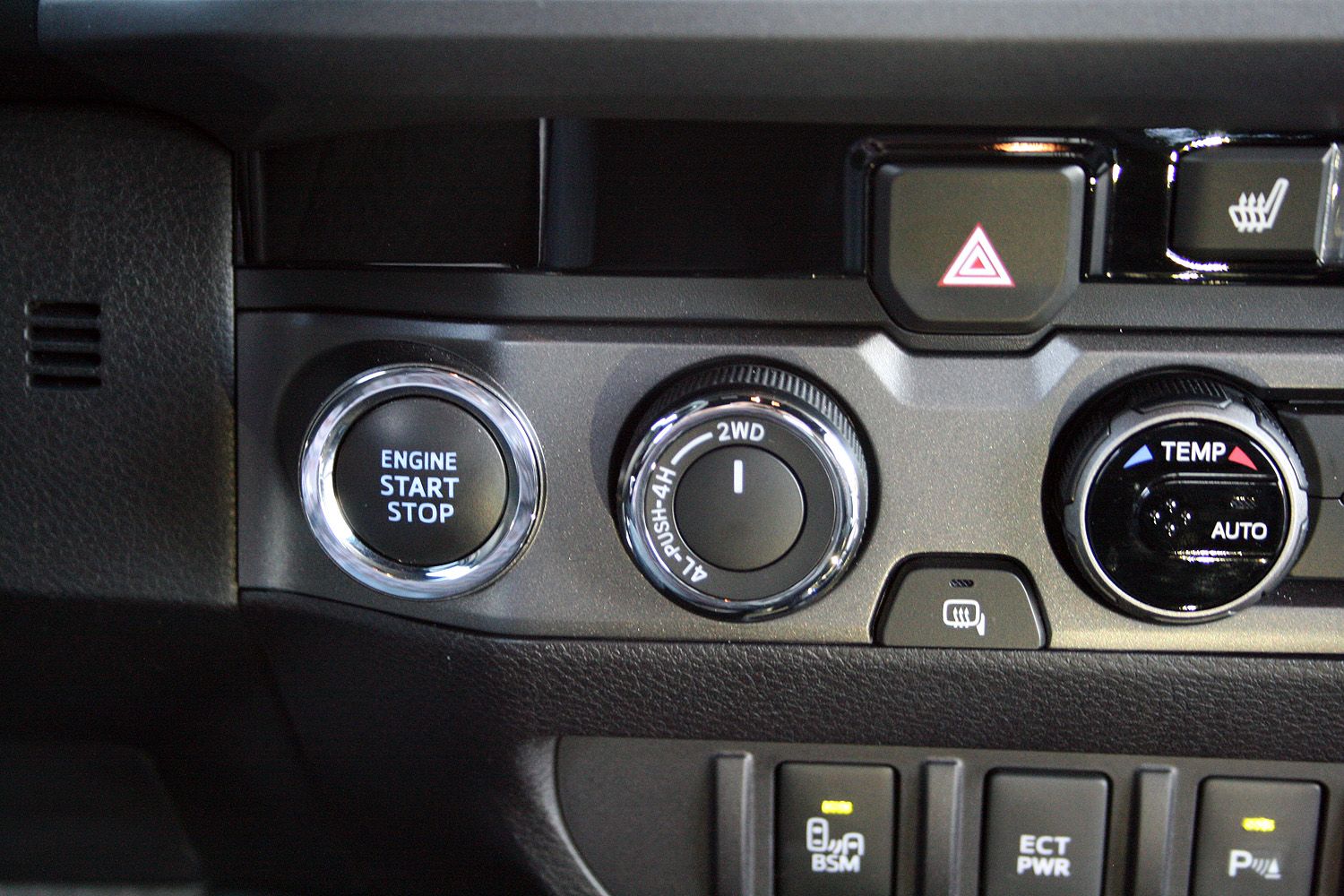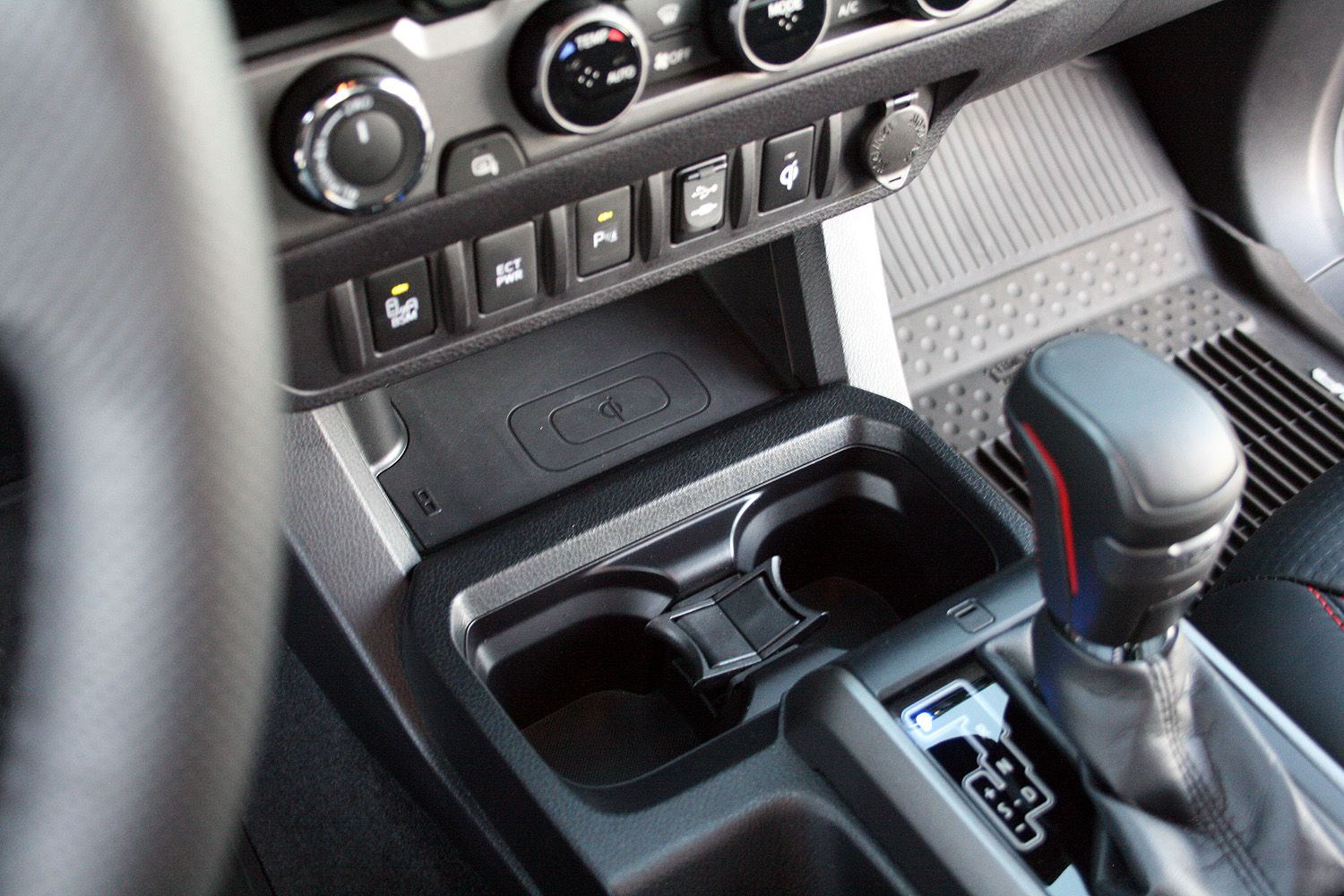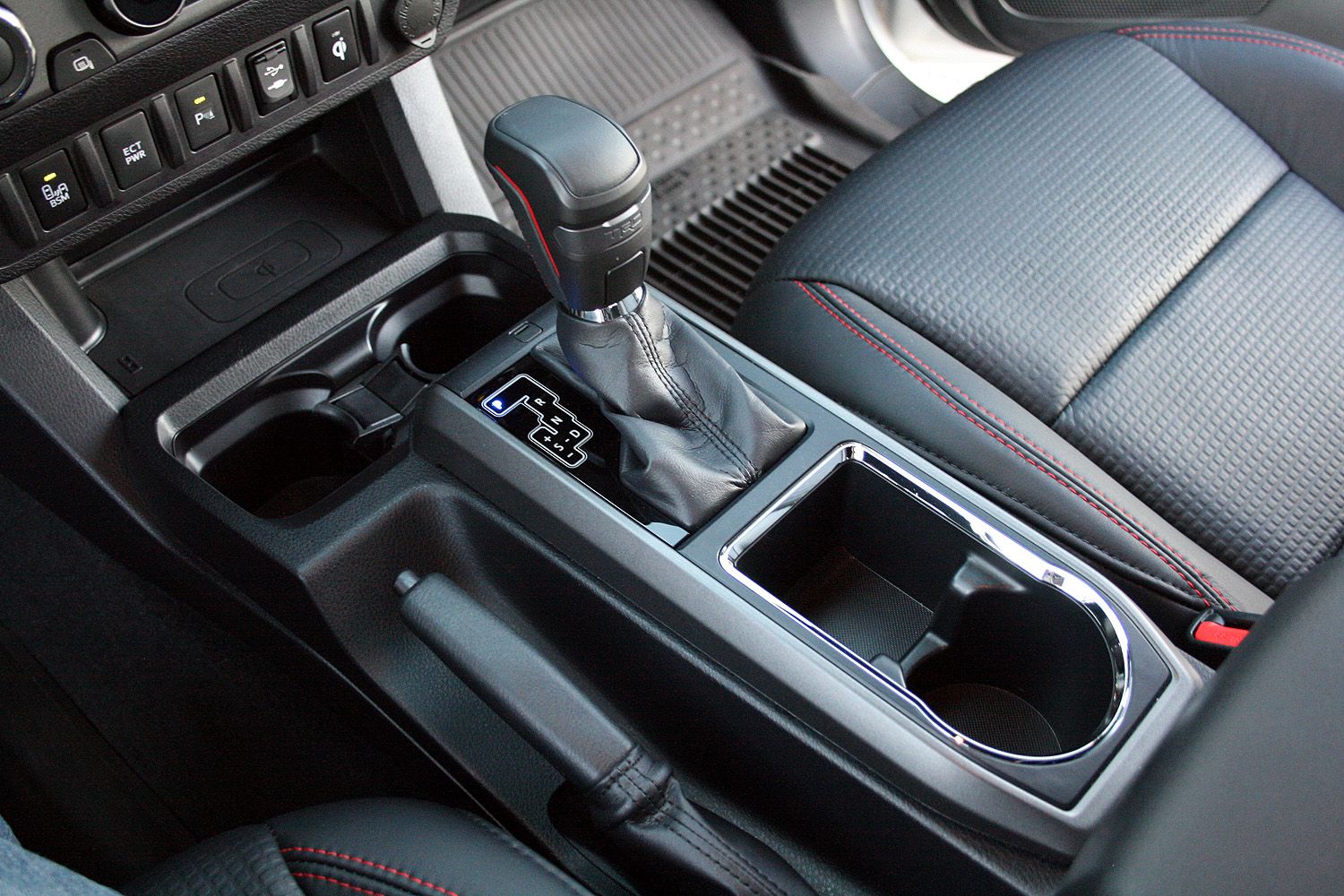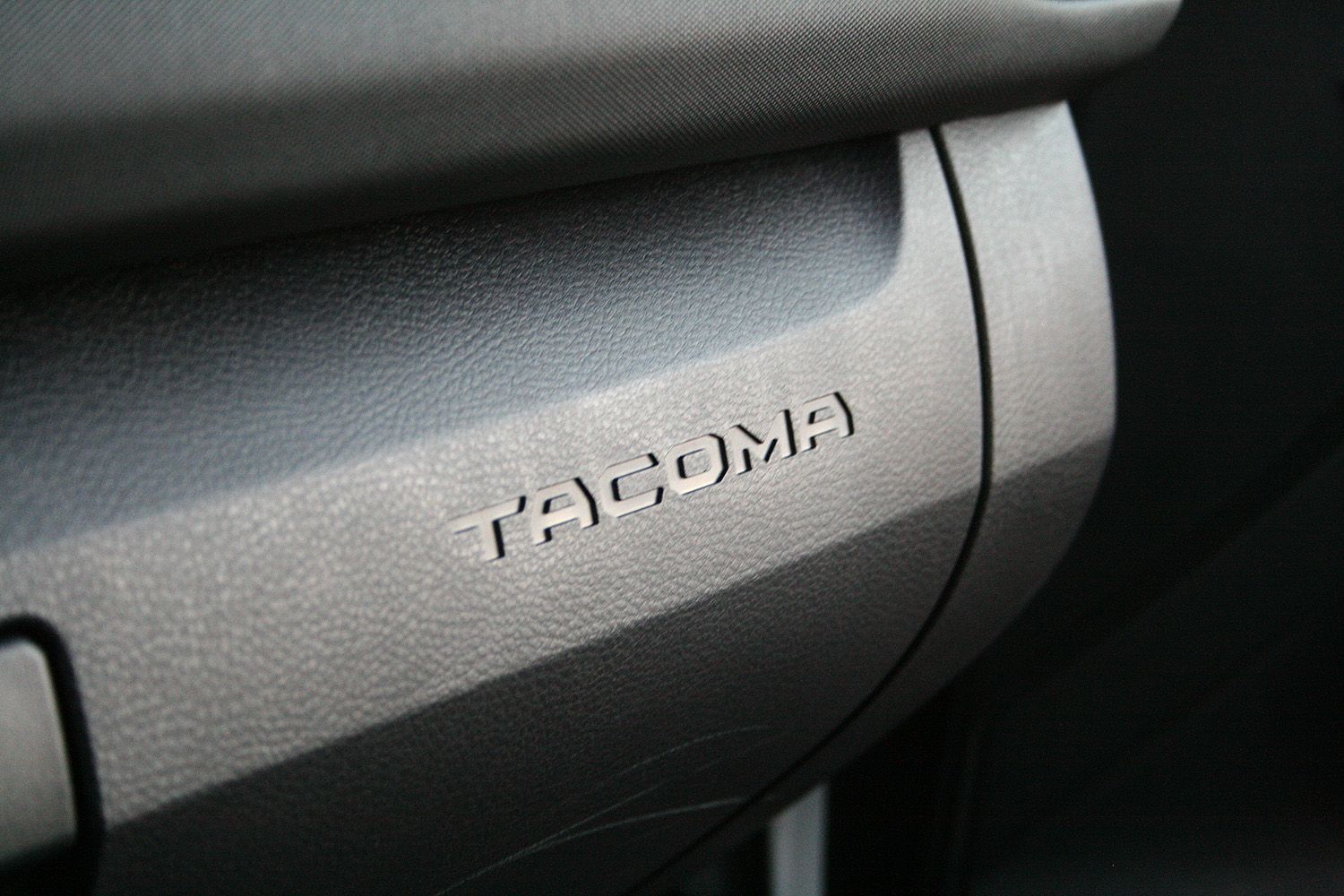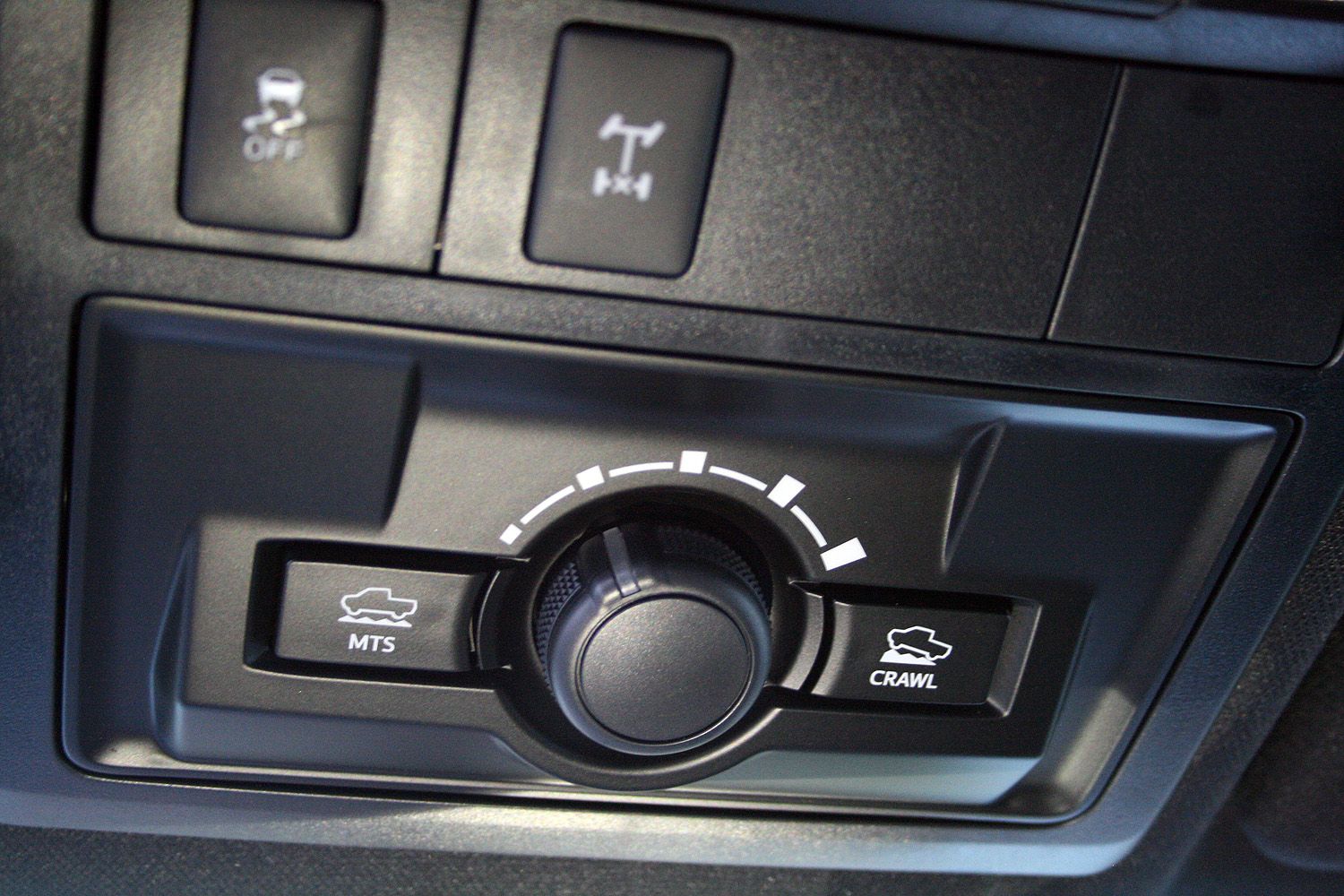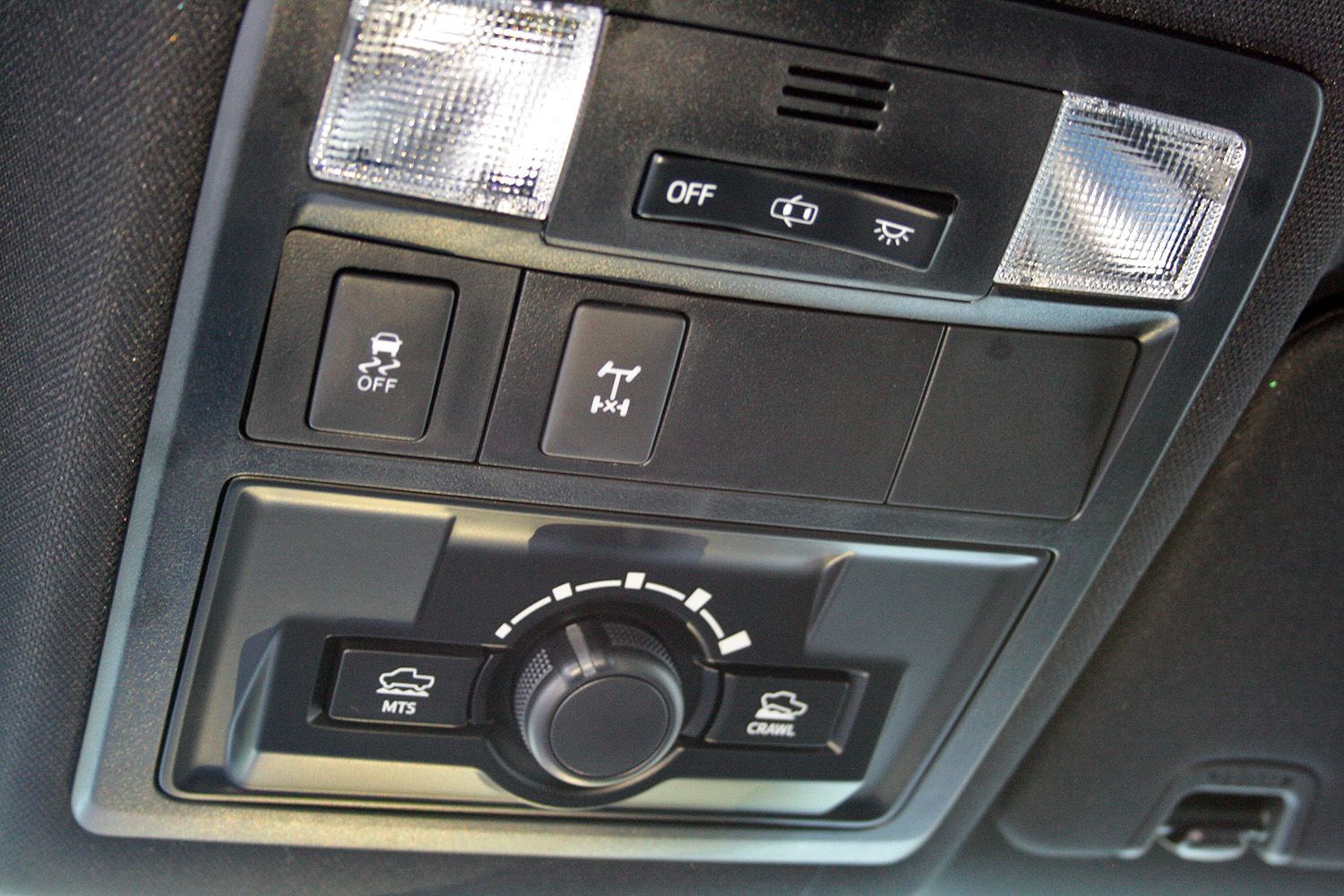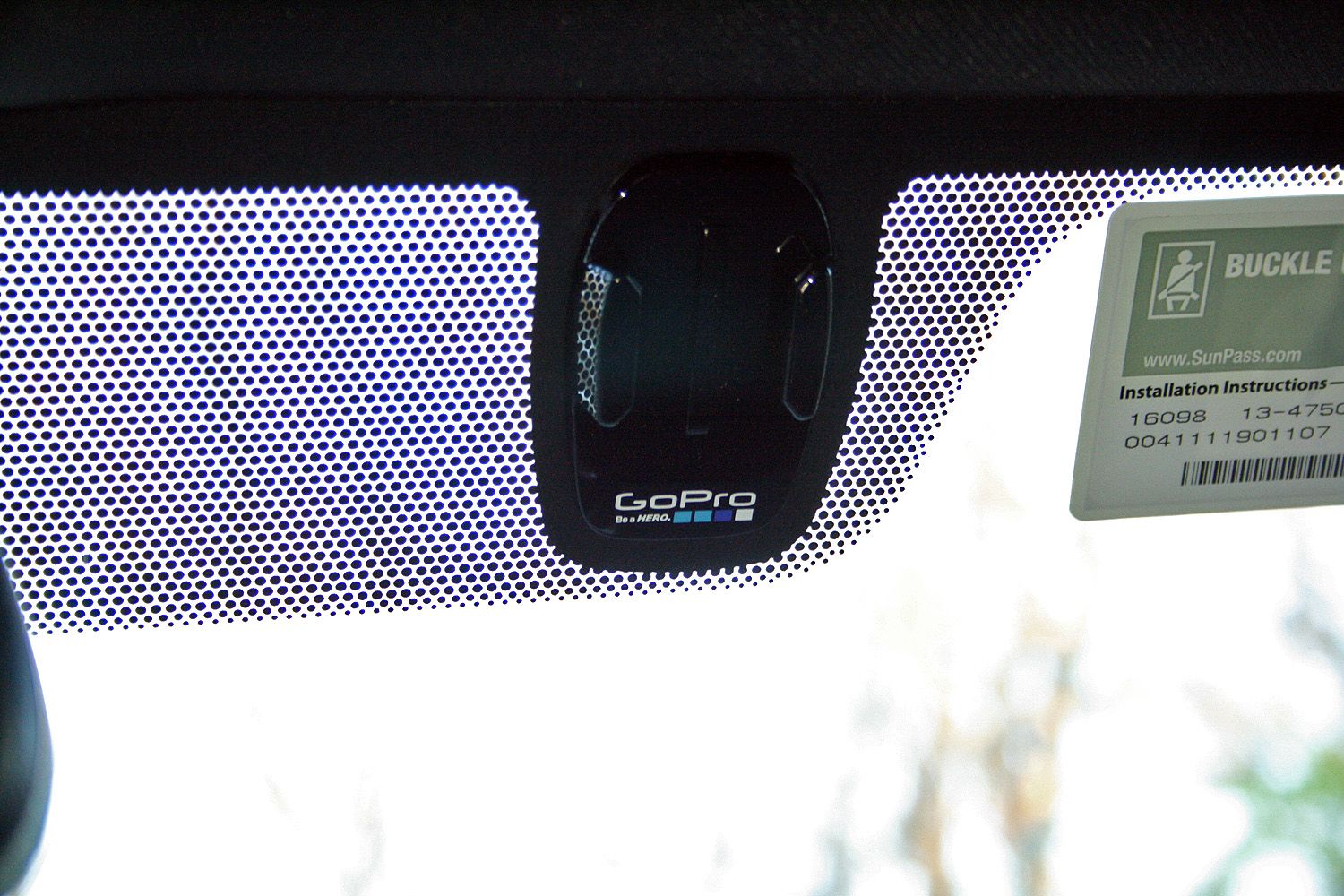Toyota has a long history with mid-sized, high-riding pickups in America. Many might remember Marty McFly’s 1985 Toyota truck with its tube bumpers, lifted suspension, alloy wheels, and black paint job. While most of these trucks have rusted into the history books, their spirit lives on in Toyota’s modern Tacoma – and no more so than with the Tacoma TRD Pro. This lifted truck with its blacked-out wheels and bold grille give it a flair for the past, while still answering the trends of today.
I had the chance to spend a week with the 2017 Toyota Tacoma TRD Pro, which came dressed in Super White and built on the Double Cab platform. I spent an extensive amount of time driving the highways and surface streets surrounding my Central Florida home. And of course, I sampled the deep, sandy ruts of trails running through wooded landscapes that appeared untouched since the Spanish Conquistadors landed in the 1500s.
The Tacoma TRD Pro attracted a lot of attention during its stay in my driveway, and it’s no wonder. The Tacoma is the best-selling mid-size pickup in the U.S. these days, outselling the Chevrolet Colorado, GMC Canyon, Nissan Frontier, and Honda Ridgeline. There’s something about the truck that snags people’s interest. Most comments tended to focus on the black-on-white color scheme and the blocky TOYOTA grille.
So what’s it like living with the Taco Supreme? It’s spicy… but sometimes not in a good way. Keep reading for the explanation.
Continue reading for the full driven review.
2017 Toyota Tacoma TRD Pro – Driven
- Make: Array
- Model: 2017 Toyota Tacoma TRD Pro – Driven
- Engine/Motor: V6
- Horsepower: 278 @ 6000
- Torque: 265 @ 4600
- Transmission: Six-speed Automatic
- [do not use] Vehicle Model: Array
Video Review
Exterior
Though white paint might not normally scream “Look at me!,” the Tacoma TRD Pro got lots of attention. Some might attribute the wide stance and bulging fenders. Some might say it’s the impressive ground clearance, high approach angle, and visible skid plate. Still others might say it’s the hood scoop and TOYOTA-branded grille. No one is wrong here. Each of these certainly garner attention from bystanders.
Of these, several bits are unique to the TRD Pro trim. So what is TRD Pro? Well, TRD stands for Toyota Racing Development and it’s basically Toyota’s in-house skunkworks department dedicated to building more extreme version of vehicles. There are TRD versions of everything from the Tundra pickup to the Camry. TRD also offers a slew of parts through Toyota’s dealership network as aftermarket add-on parts, much like FCA’s Mopar division or General Motor’s GM Performance Parts.
The TRD Pro label means the truck is a dedicated off-roader. Toyota offers the TRD Pro trim on the Tacoma, Tundra, and 4Runner. All three models get the unique TOYOTA grille that recalls the classic FJ of the 1960s. All three have underbody skid plates, upgraded wheels and tires, and upgraded suspension parts working in conjunction with Bilstein shock absorbers on the Tundra and 4Runner. The Tacoma uses Fox Racing shock absorbers.
Specific for the Tacoma TRD Pro, it receives the new grille, the (non-functional) hood scoop shared with the TRD Sport trim, the black wheels with red TRD lettering, the impressively grippy Goodyear Wrangler All-Terrain Adventure tires, the LED fog lights from Rigid Industries, and the TRD Pro badging on the doors and tailgate.
Subjectively, I found the truck to have a playful yet menacing personality. It’s tall stance, meaty tires, and intimidating grille all push an off-road agenda rivaled only by the Chevrolet Colorado ZR2. Perhaps the Ford F-150 Raptor and Ram Power Wagon should be mixed in that bunch, as well, though these full-size trucks don’t directly compete with the smaller Tacoma.
The Competition
The biggest competitor to the Toyota Tacoma TRD Pro is Chevrolet’s upcoming Colorado ZR2. Set to hit showrooms in the spring of 2017, the Colorado ZR2 is a high-riding, high-speed desert runner with trick shock absorbers derived from F1 and supercar technology. It has unique bodywork that sets its apart form the standard Colorado, along with just about anything on the road – including the Tacoma TRD Pro. The ZR2 is also available as an Extended Cab and Crew Cab.
The font bumper features cutouts for the tires to better access the terrain, along with a vastly improved approach angle. Exposed tow hooks are ready for vehicle recovery and a thick skid plate protects engine and drivetrain components from damage. Black fender flairs cover the truck’s 2.5-inch wider stance and help keep rocks from flying off the 31-inch Goodyear DuraTrac tires. A head reduction hood with the engine badge finishes off the front-end styling.
Out back, the ZR2 retains most of the Colorado’s conventional styling. Changes include the removal of the bumper steps for a better departure angle and the availability of a bed-mounted spare tire carrier. Between the wheels is a steel rock rail on each side, protecting the bodywork from trail damage. The ZR2 also benefits from a two-inch suspension lift over the standard Colorado.
Interior
The Tacoma’s interior is an interesting place full of black plastic, vinyl-like seats, low hip points, and familiar controls. Let’s break that down, shall we? My Tacoma TRD Pro tester came with a black-on-black interior with red contrast stitching and the TRD Pro logo embroidered on the headrests. Those small accents did little to brighten the cabin, though the large windows bring in ample lighting from outside.
The leather seats felt more like vinyl. While that might be a downer for some, the vinyl probably holds up better to abuse, while still giving all the good qualities of true leather seating. Tiny squares form a grippy pattern in the seats’ center sections, while smooth bolster facilitate easy entry and exit. Once seated, the seats prove comfortable on short trips, at least for my five-foot, six-inch frame. Larger folks might complain.
The main complaint here, however, is the lack of power adjustments. Yep, no matter how much money you throw at Toyota, you can’t have power seats in a Tacoma. Sad. Hard-core truck folks might also complain about the seats’ low hip points, meaning the seats sit low in the cab, pushing your legs forward as in a sedan. Still, the view outward is commanding.
That low hip point leads to another problem: rear seat storage. Two adults will feel comfortable in the back seats, but when it’s time to haul larger cargo, the seats prove to be a frustration. The seat bottoms fold forward, creating room for the seat backs to fold flat. In order to accomplish this, all three headrests have to be removed and stored somewhere. The front seats also have to be pushed forward, too. Once everything is folded down, there is a limited amount of vertical room to store large items. The protective plastic liner on the seat back is also slick, allowing items to slide around.
Beyond this configuration, the 60/40-split rear seat does provide other storage options. A storage compartment resides under the seat bottoms and is where the jack, lug wrench, and associated hardware are stored. There is also more space behind the seatbacks, up against the rear bulkhead.
These sacrifices in storage and interior space are easily explained away with the Tacoma’s body-on-frame design and relatively short cabin. For some, these sacrifices are non-issues, while others might find them inexcusable. I will say, it’s hard to justify the Tacoma’s cramped quarters to someone comparing interiors with the Honda Ridgeline. The Ridgeline has far more interior volume and is by far more comfortable. Then again, the Tacoma is light years more capable in off-road situations. It’s up to the customer to pick his poison.
Negatives aside, the Tacoma’s interior is actually endearing. It has a certain air of sportiness, while still offering modern touches like dual-zone climate controls, a 7.0-inch Entune infotainment system, satellite radio, power mirrors, heated front seats, wireless phone charging, and a well-conceived layout with ergonomically and intuitively arranged controls. Other niceties include a backup camera, blind spot monitoring, rear cross-traffic alert, and keyless enter and go.
All told, the interior is on the cramped side with some questionable packaging decisions, but the Tacoma remains a fun-to-drive truck with good outward visibility, plenty of creature comforts, and room for four adults.
The Competition
The Colorado ZR2’s interior doesn’t change much from the standard Colorado. Like the Tacoma TRD Pro, the Colorado ZR2 uses embroidered logos in the front headrests, contrast stitching and… that’s about it.
The ZR2 comes with leather seats, a leather-wrapped steering wheel and console gear shifter, and Chevy’s 8.0-inch MyLink infotainment system. These are hardly unique to the ZR2, but help add a touch of luxury to help match the ZR2’s elevated price tag. (More on that later.)
Drivetrain
Under the hood is Toyota’s current 3.5-liter V-6. The engine is similar to the V-6 found throughout Toyota’s lineup, but is modified for truck duty. It uses variable valve timing with variable duration and lift controlling all 16 valves via the dual overhead camshafts. More interesting is its engine’s ability to switch between the Otto and Atkinson combustion cycles. Lastly, the engine features both direct and port fuel injection.
As for the Otto and Atkinson combustion cycles, the Otto cycle is the standard on nearly every gasoline engine in the world. The Atkinson cycle modifies the Otto cycle by leaving the intake valves open for a short duration of the compression stroke. This helps conserve fuel by decreasing the compression ratio. The ability to stitch between the two combustion cycles gives the engine power when it needs it and improved fuel efficiency when it doesn’t.
The engine makes 278 horsepower at 6,000 rpm and 265 pound-feet of torque at 4,600 rpm.
Believe it or not, the 2017 Tacoma TRD Pro can be had with either the six-speed automatic transmission or an honest-to-goodness six-speed manual gearbox. Sadly, my tester rowed its own gears. While the manual would have been more fun, the automatic transmission allows Toyota to include its innovated Crawl Control and Multi-Terrain Select systems. These aren't available with the manual transmission.
Crawl Control is basically like cruise control for off-road situations. It gives the driver five speed settings to choose from, and the system takes care of the throttle and braking. The driver simply selects 4WD Low range, pushes the Crawl Control button on the overhead console, and the truck does the rest. This leaves the driver to concentrate on steering. The system uses computer-controlled inputs to crawl the truck up and over obstacles like rocks that would otherwise call for a precise touch on the throttle. On the flip side, braking is also controlled by the system, including the ABS system and downhill decent control. The result is a super steady forward momentum that won’t send the truck barreling over rocks and into trees or flipping end over end down a ravine.
The Multi-Terrain Select system works much like other driver-selectable terrain systems on the market. It allows the driver to pick one of five modes: Mud and Sand, Loose Rock, Rock and Dirt, Mogul, and Rock. The only negative about this system is its requirement of 4WD Low range.
Another traction aid (and yet another that requires 4WD Low range) is the electronically locking rear differential. When engaged, the rear e-locker cinches the two rear wheels together, forcing them to turn at the same speed. This prevents the differential from sending all the engine’s power through the path of least resistance, which in this case, means the tire with the least amount of traction.
Of course, I can’t forget to talk about the 4WD system itself. It is electronically controlled via a knob on the dashboard. It offers three positions: rear-wheel drive, 4WD High range, and 4WD Low range. Obviously RWD is meant for on-road driving in normal conditions. 4WD High range can be engaged at speed. This gives the truck more traction in snowy or muddy conditions, both on- and off-road. 4WD Low range should be reserved for off-road driving only. The two-speed transfer case multiplies torque to provide more grunt for getting over challenging objects. It also allows the Tacoma to crawl at a slow pace, which is perfect for rock crawling or similar situations.
Now back to the engine. The 3.5-liter V-6’s power output might not be class-leading, but it has a secret weapon. It’s the “ECT PWR” button down low on the center stack. It stands for Electronically Controlled Transmission Power, and boy does it deliver. Technically meant as a Tow/Haul-like feature, the button engages a different shift pattern with the transmission. This allows the engine to remain in its power band, and therefore feel more powerful. The difference is night and day. I found the feature works great as a “Sport” mode, making the truck feel lighter on its feet and more willing to dance. Decreased fuel economy is the only negative, of course.
When it comes to fuel economy, the Tacoma TRD Pro isn’t terrible. It gets an EPA-estimated 18 mpg city, 23 mpg highway, and 20 mpg combined.
|
Engine |
3.5-liter V-6 |
|
Horsepower |
278 HP @ 6,000 RPM |
|
Torque |
265 LB-FT @ 4,600 RPM |
|
Transmission |
six-speed manual/six-speed automatic |
|
Fuel economy city/highway/combined |
18/23/20 |
The Competition
Interestingly, Chevy gives Colorado ZR2 customers a choice in engines. The ZR2 comes standard with the 3.6-liter V-6 but can be optioned with the 2.8-liter Duramax four-cylinder turbodiesel.
The ZR2’s 3.6-liter V-6 receives the same updates as the standard Colorado’s gasoline mill, including direct fuel injection, Active Fuel Management, and an updated variable valve timing system. The result is more horsepower and torque – 308 horses and 275 pound-feet, to be exact. The V-6 also gets a new eight-speed automatic transmission.
The 2.8-liter Duramax turbodiesel is also the same Duramax found in the standard Colorado. It generates 181 horsepower and an impressive 369 pound-feet of torque. Though it will be more expensive than the gasoline V-6, the Duramax will likely be the engine of choice for serious off-roaders. Chevy pairs the turbodiesel with a six-speed automatic transmission.
As for the 4WD system, it features a similar setup to the Tacoma TRD Pro’s. An electronically controlled, two-speed transfer case shifts between RWD, 4WD High, and 4WD Low ranges. The Colorado ZR2 also boasts front and rear locking differentials. An Off-Road Mode modified the traction control, stability control, ABS, and hill-descent control to offer a less-intrusive nanny system for when the more slip is needed.
Perhaps the biggest mechanical news is the ZR2’s Spool Valve shock absorbers. The shocks work by using spool valves mounted inside the main aluminum body. This gives the shocks different compression rates at different positions within its travel. Two spool valves provide both compression and rebound damping that is optimized for everyday driving. On choppier ground, a third, piston-mounted spool valve gives additional compression damping. The front shocks also feature an extra rebound valve that stops the sudden jerk felt when the suspension fully decompresses – say mid-air as the truck is flying over a jump. The shocks also allow for a full 8.6 inches of wheel travel up front and 10 inches of travel out back.
The EPA has yet to test the Colorado ZR2’s fuel economy, but non-ZR2 models shed light on the topic. The standard Colorado with 4WD and the Duramax earns an EPA-estimated 20 mpg city, 29 mpg highway, and 23 mpg combined. The V-6 is EPA-estimated to get 17 mpg city, 24 mpg highway, and 19 mpg combined.
|
Engine |
3.6L DOHC V-6 with Direct Injection |
2.8L I-4 Turbo-Diesel |
|
Engine |
308HP @ 6,800 RPM |
181 HP @ 3,400 RPM |
|
Torque |
275 LB-FT @ 4,000 RPM |
369 LB-FT @ 2,000 RPM |
|
Transmission |
Hydra-Matic 8L45 eight-speed automatic |
Hydra-Matic 6L50 six-speed automatic |
|
Horsepower |
18/25 |
22/30 |
Behind the Wheel
The Tacoma TRD Pro has a unique feel from behind the wheel. It’s unlike any other pickup or SUV on the market today, but it remains familiar to Tacomas of the past. It’s that low hip point, legs-out-front, yet high ride height that makes the difference. Combine that with typical Toyota controls, and the Tacoma proves that different can often be good.
The Tacoma’s steering has a medium weight dialed in, with a surprisingly good on-center feel. There is very little play here. Loaded in a corner, the truck feels planted, though the limits are easily found thanks to the tall, skinny tires. The steering is light enough to make long-distance trips bearable, yet heavy enough to transmit road conditions to the fingertips. Off-road, the steering does not transmit bumps or jerks into the wheel, leaving the driver with a solid grip.
Throttle and braking are familiar to those with seat time in a Toyota. The throttle has a short-ish throw in 2WD and 4WD High. In 4WD Low range, the computer softens throttle response for more control over low-speed obstacles. The brakes have a linear and direct feel. They also only require a light touch to modulate.
On the road, the Tacoma drives small, with good visibility out the side windows. Visibility is impeded, however, due to the tall hood scoop. The truck gives the impression of having a narrow track, making it seem more nimble. That leads to more confidence off-road, with tight trails coming off as less intimidating. It also helps relieve stress at the local drive-thru or parking garage. The Tacoma tracks straight down the highway with surprisingly little road noise from the knobby Goodyears. Wind noise is also subdued. About the only noticeable noise is the TRD-branded cat-back exhaust system singing its music from the rear of the cab. It’s a pleasant noise that doesn’t drone.
Off-road is where the Tacoma TRD Pro comes alive. Push the ECT PWR button, turn off traction control, rotate the transfer case knob into 4WD High range, and put the transmission into Sport mode, and the 3.5-liter V-6 feels extremely eager to hop over the next hill or to see what’s around the next corner. The throttle response is snappy and enjoyable, as is the noise from the TRD exhaust. The 2.5-inch diameter Fox Racing shocks with their internal bypass give plenty of travel. Only on oscillating bumps roughly three feet high did I suspect even touching the shocks’ full travel. Even at 10 mph, the bumps were quelled and contained, never upsetting the truck’s ride or firm grip with the earth.
Rutted and deep sand proved no match either. It just takes having ECT PWR turned on, traction control turned off, and the transfer case in 4WD Low. Set correctly, the truck simply digs its way through Florida’s sugar sand. And that’s even without touching the tire pressure. At no point did I feel the rear axle start hopping or jumping around – the entire truck just remained planted.
Safety
The Tacoma was tested by the National Highway Traffic Safety Administration and earned a four-star overall crash rating. It rates four stars on frontal impacts for the driver and front passenger, four stars for side impacts for front-seat occupants, five stars for side impact for rear-seat occupants, and four stars for rollover risk.
The Insurance Institute for Highway Safety rated the Tacoma Double Cab, as well. It earned top scores of “Good” in both the Moderate front overlap and side impact crashes. Its headlights did earn a “Poor” rating, but that IIHS test is new for 2017 and Toyota will likely make the necessary changes to comply with the test. The other normal testing has not been done as of this writing, including the small overlap test, roof strength test, and seat evaluations.
|
Moderate overlap front |
G |
|
Side |
G |
|
Roof strength |
M |
|
Head restraints & seats |
G |
|
Headlights |
P |
Pricing
The 2017 Tacoma TRD Pro carries a starting price of $40,960. That get you the Double Cab, 3.5-liter V-6, the performance off-road suspension, and the six-speed manual transmission. The only negative about getting the manual is Crawl Control and Multi-Terrain select system not being available. Selecting the automatic transmission get you these things for a $2,000 price increase.
My tester came with several TRD add-ons, as well. These include the all-weather floor mats ($209), the TRD engine air filter ($90), the paint protection film ($395), and the bed extender ($300). Add to that the $940 destination and delivery fees, and my tester came to $44,814.
|
2017 Tacoma TRD Pro manual |
$40,960 |
|
2017 Tacoma TRD Pro automatic |
$42,960 |
|
Floor mats |
$209 |
|
TRD engine air filter |
$90 |
|
Paint protection film |
$395 |
|
Bed extender |
$300 |
The Competition
The 2018 Colorado ZR2 carries a starting price of $40,995, which is right at the Tacoma TRD Pro’s starting price. Sadly, the Colorado doesn’t have an option for a manual transmission, so technically the Colorado ZR2 undercuts the comparable Tacoma TRD Pro by a couple thousand bucks. Chevy has not released the details on pricing, including the price for the Duramax diesel and the Crew Cab option.
Other Competitors
Ford F-150 Raptor
It’s impossible to talk about off-road pickups without mentioning the Ford F-150 Raptor. Now entering its second generation for the 2017 model year, the Raptor builds on its success by offering bigger Fox Racing shocks, better tires, beefier suspension parts, and a more powerful engine.
Gone is the massive 6.2-liter V-8, replaced with Ford’s high-tech and high-output 3.5-liter EcoBoost V-6. The twin-turbocharged, all-aluminum engine generates 450 horsepower and 510 pound-feet of torque. A 10-speed automatic transmission sends power to the two-speed transfer case, before being sent to either the rear wheels or all four.
The Raptor isn’t a cheap thrill, however. The SuperCab version starts at $48,860, while the SuperCrew starts at $51,845.
Read our full review on the Ford F-150 Raptor here.
Ram Power Wagon
Venturing further past the mid-size segment, the Ram Power Wagon is more of a low-speed brute than a high-speed hauler. The Power Wagon is based on the Ram 2500 Heavy Duty platform and uses some beefy components, including solid axles at both ends, 33-inch tires, and the big 6.4-liter Hemi V-8. The Power Wagon’s abilities come from its two-speed transfer case, its electronically disconnecting front sway bar, and its front and rear electronic locking differentials. The truck also rides on meaty Goodyear Wrangler Duratrac tires with an E load rating.
The Power Wagon doesn’t give up much in the way of towing and hauling. It’s capable of hauling 1,510 pounds in the bed or towing 10,030 pounds on its hitch. The Ram's 6.4-liter Hemi V-8 makes 410 horsepower and 429 pound-feet of torque. It comes mated to a six-speed, heavy duty automatic transmission. A manually operated transfer case deviates power to the front axle when the road turns to dirt.
Prices for the Power Wagon start at $46,995 for the base Tradesman trim level. The Power Wagon with the updated grille and more well-appointed interior starts at $51,695. A $1,320 destination fee is tacked onto both at the dealership.
Read our full review on the Ram Power Wagon here.
Conclusion
The Toyota Tacoma TRD Pro proved to be a willing companions both on- and off-road. Its capable 4WD system lets it go nearly anywhere, while its Fox Racing shocks help dampen bumps that would decimate lesser trucks. Its V-6 can feel a bit on the doggish side until the ECT PWR mode is engaged, at which point it feels spunky and alive. Its steering is nicely weighted and tight. And of course, its curb appeal is sky high. For all its good traits, a somewhat cramped interior keeps the Tacoma from a perfect score.
All told, the truck is fun to drive, fun to look at, and an absolute blast in the dirt. Toyota will definitely have some strong competition from the Chevrolet Colorado ZR2 once it hits the market, but until then, the Tacoma TRD Pro can hold the title of the most off-road capable mid-size pickup in America.

